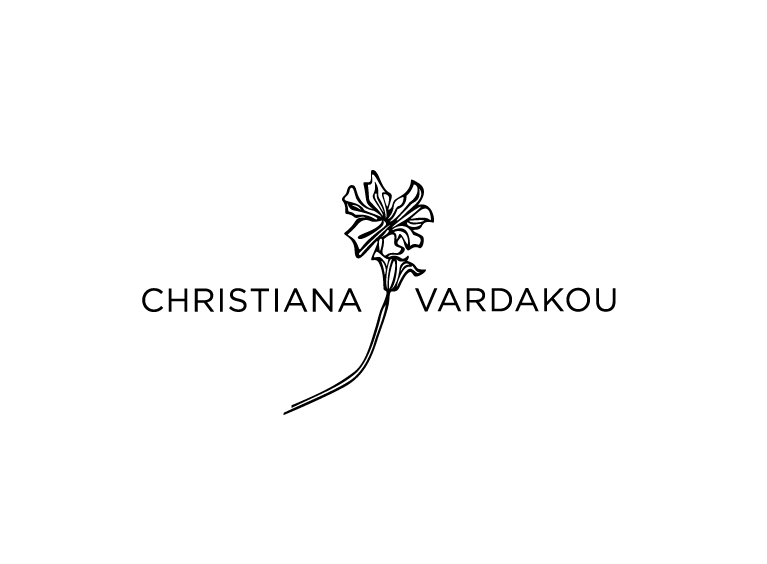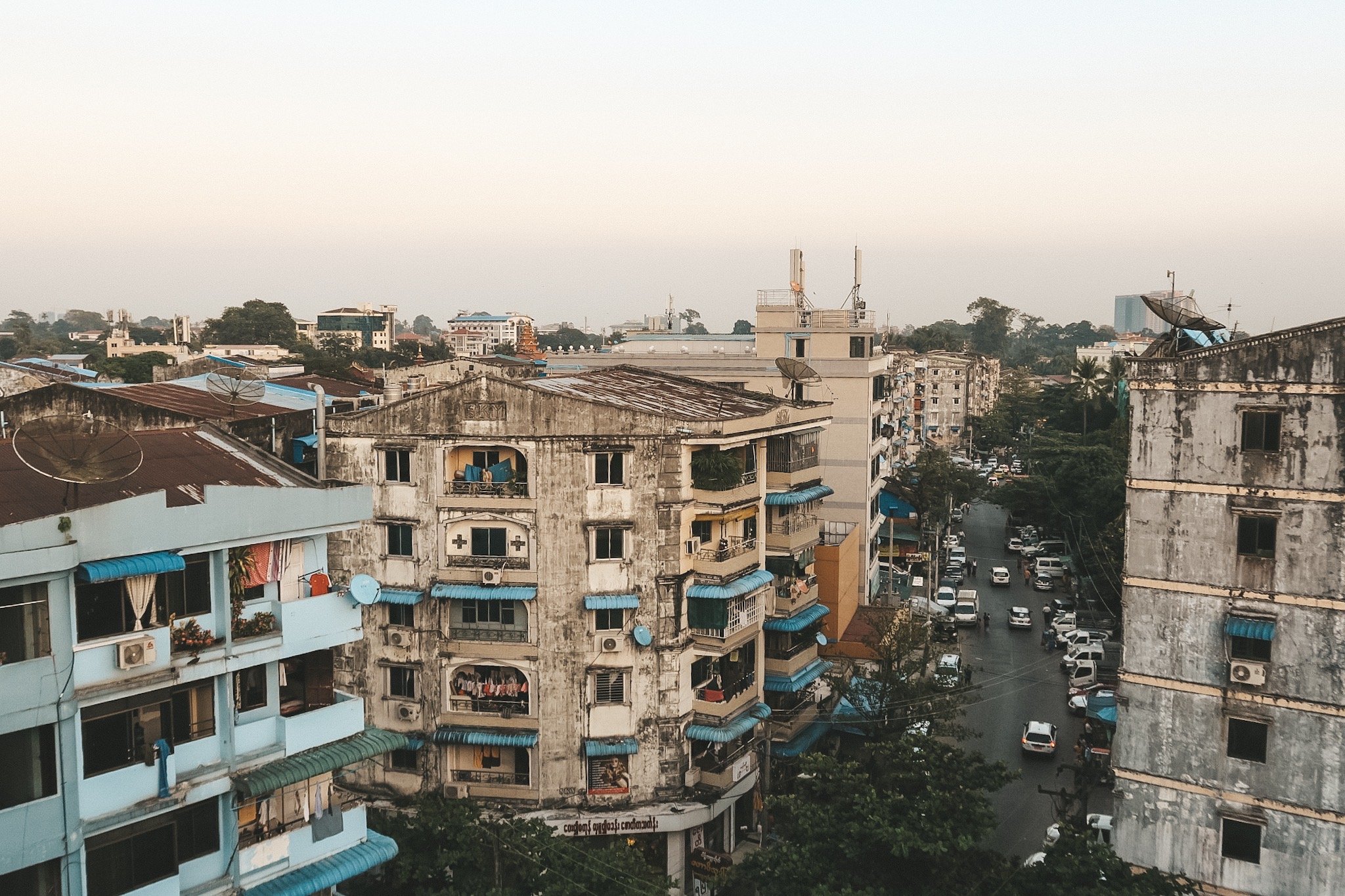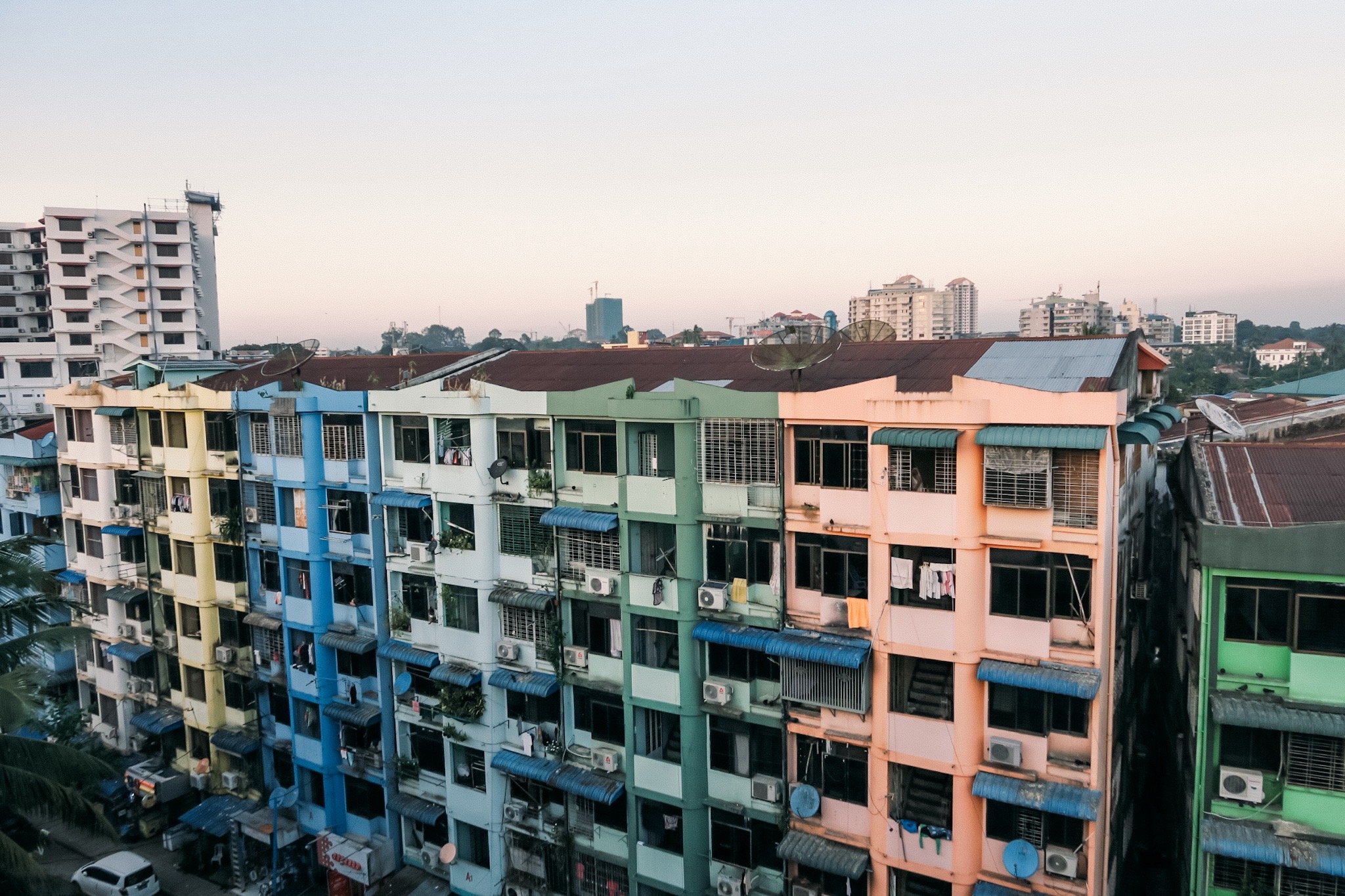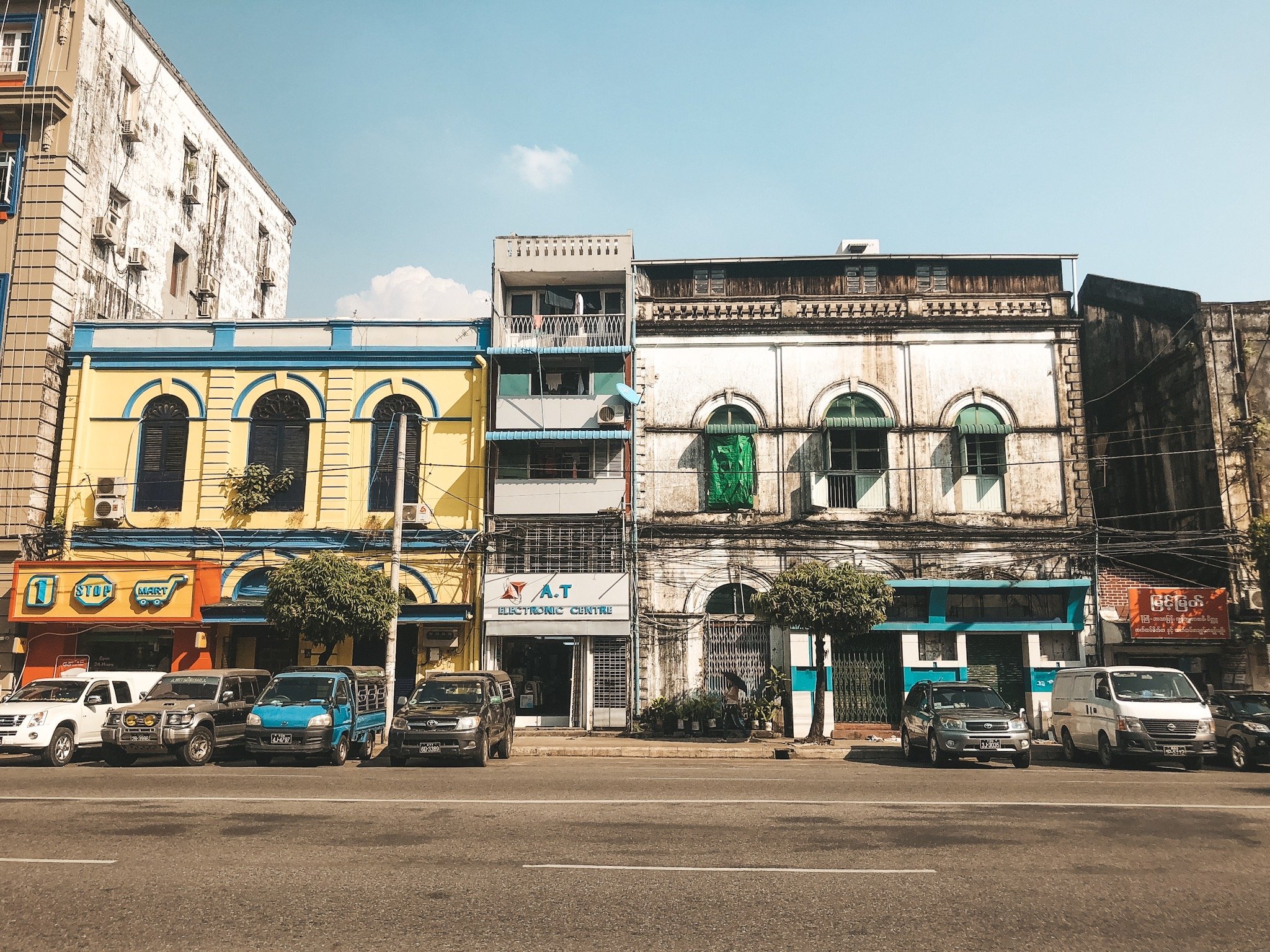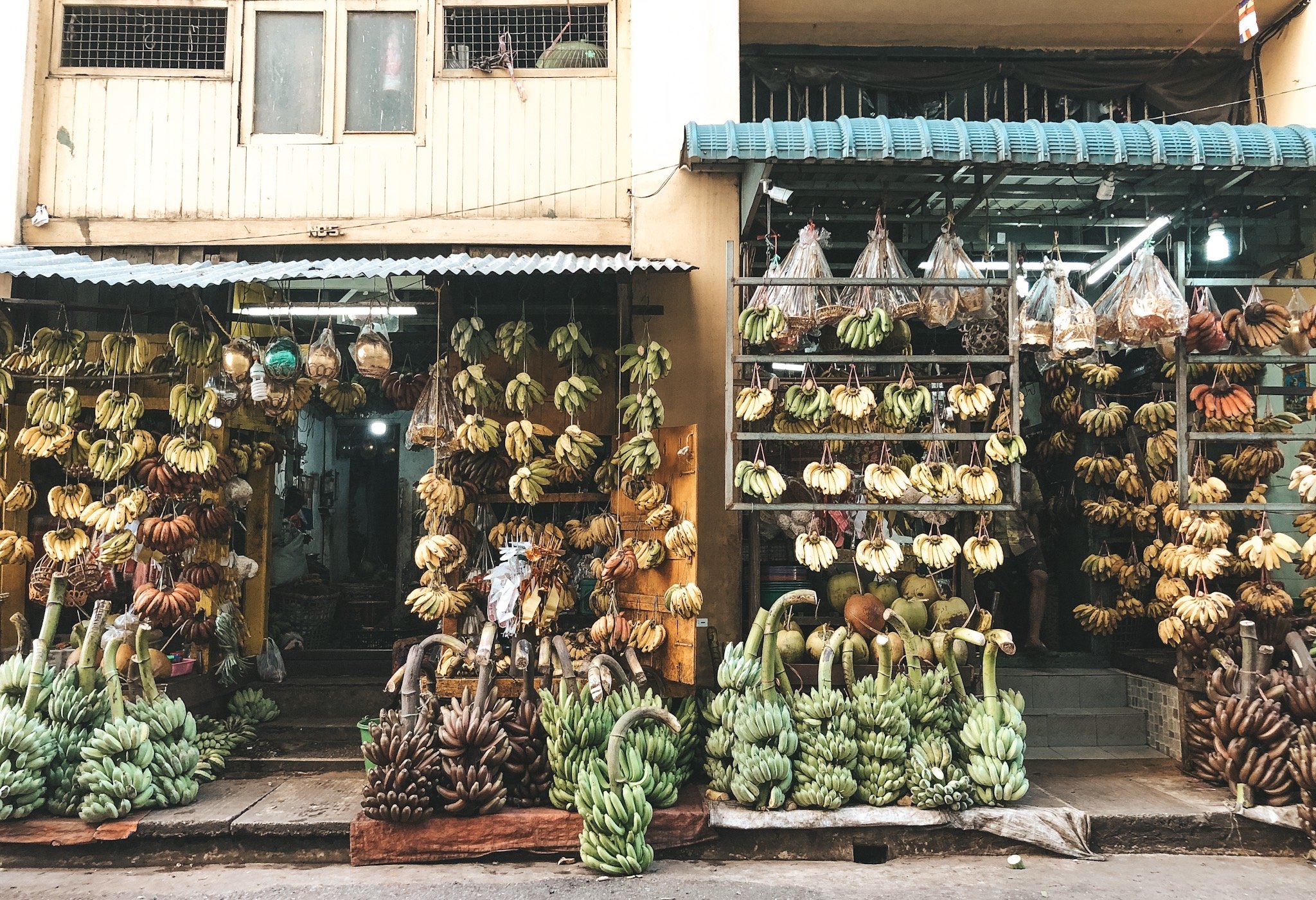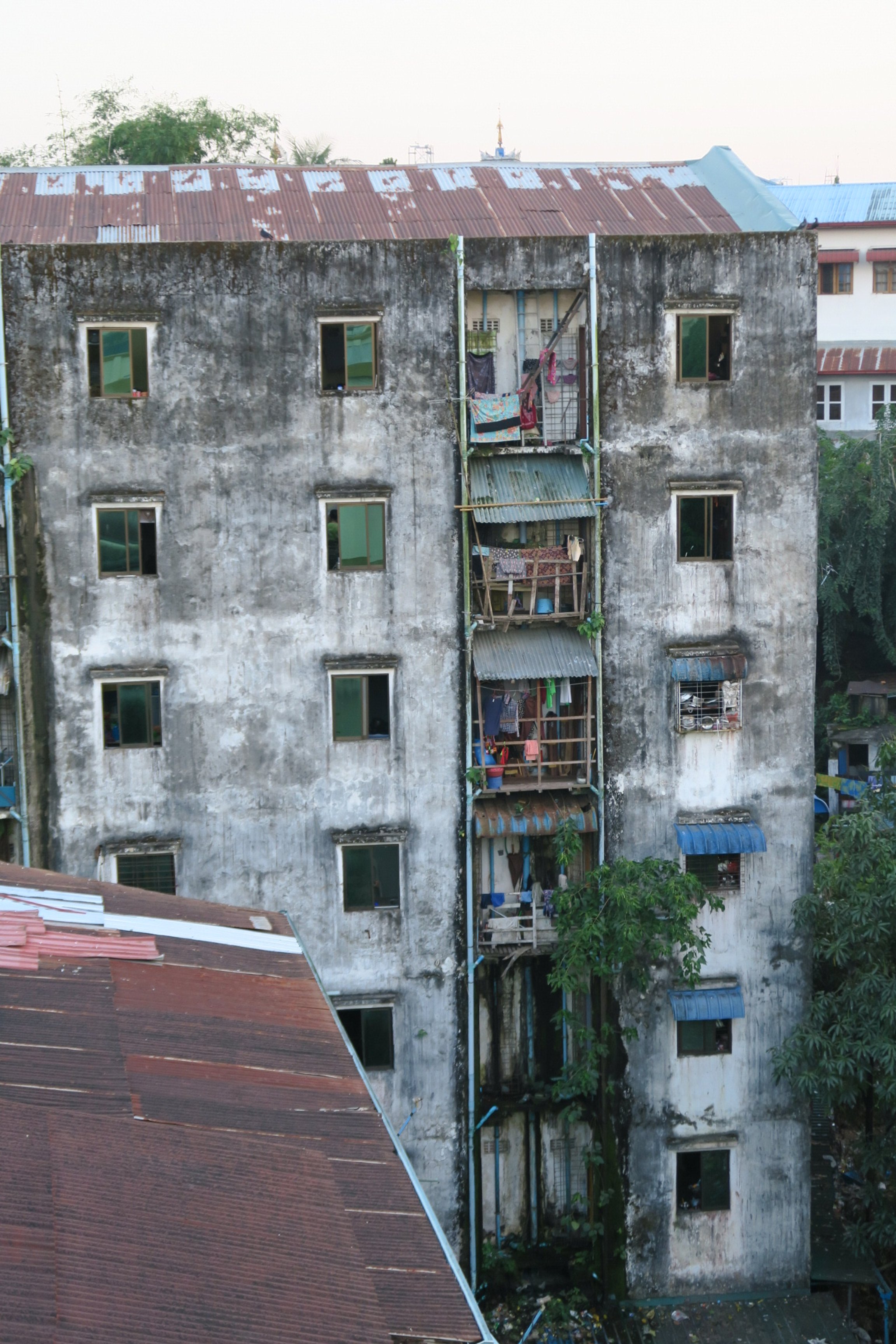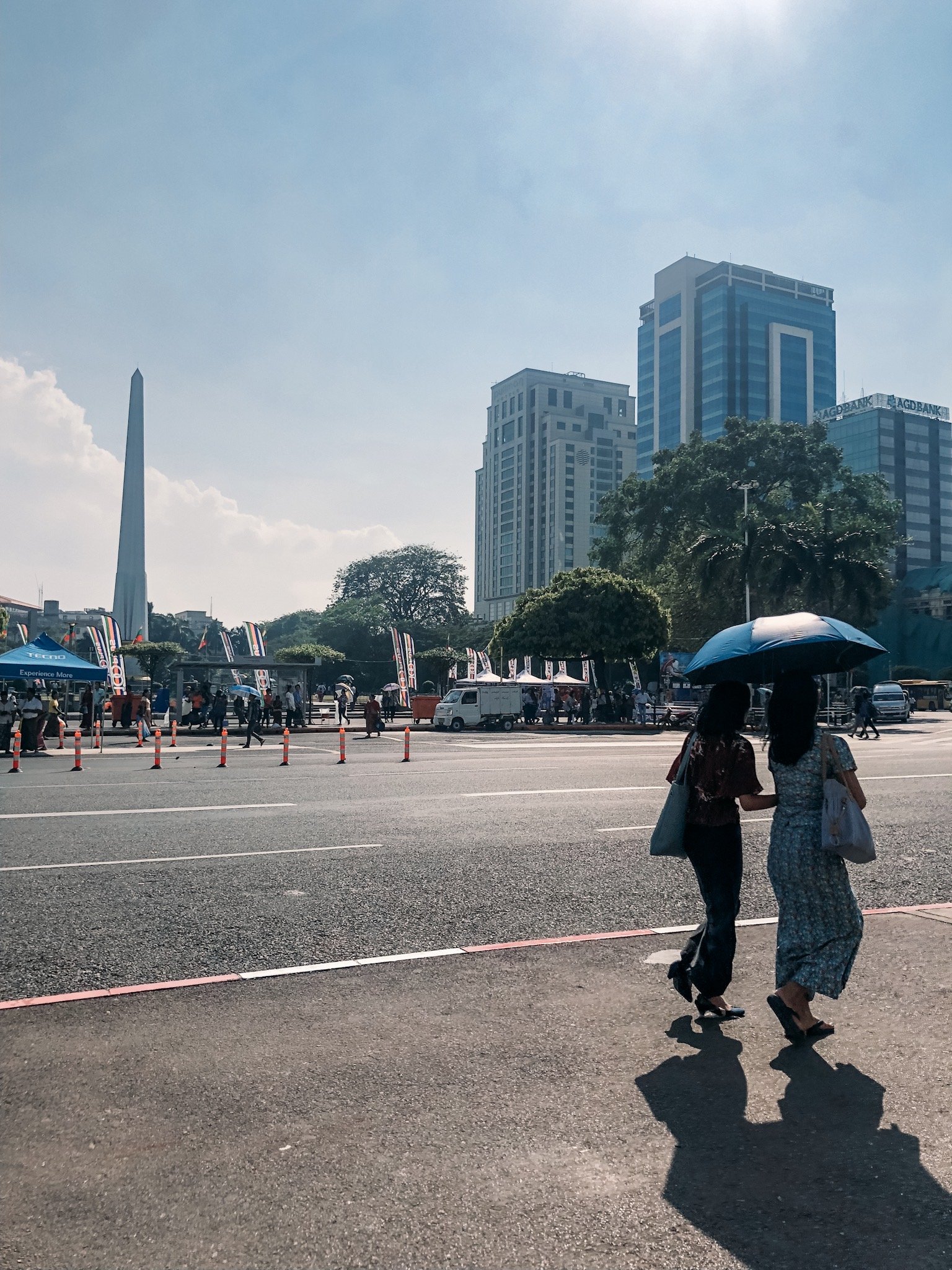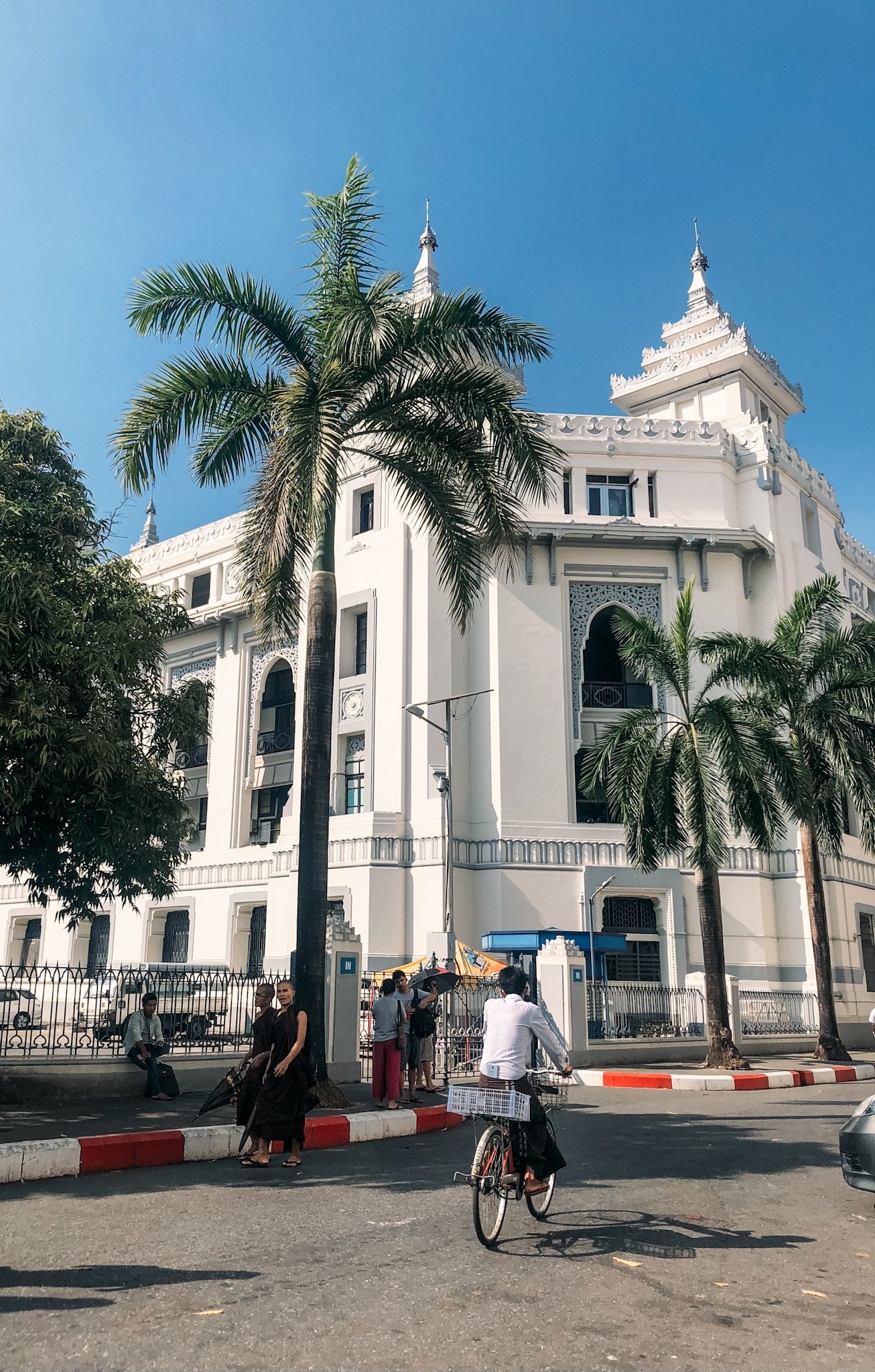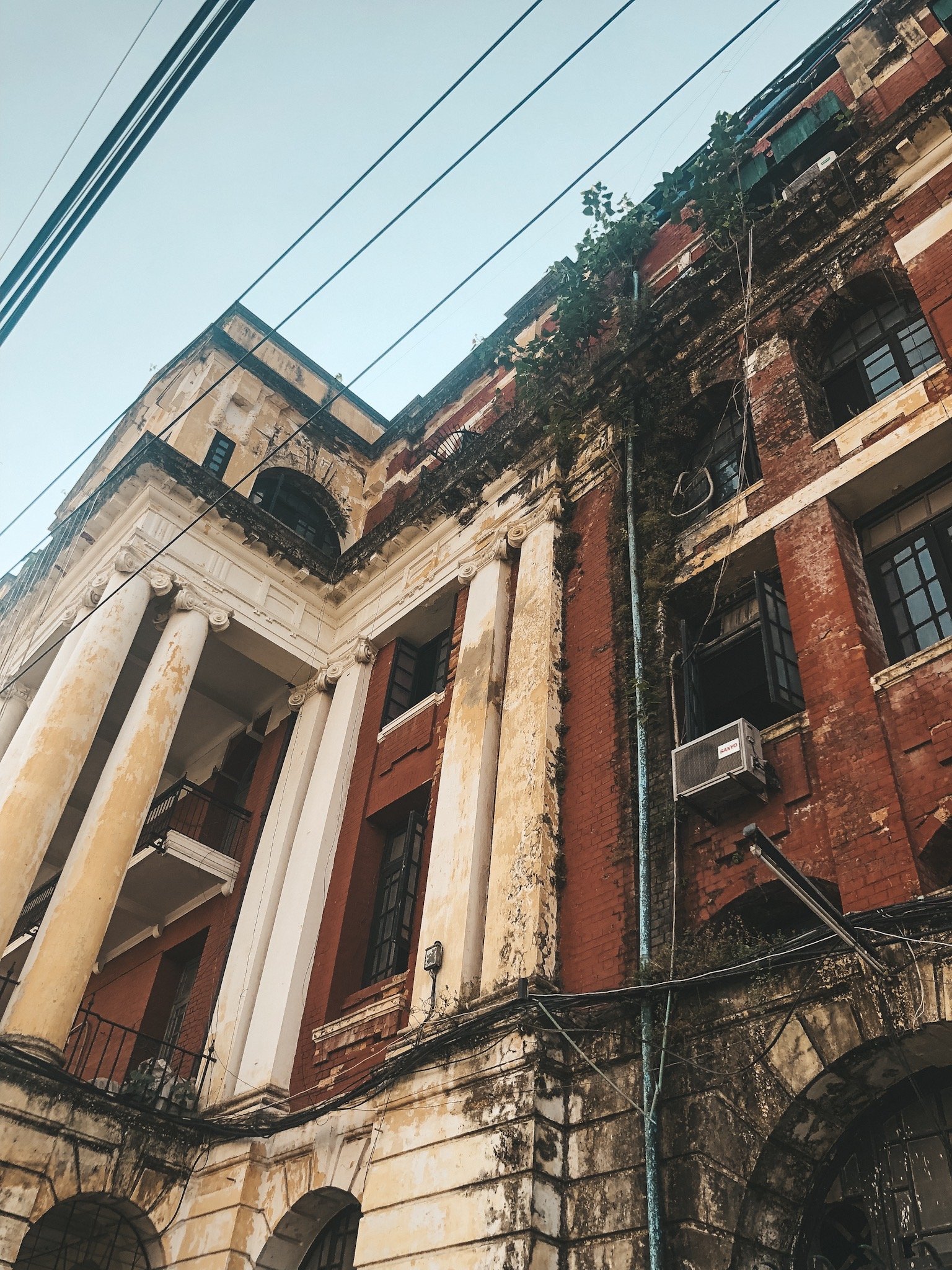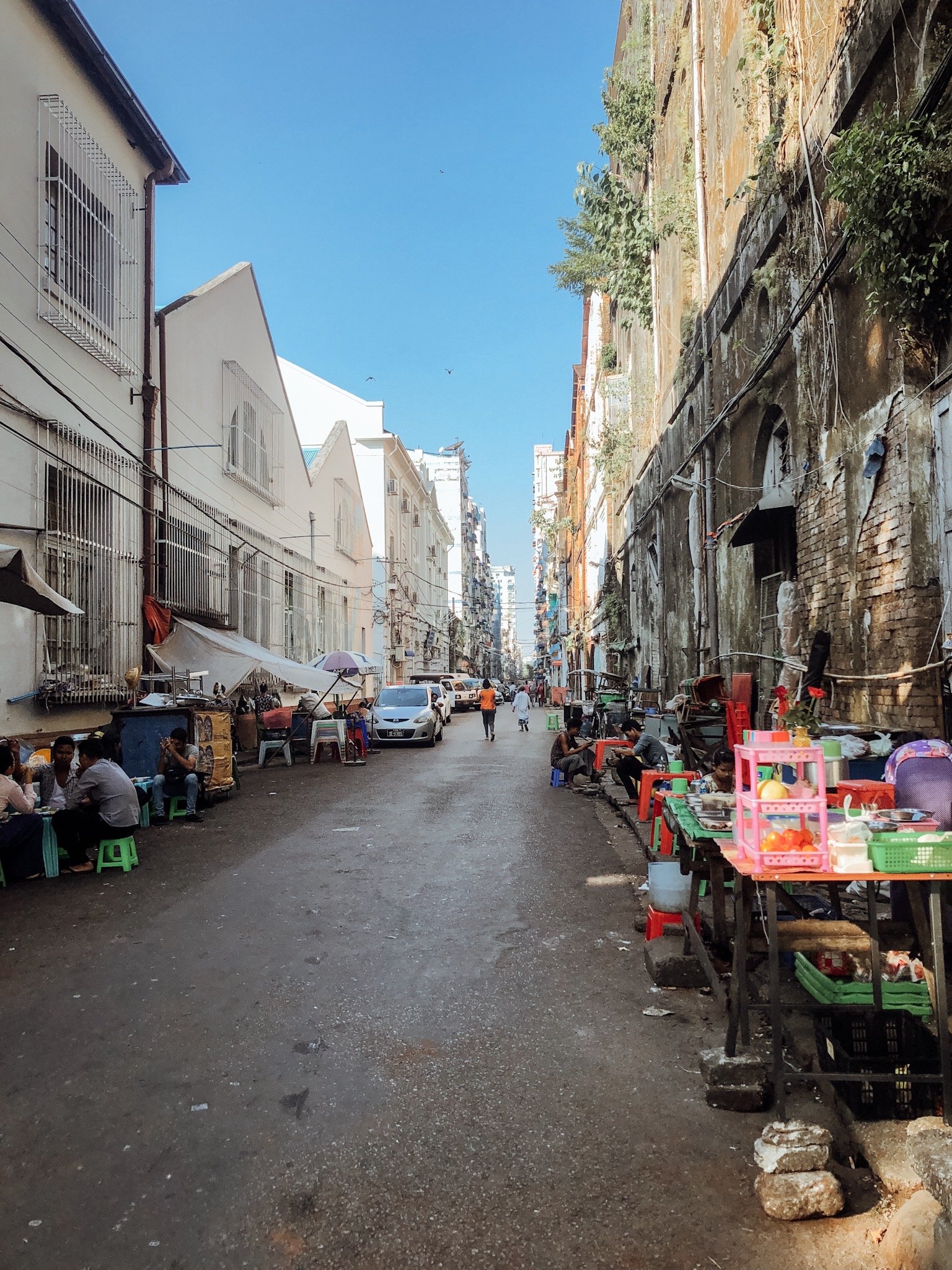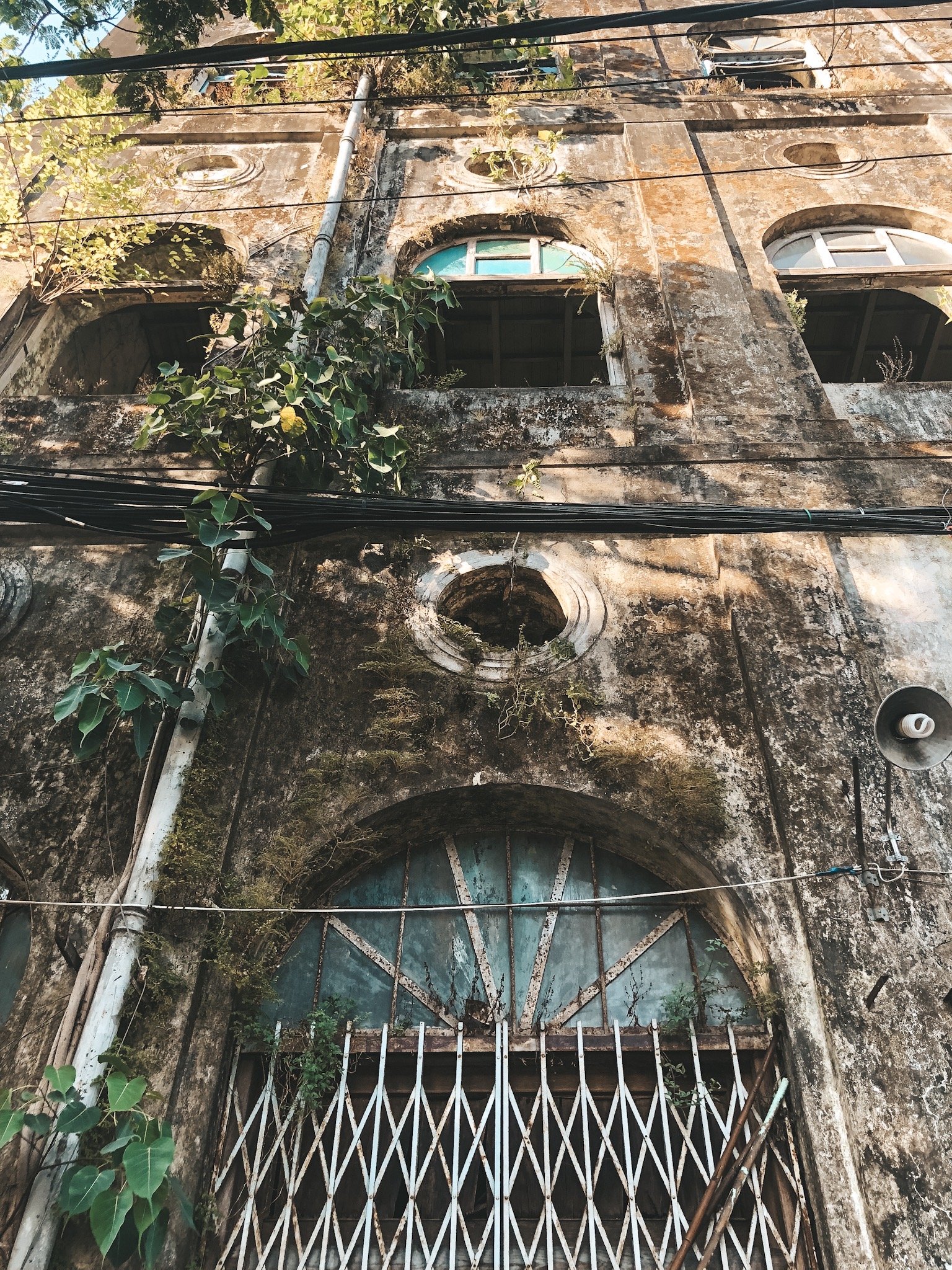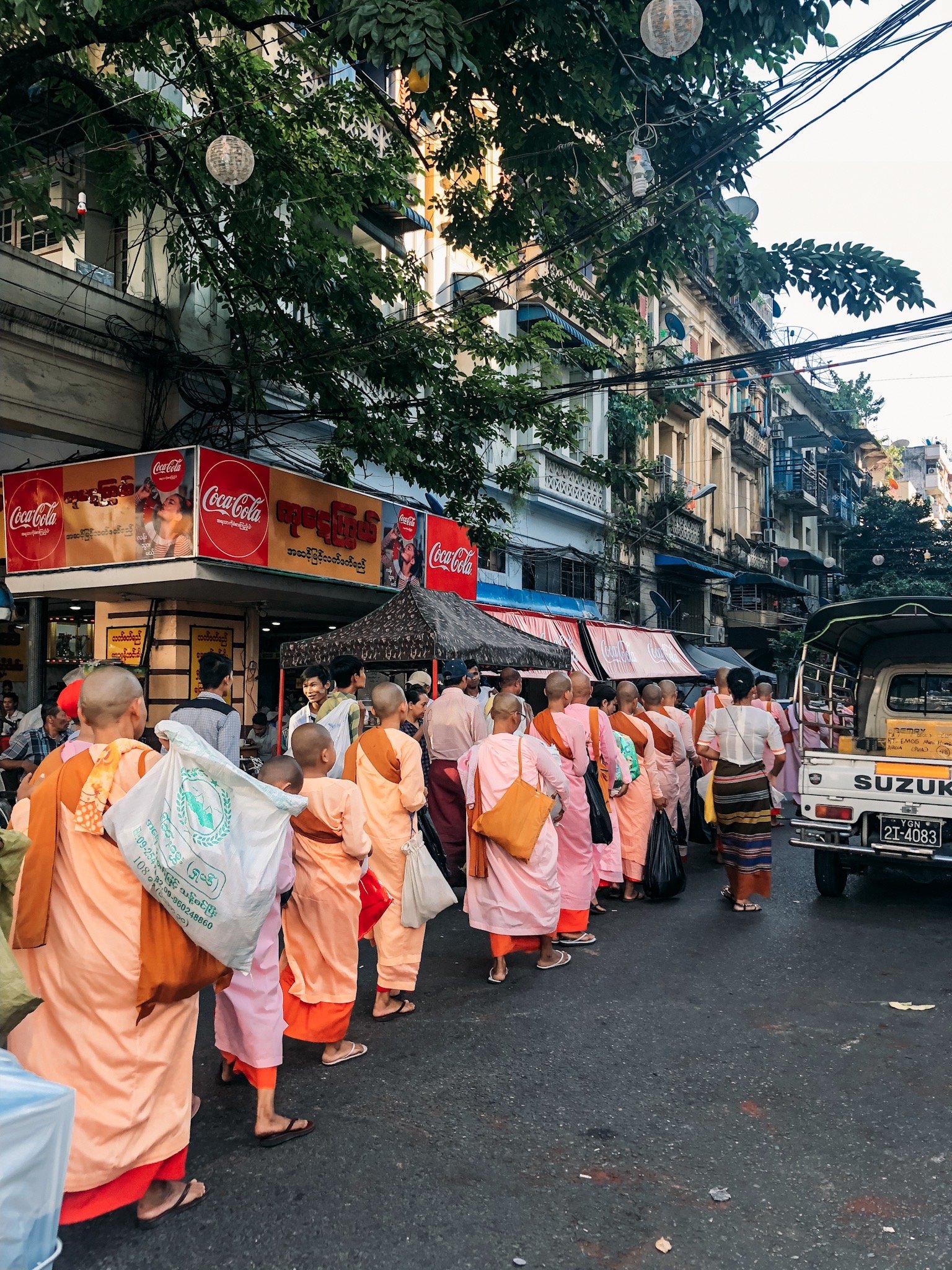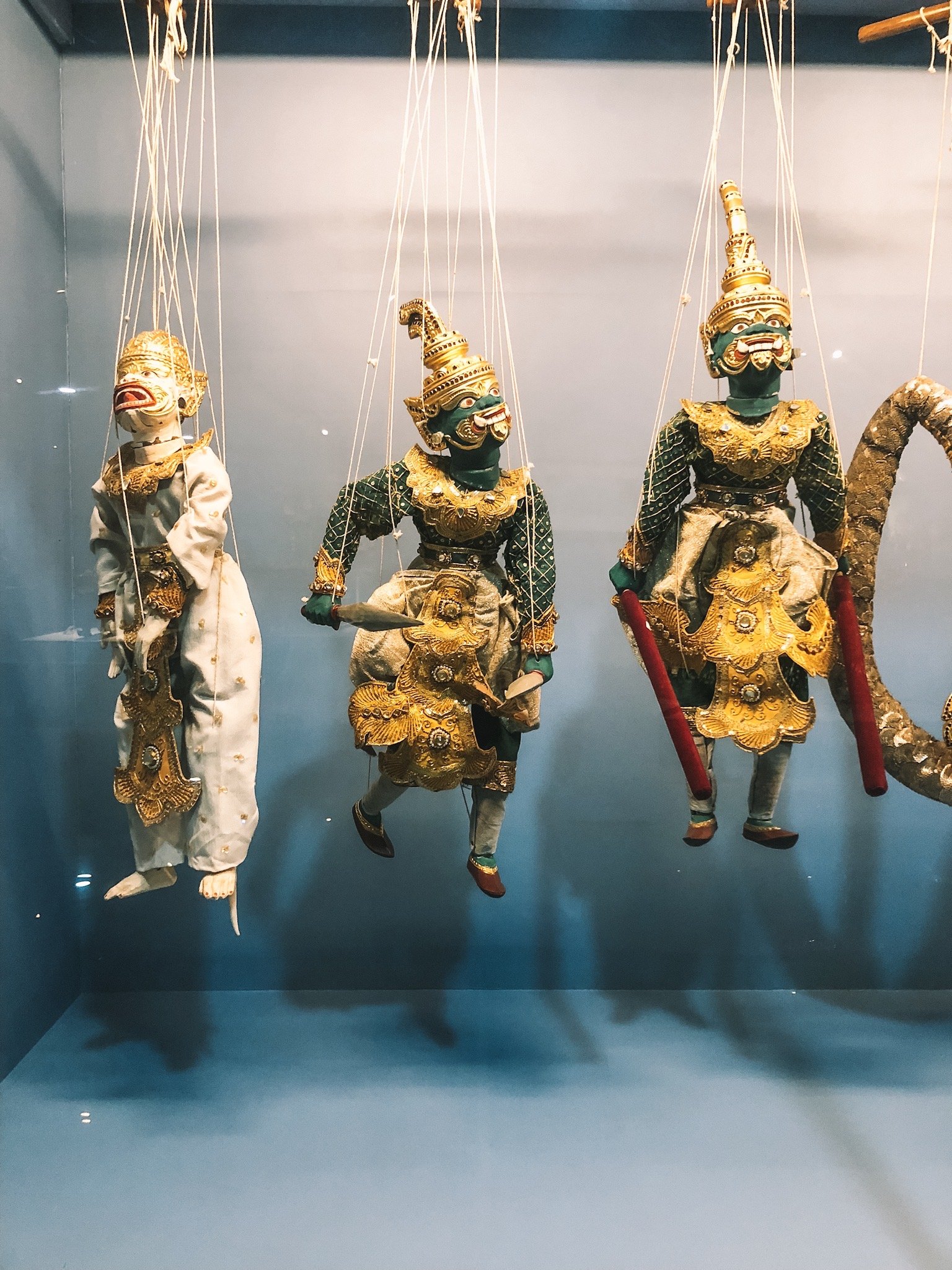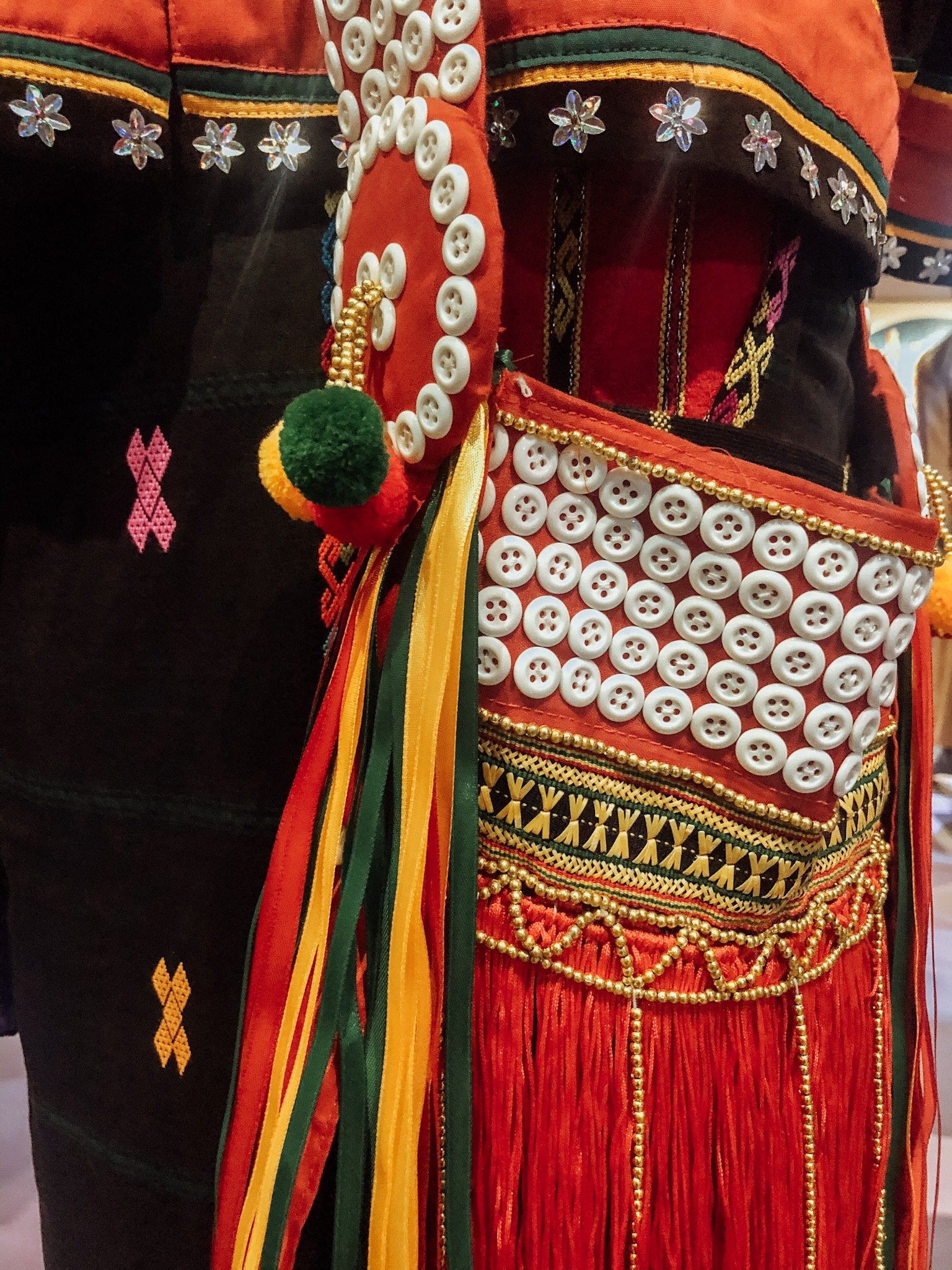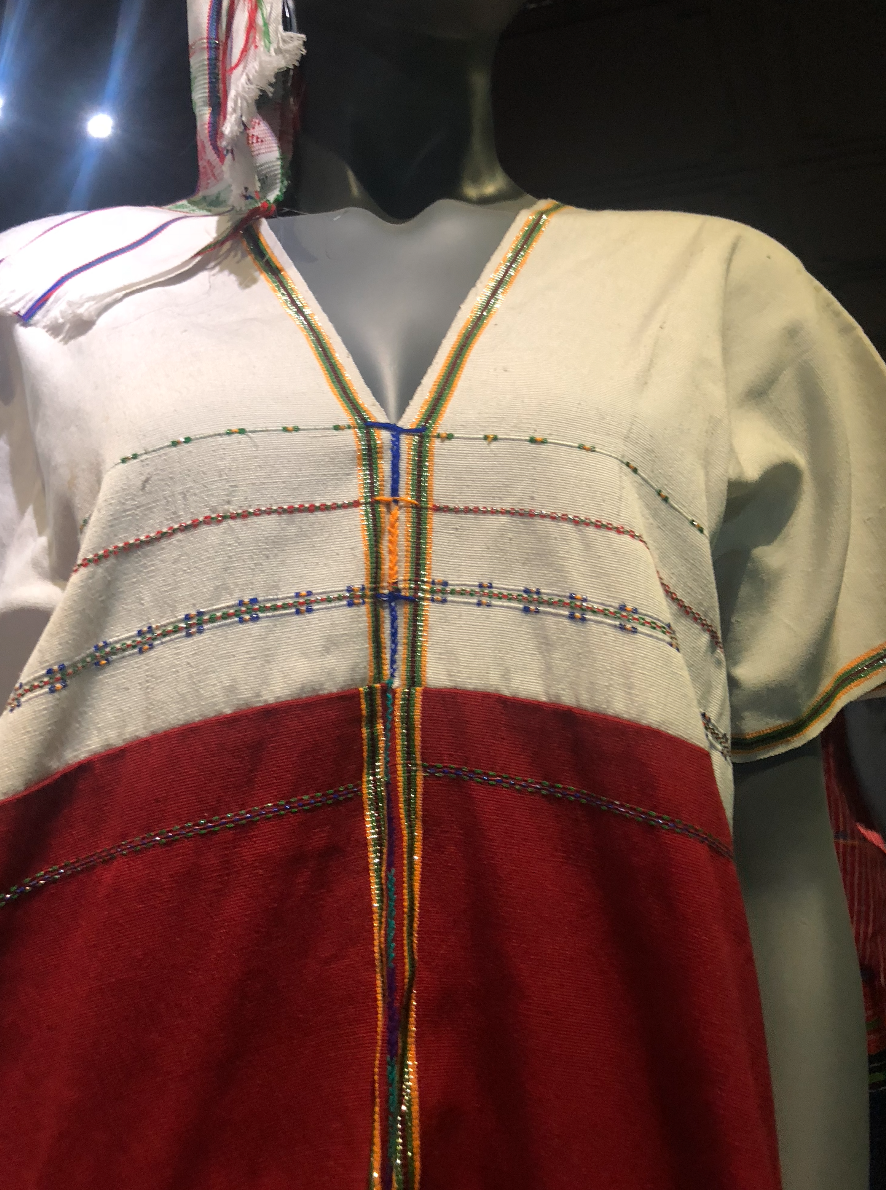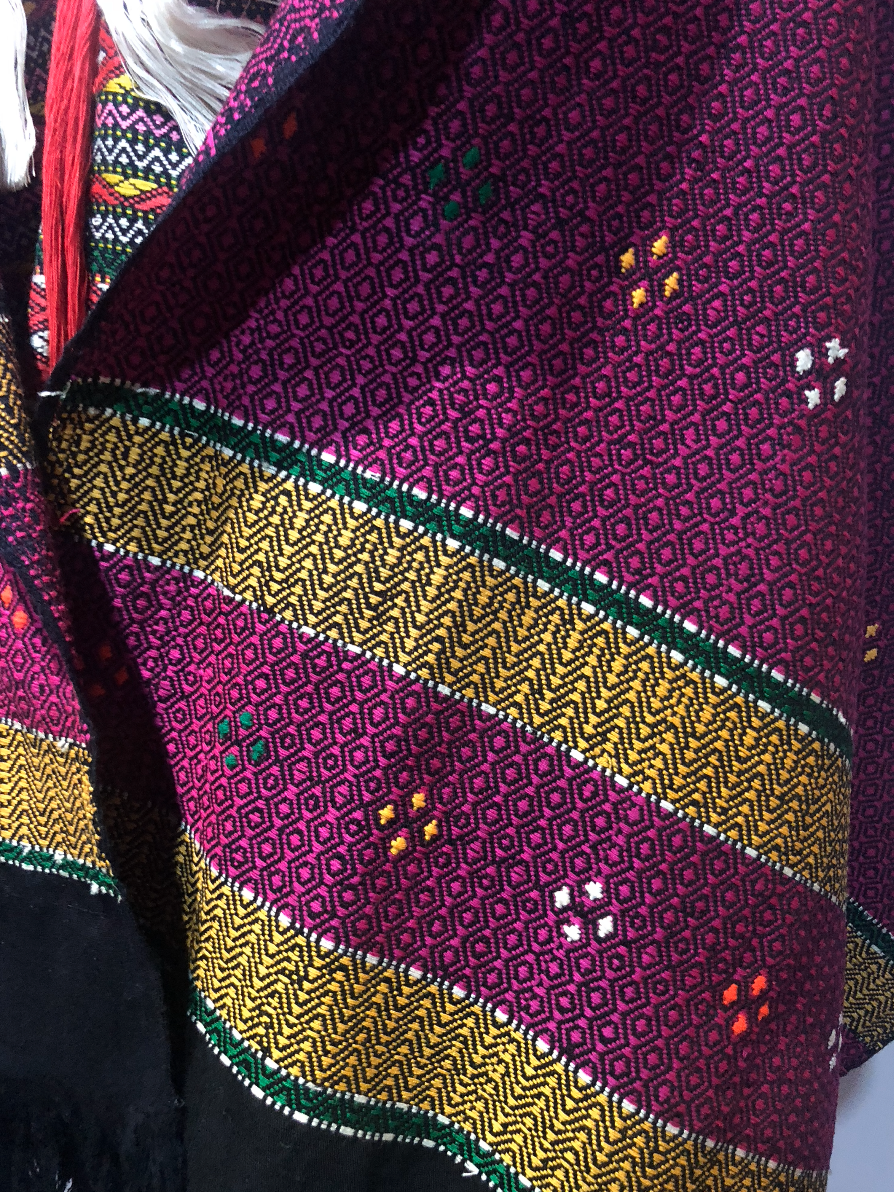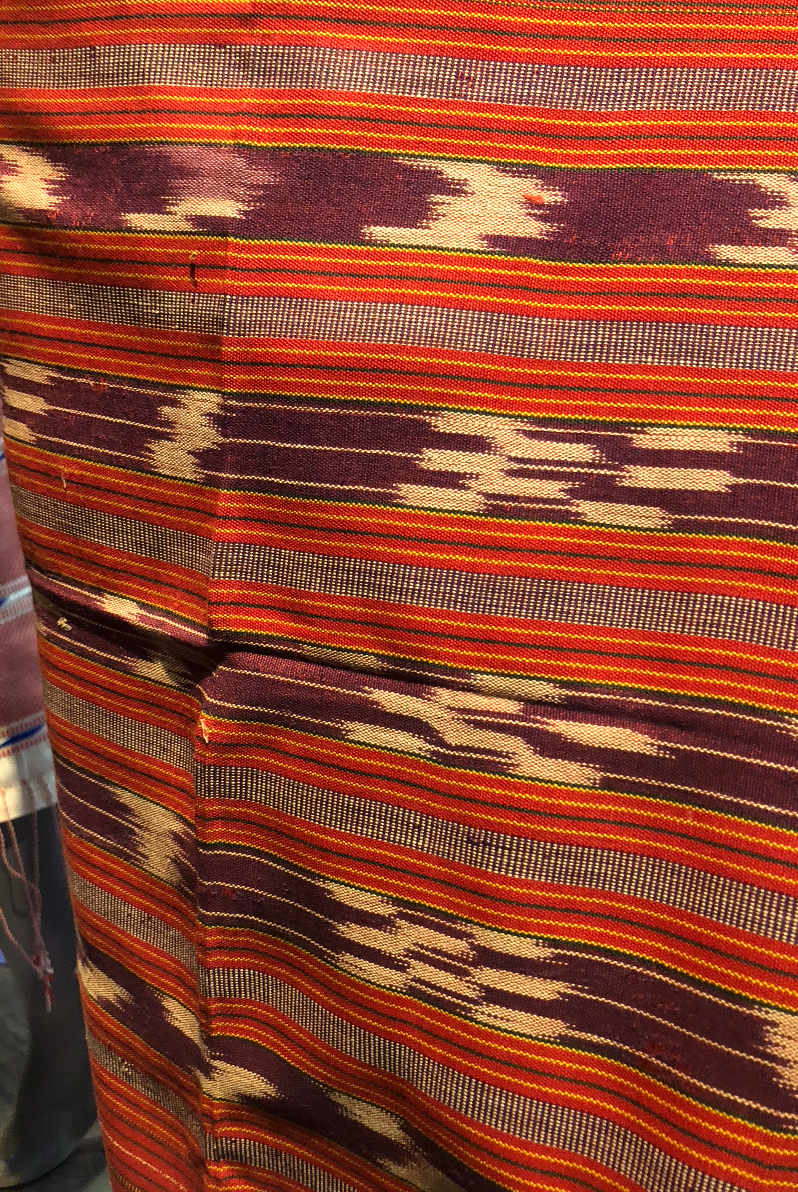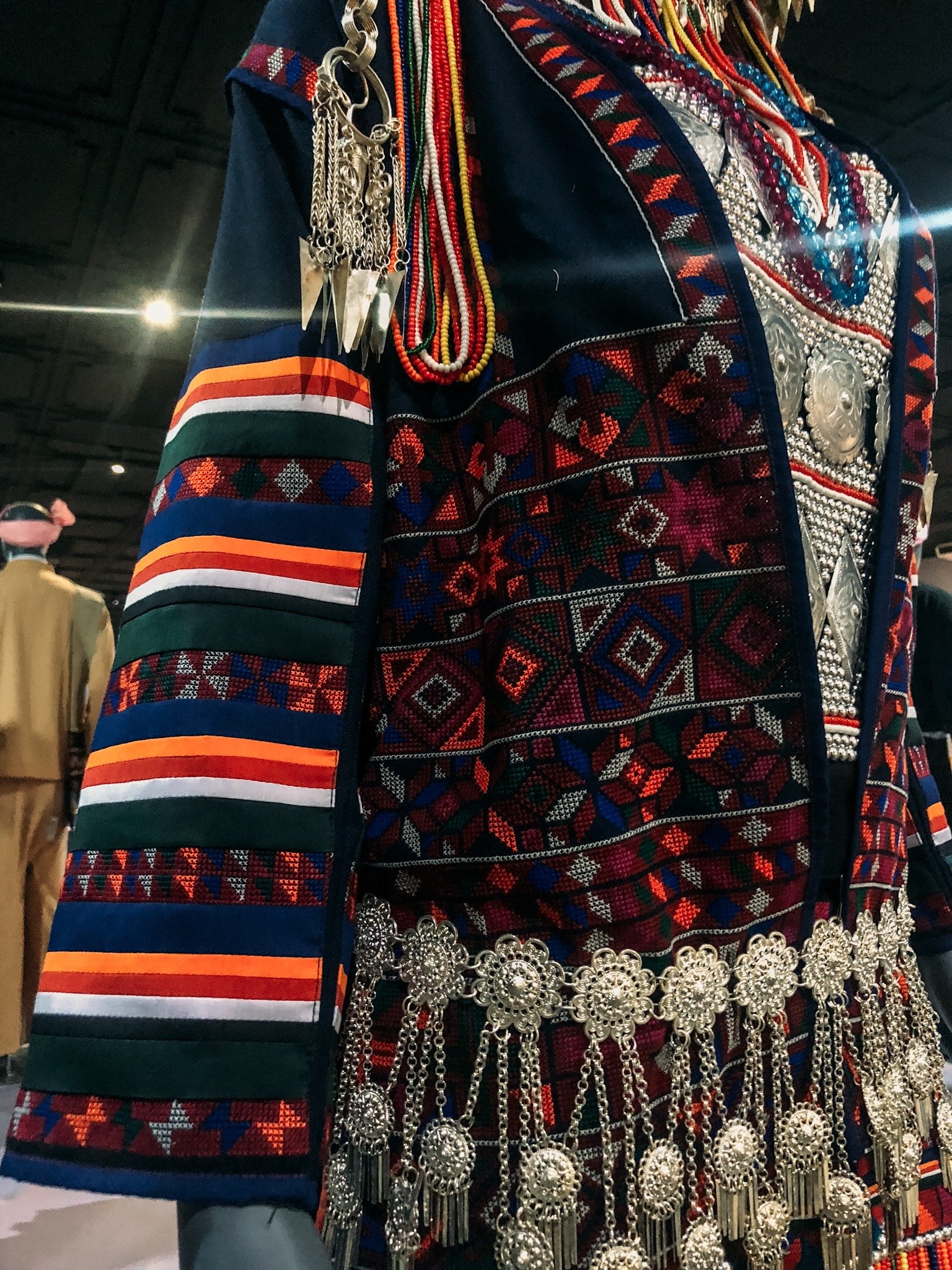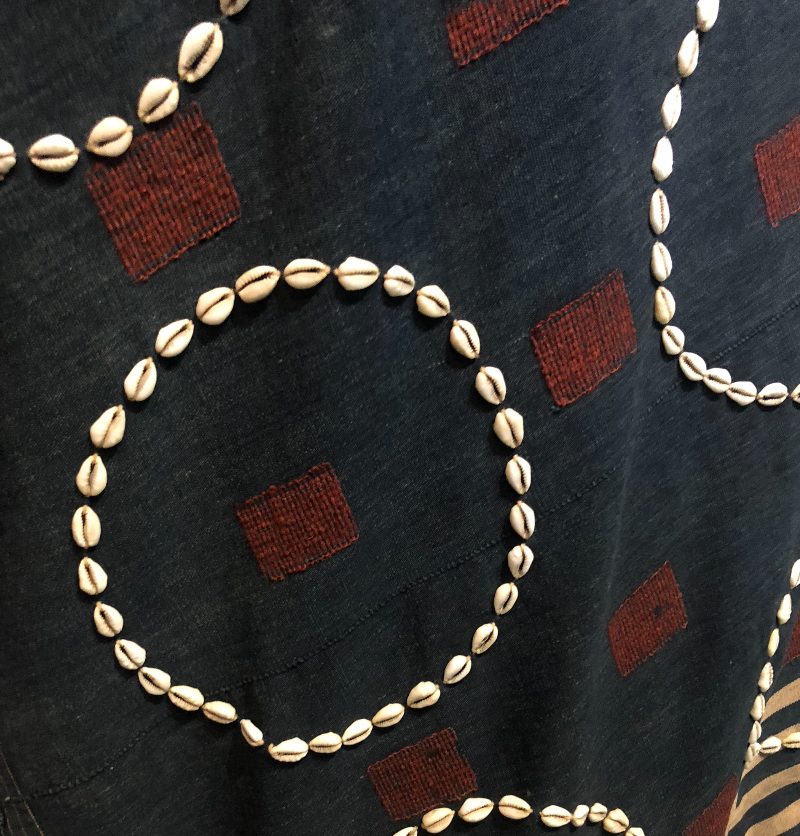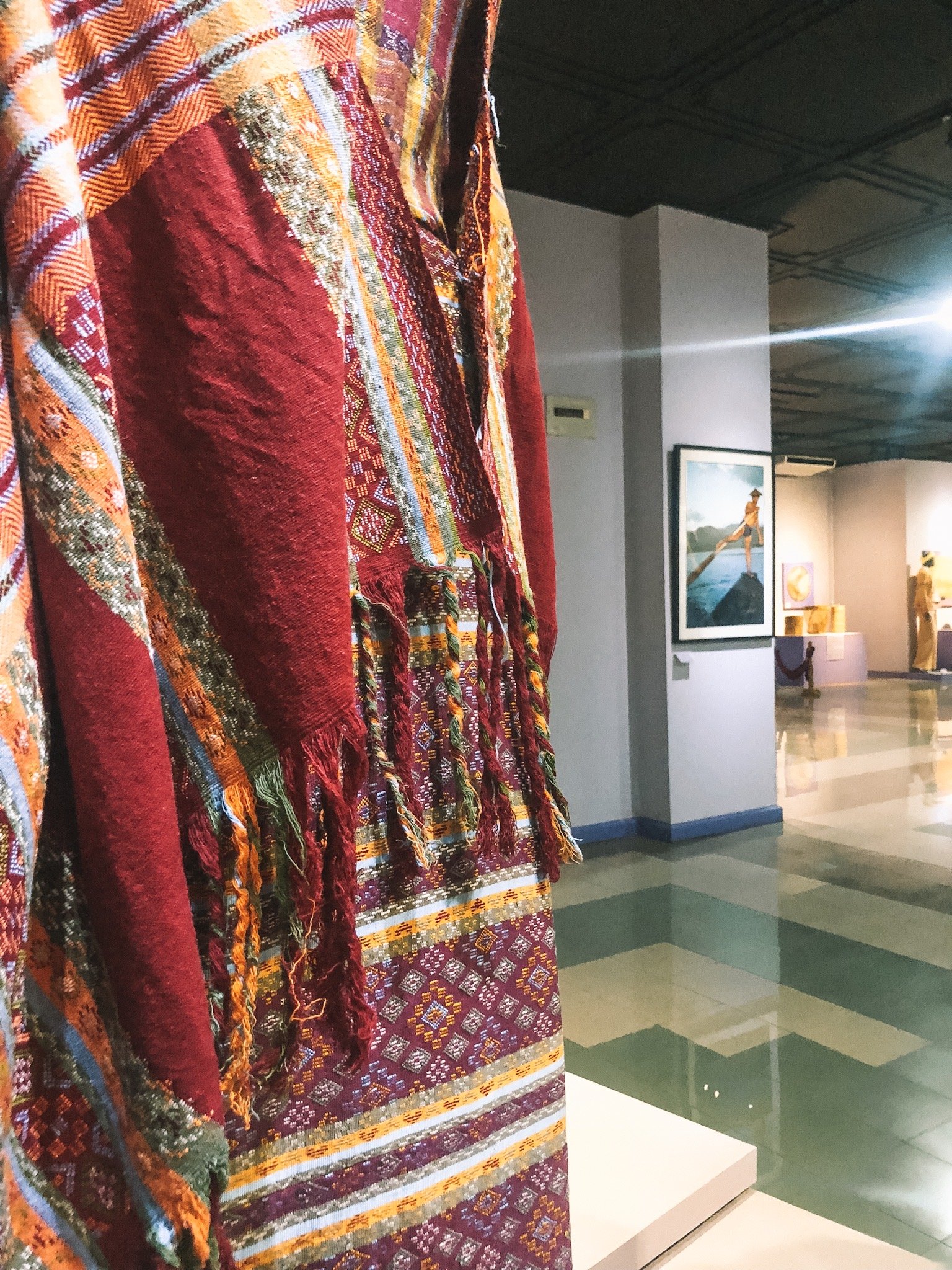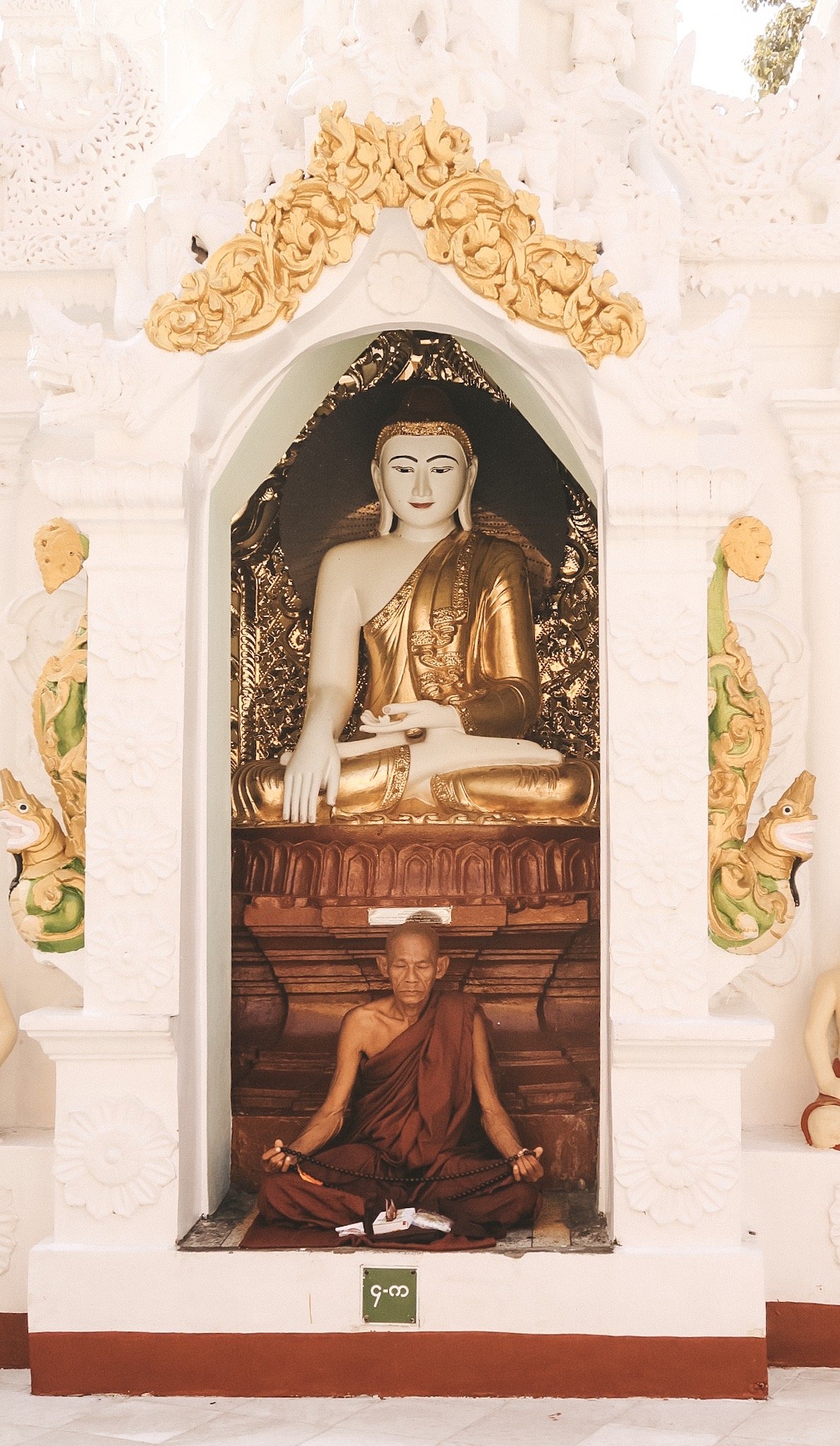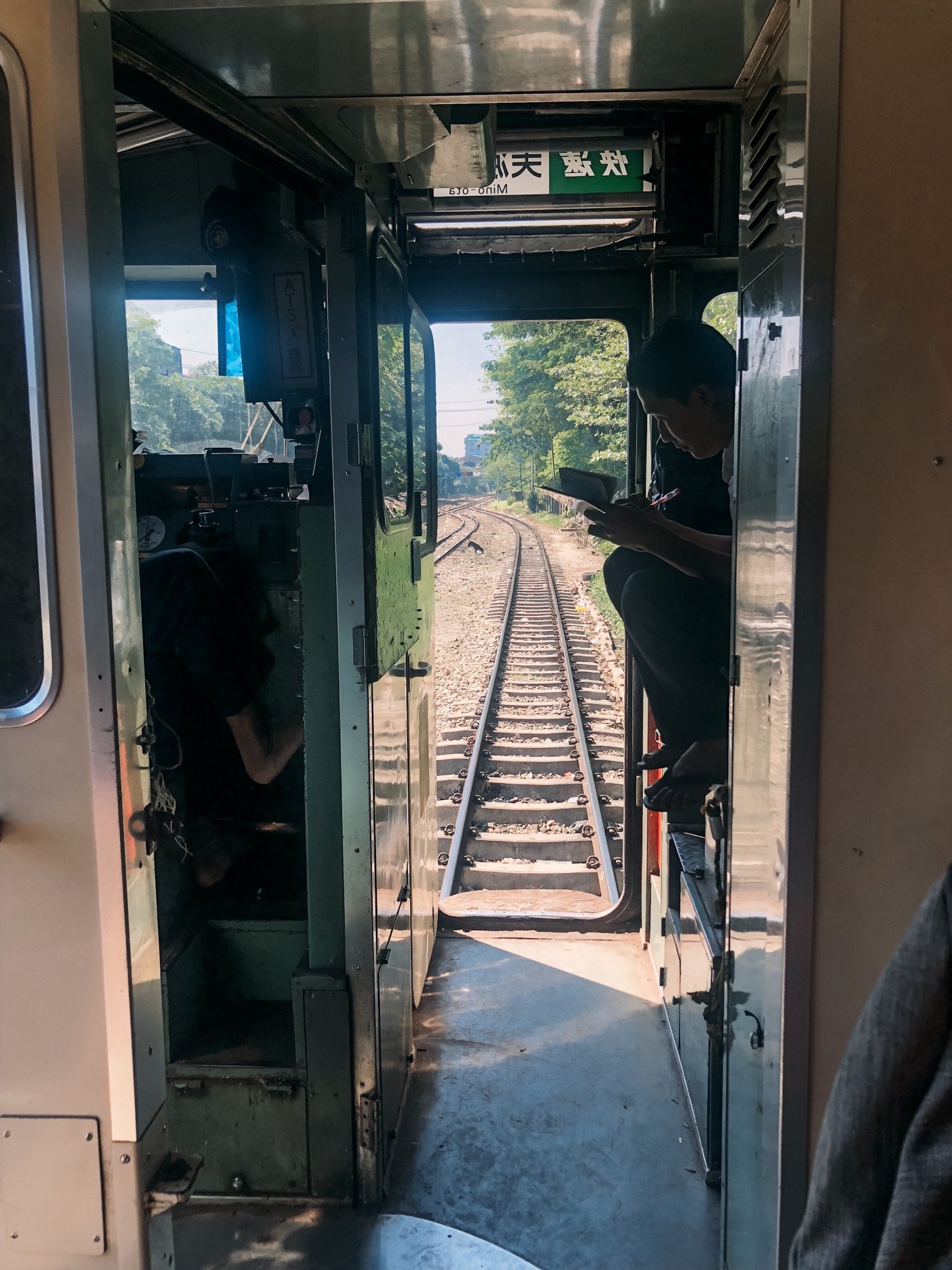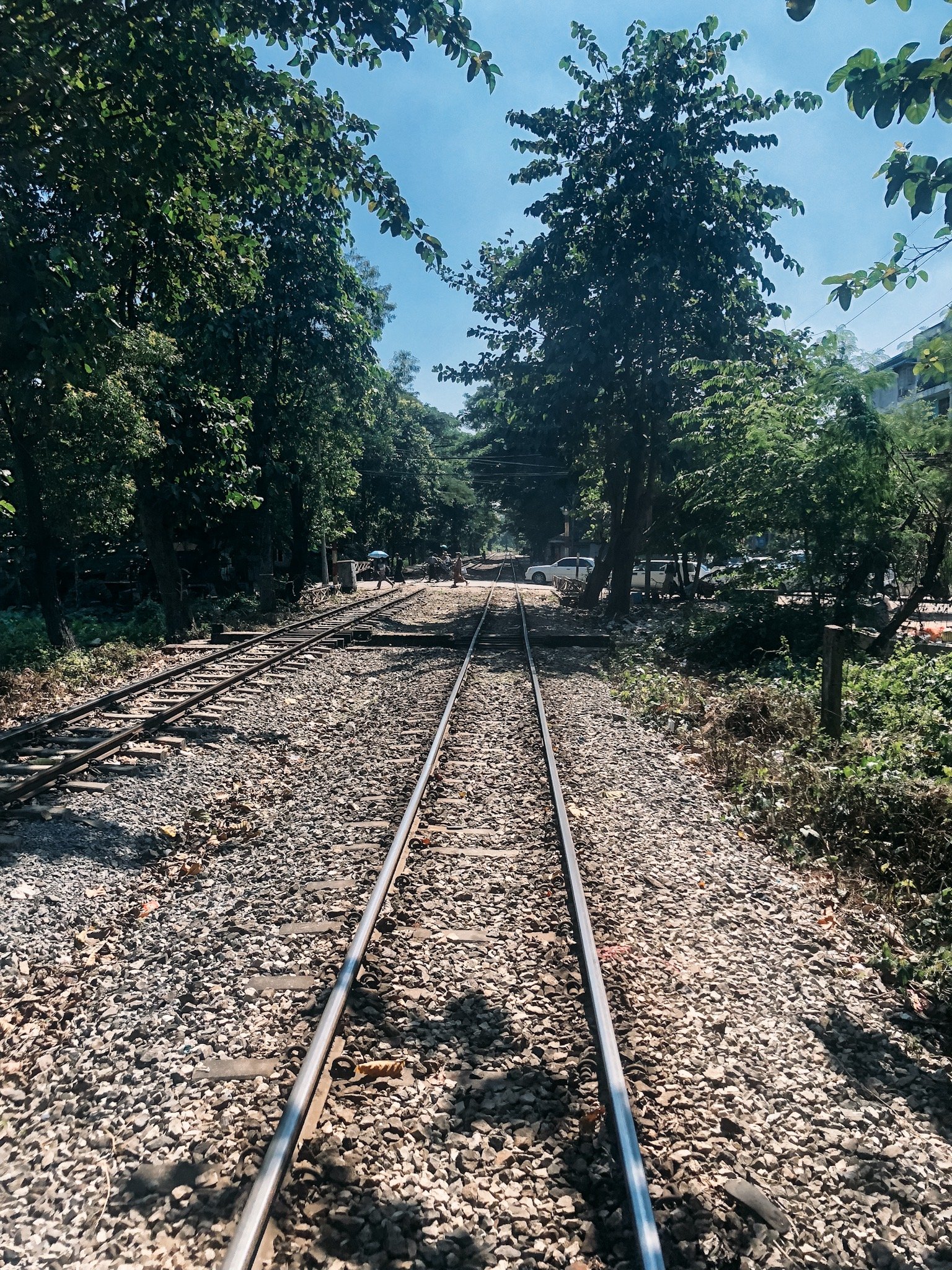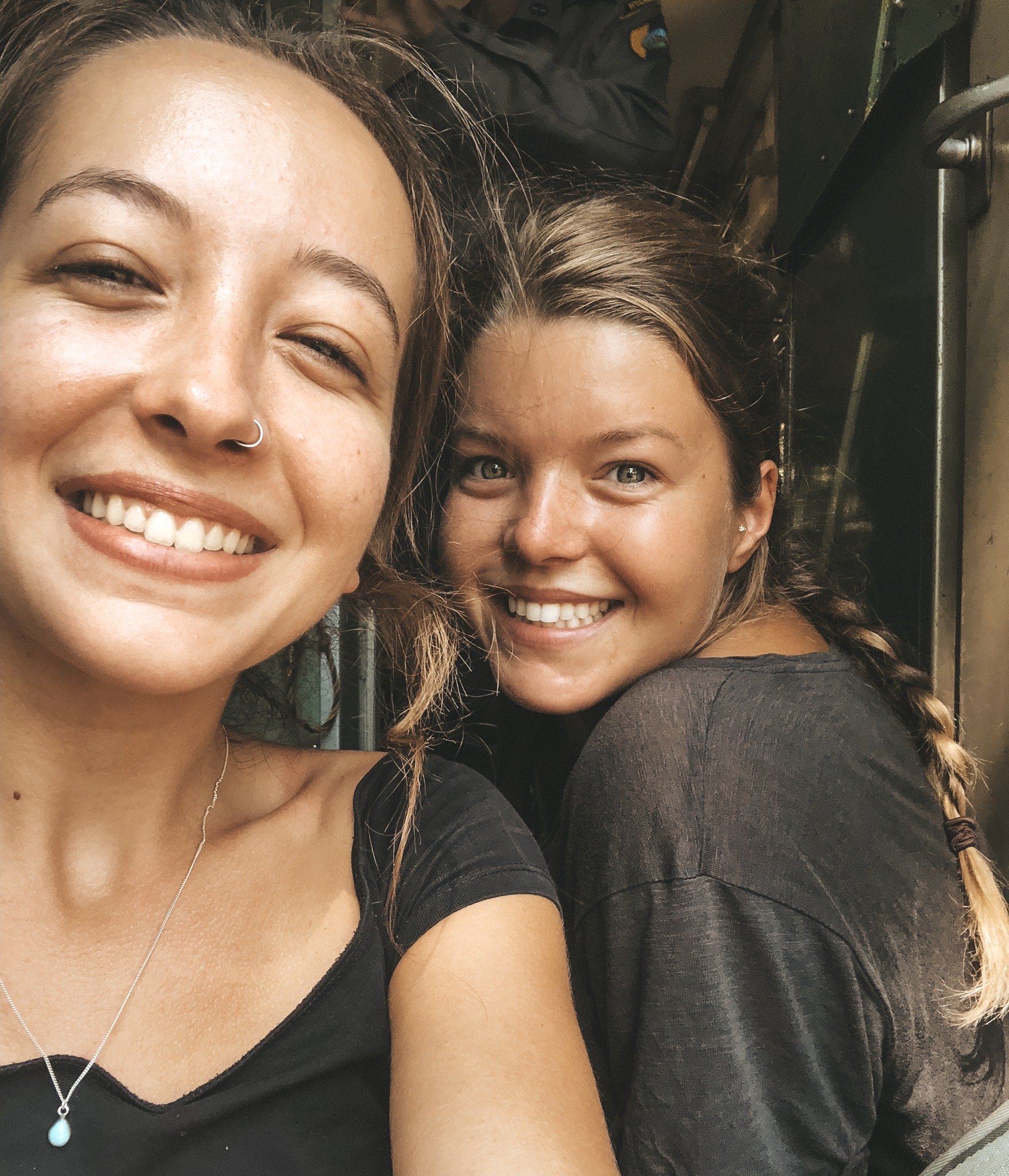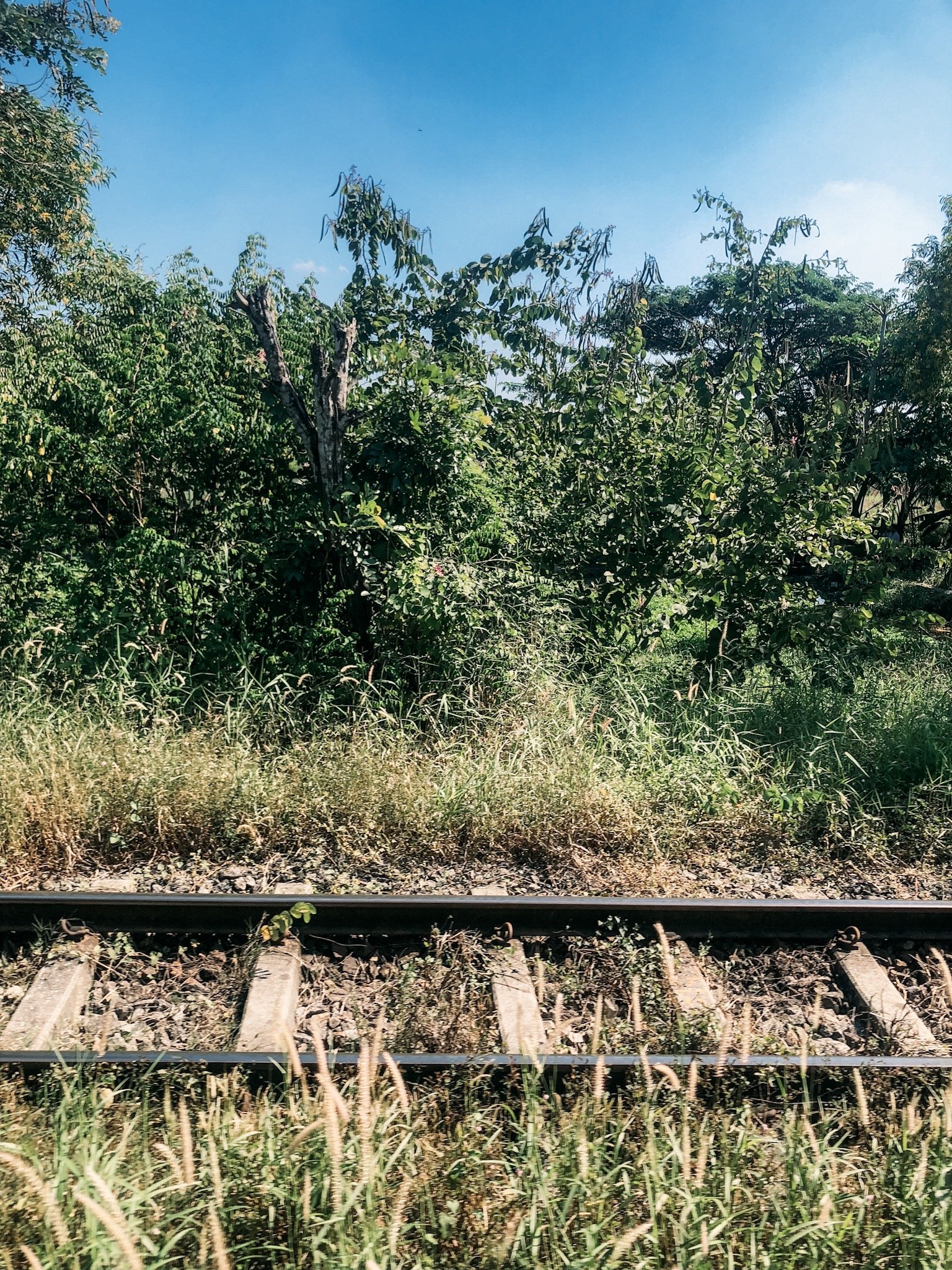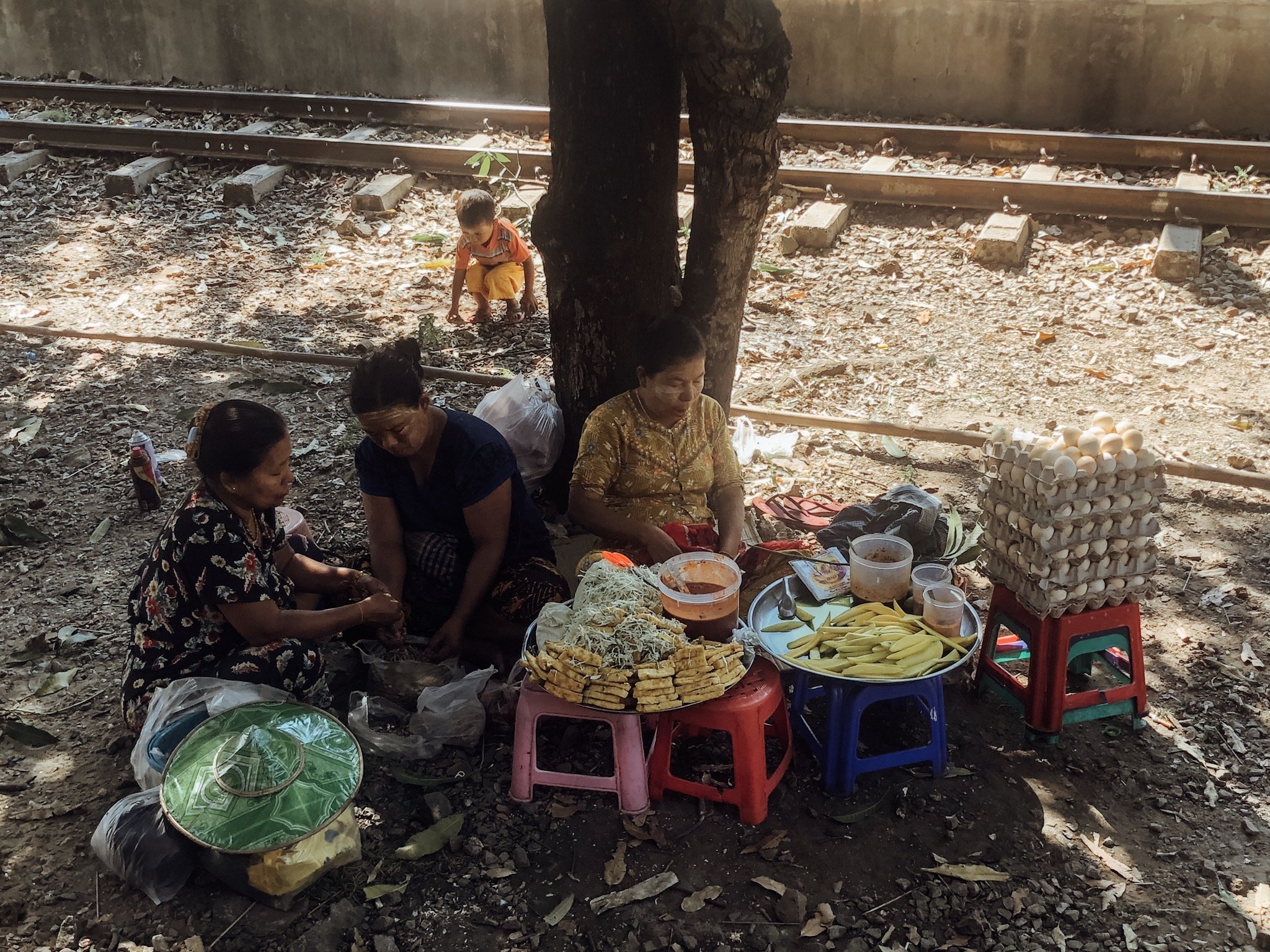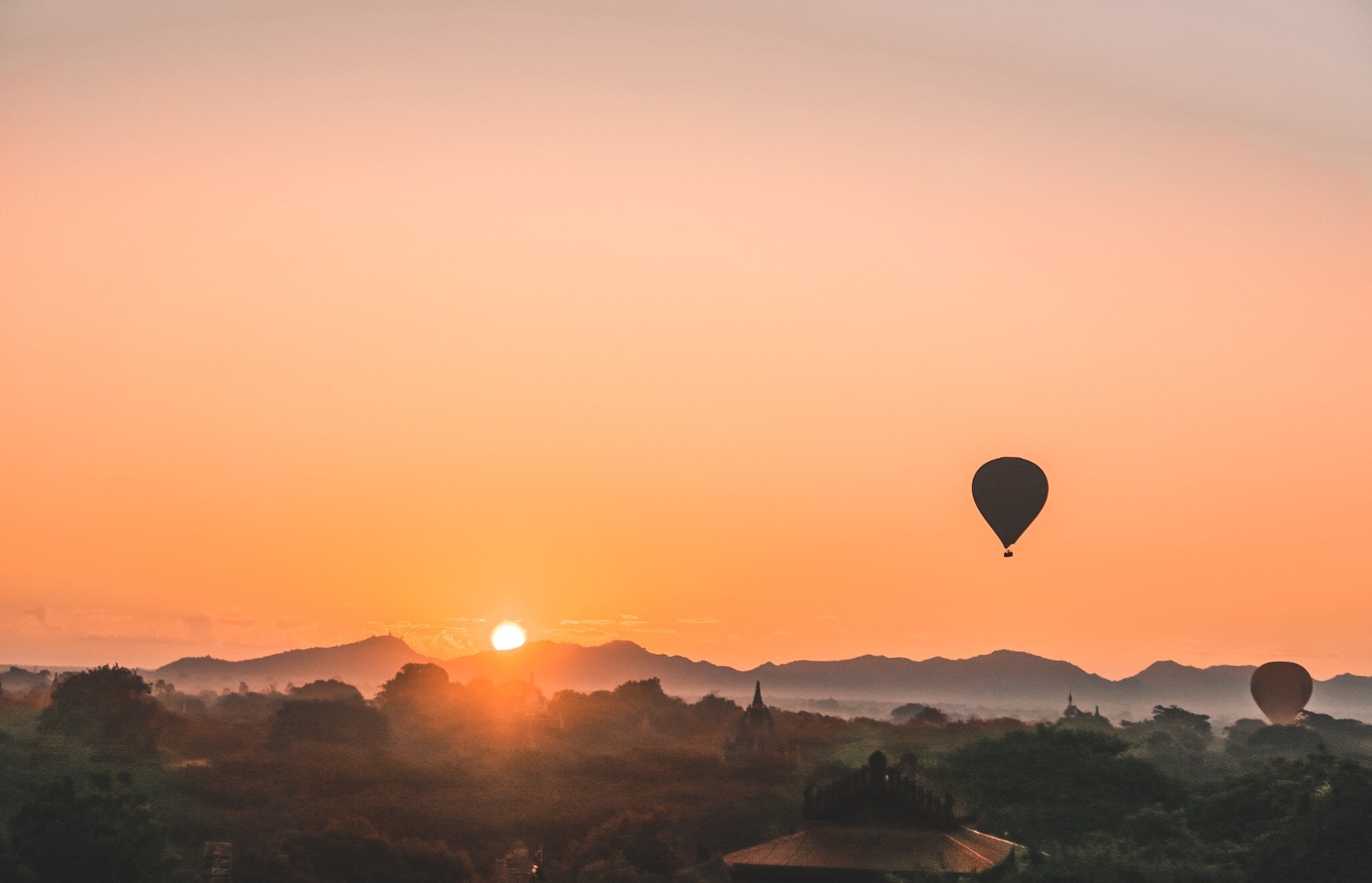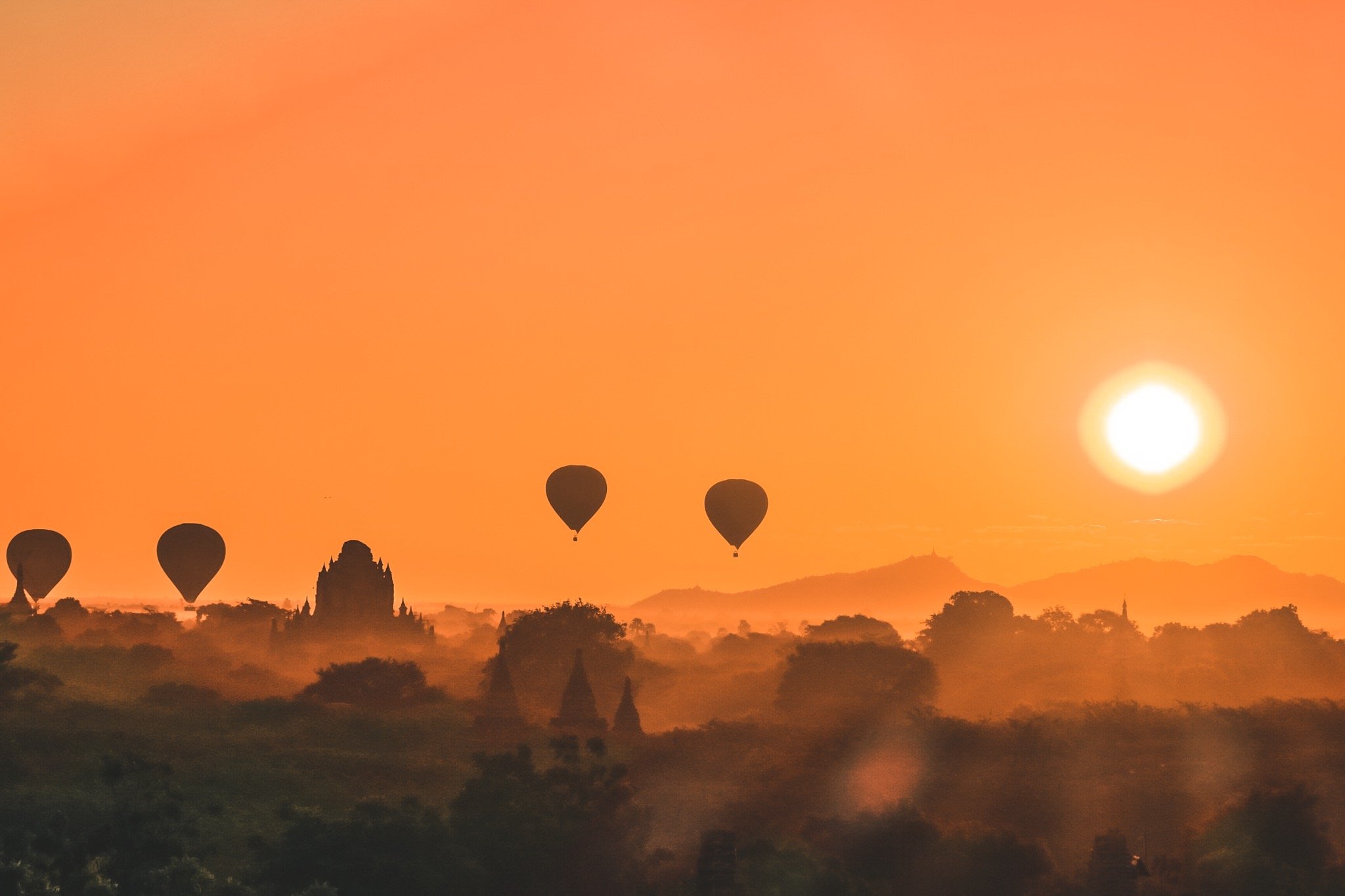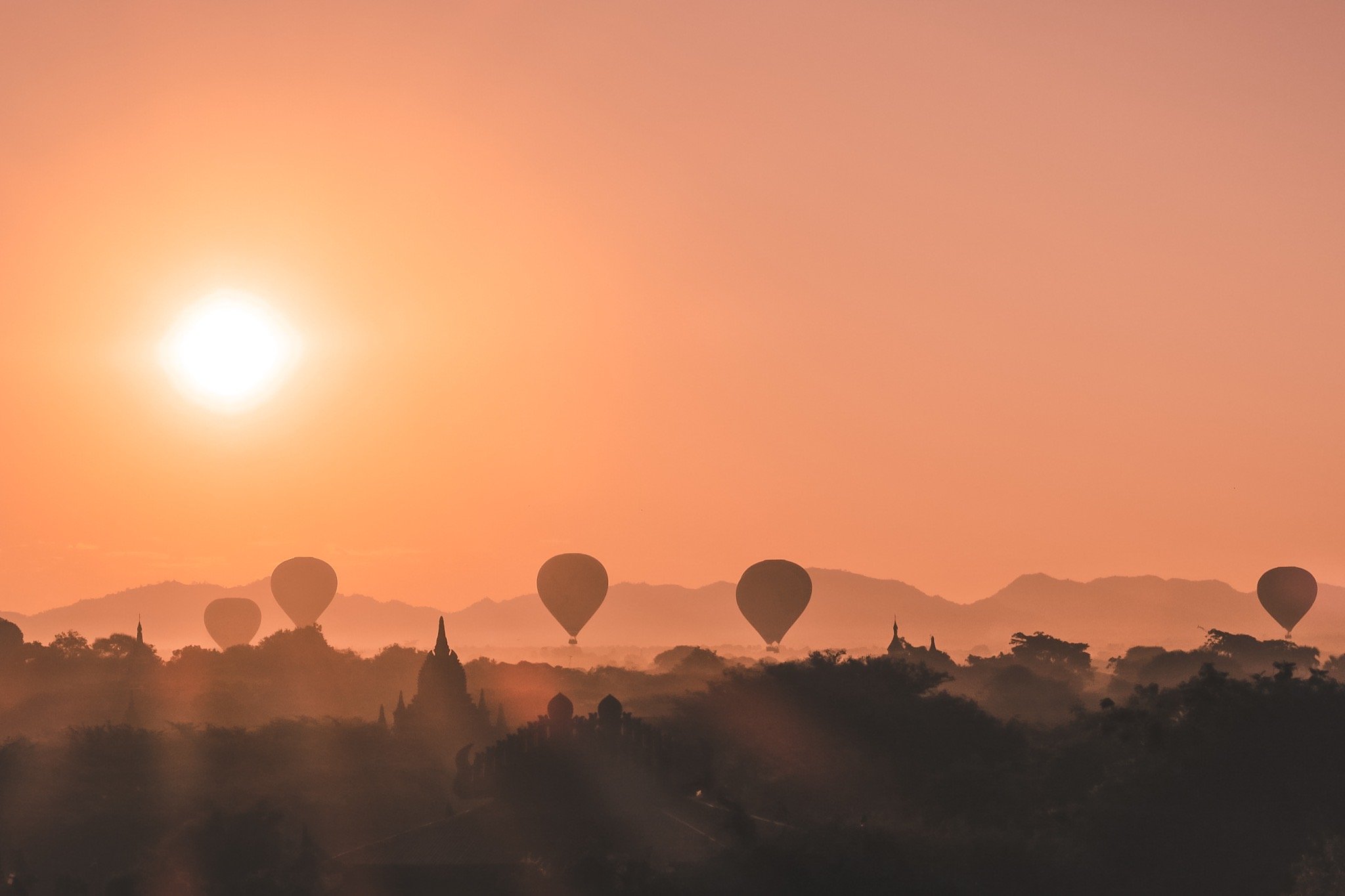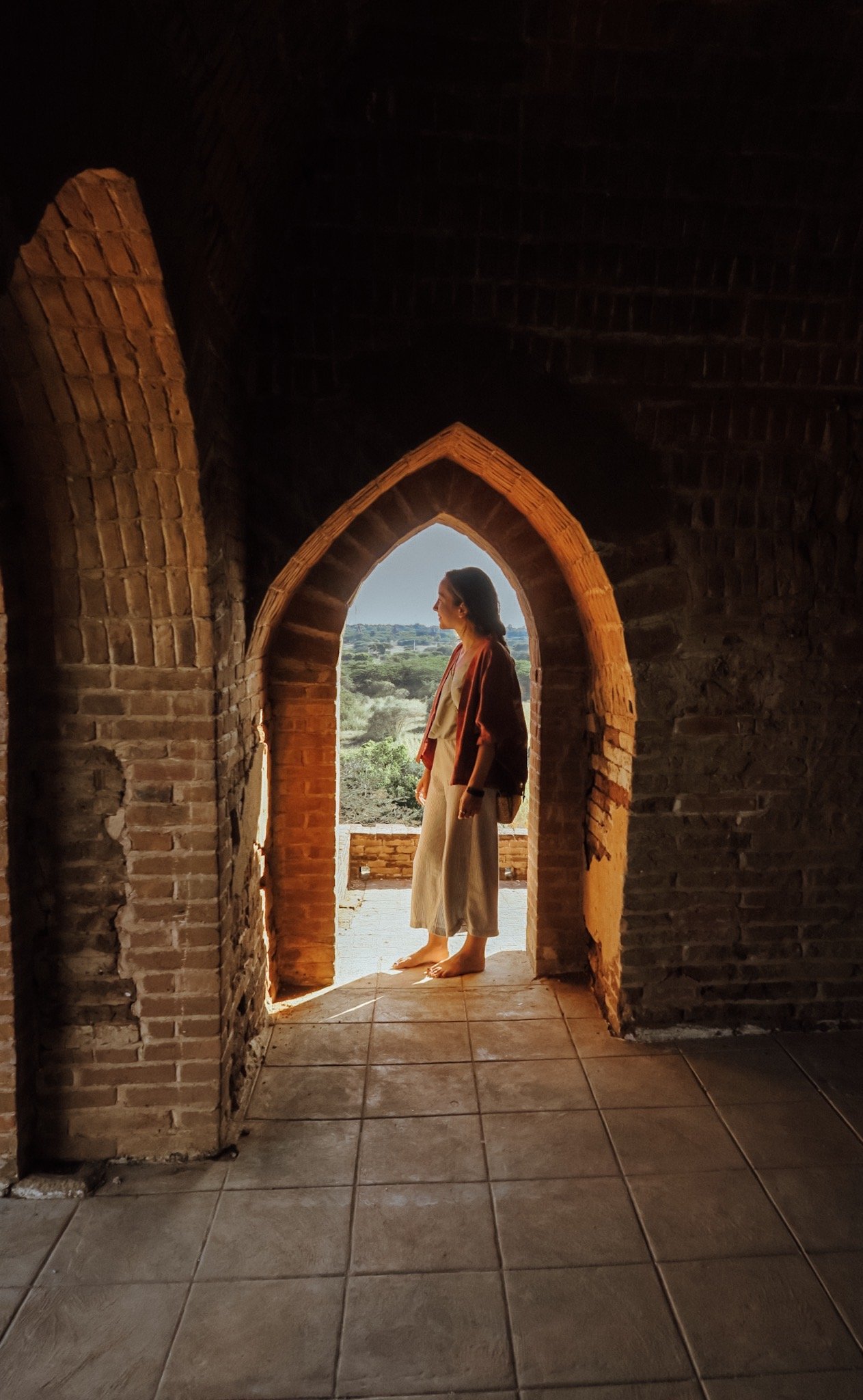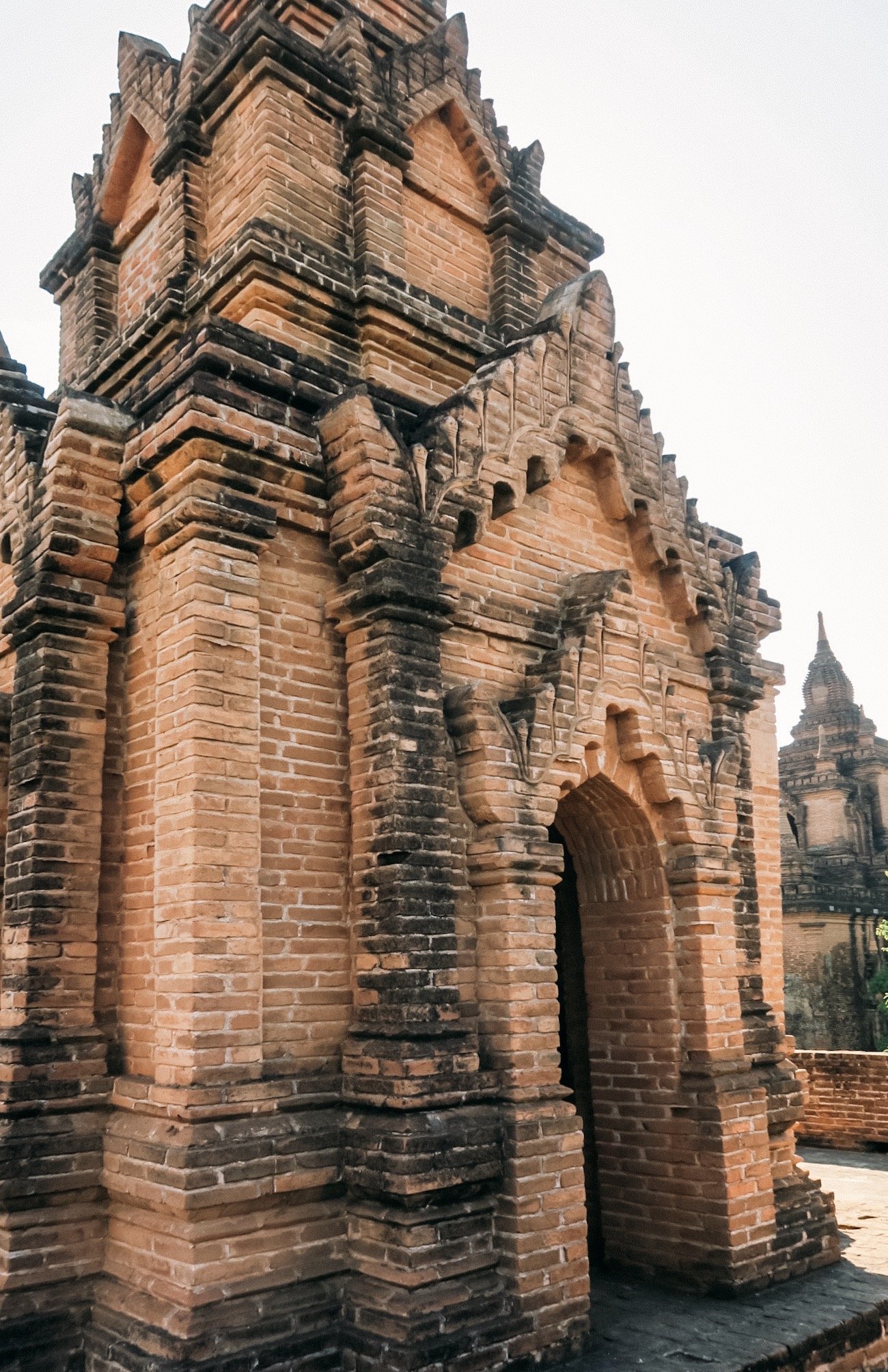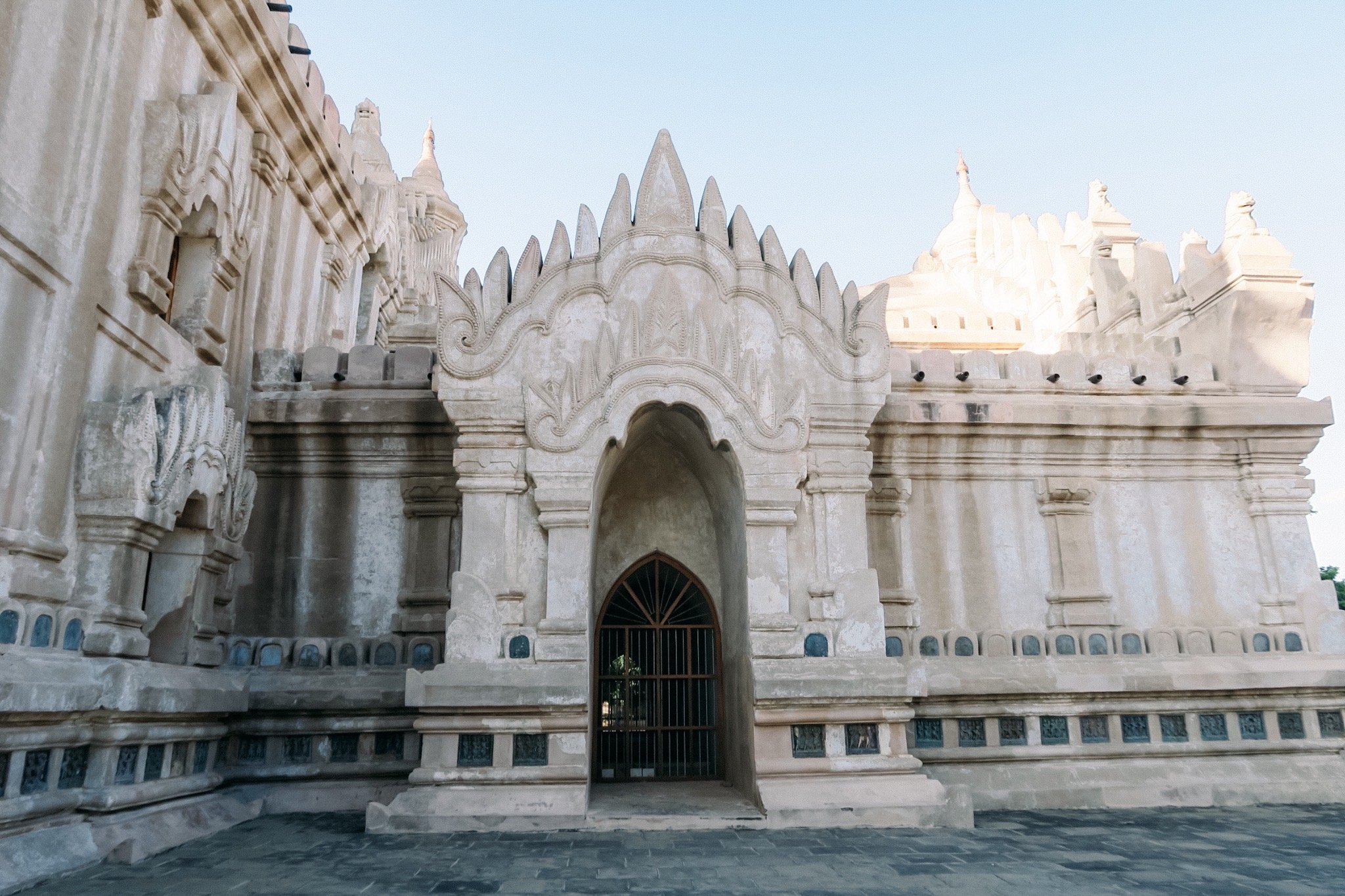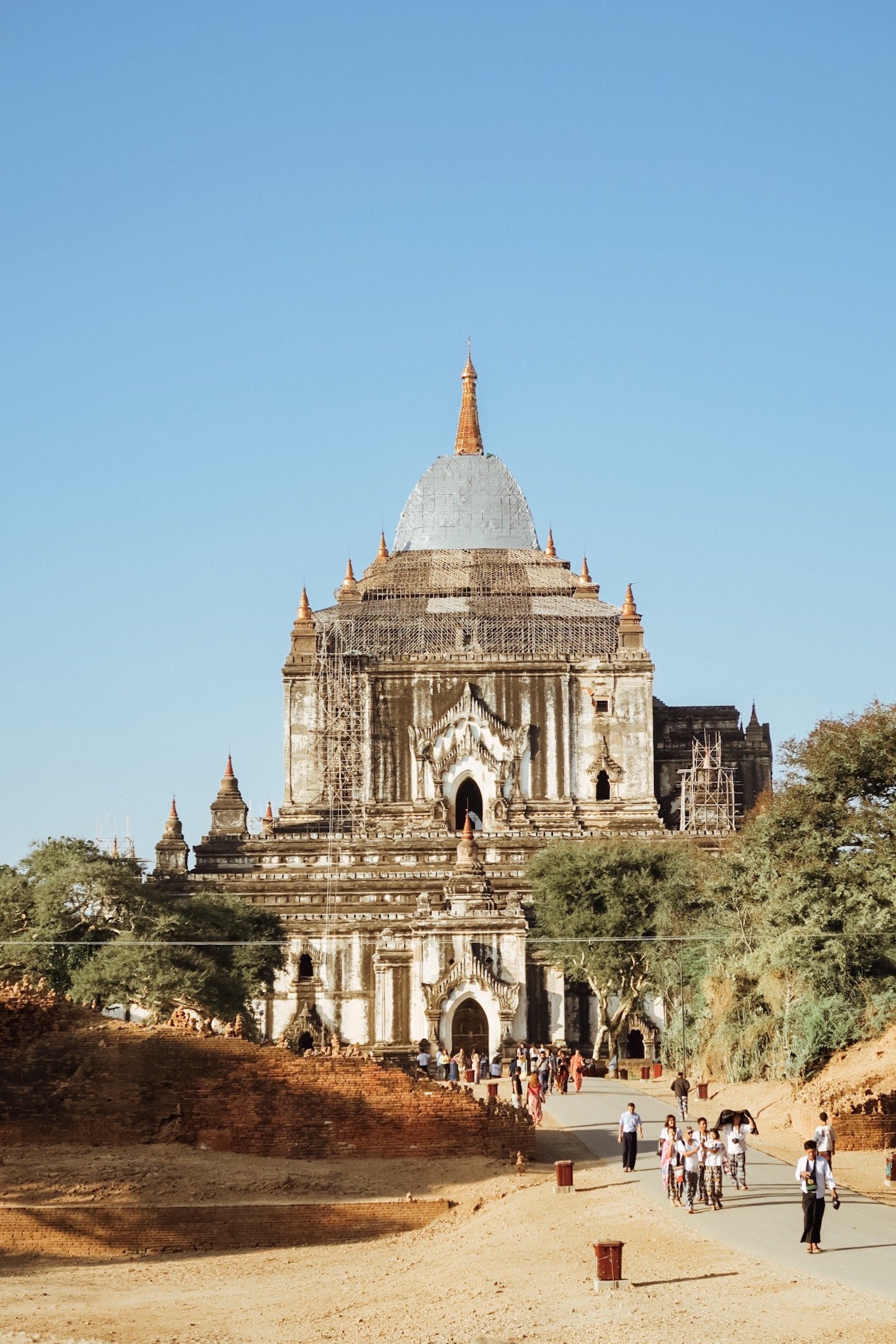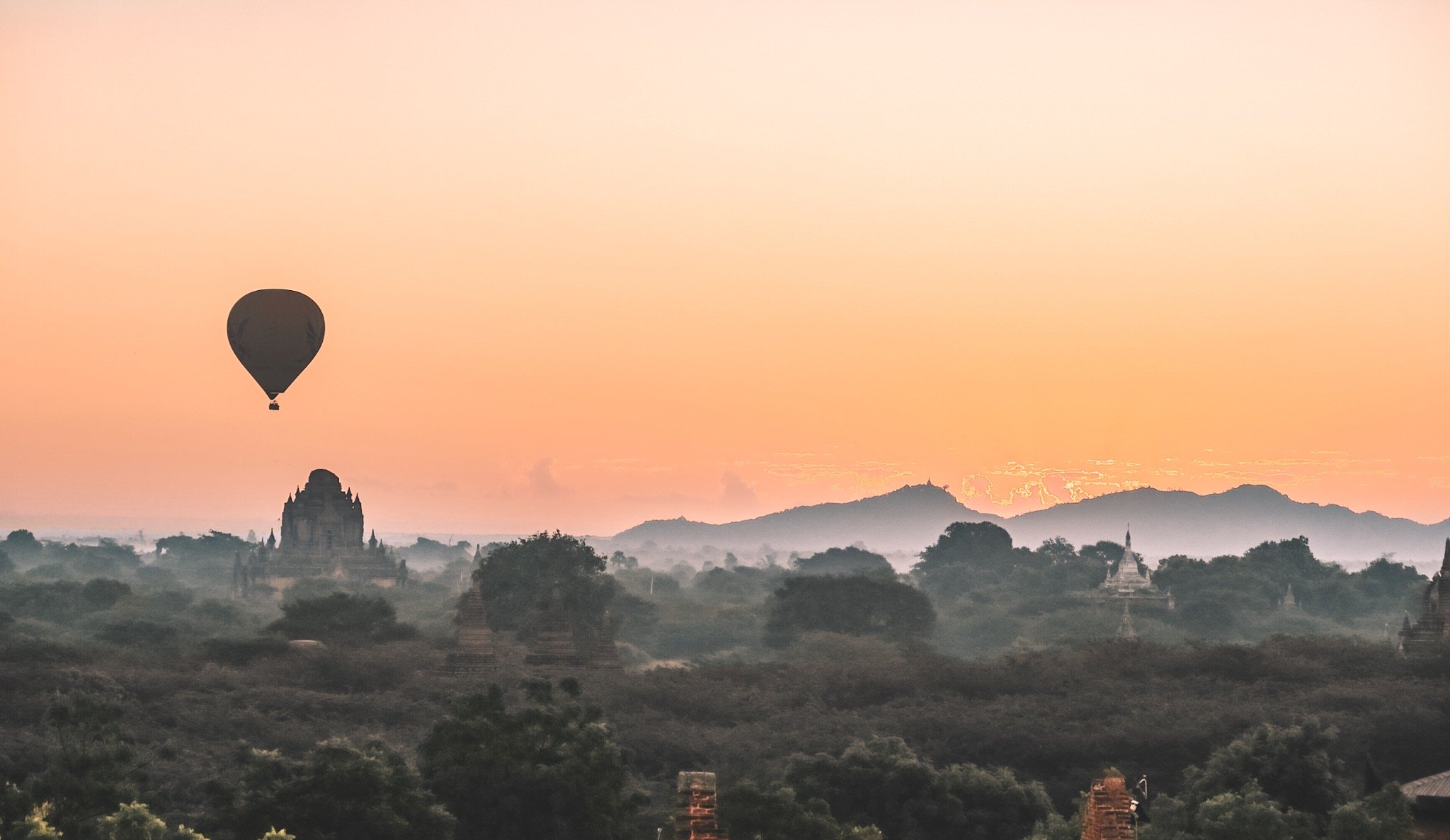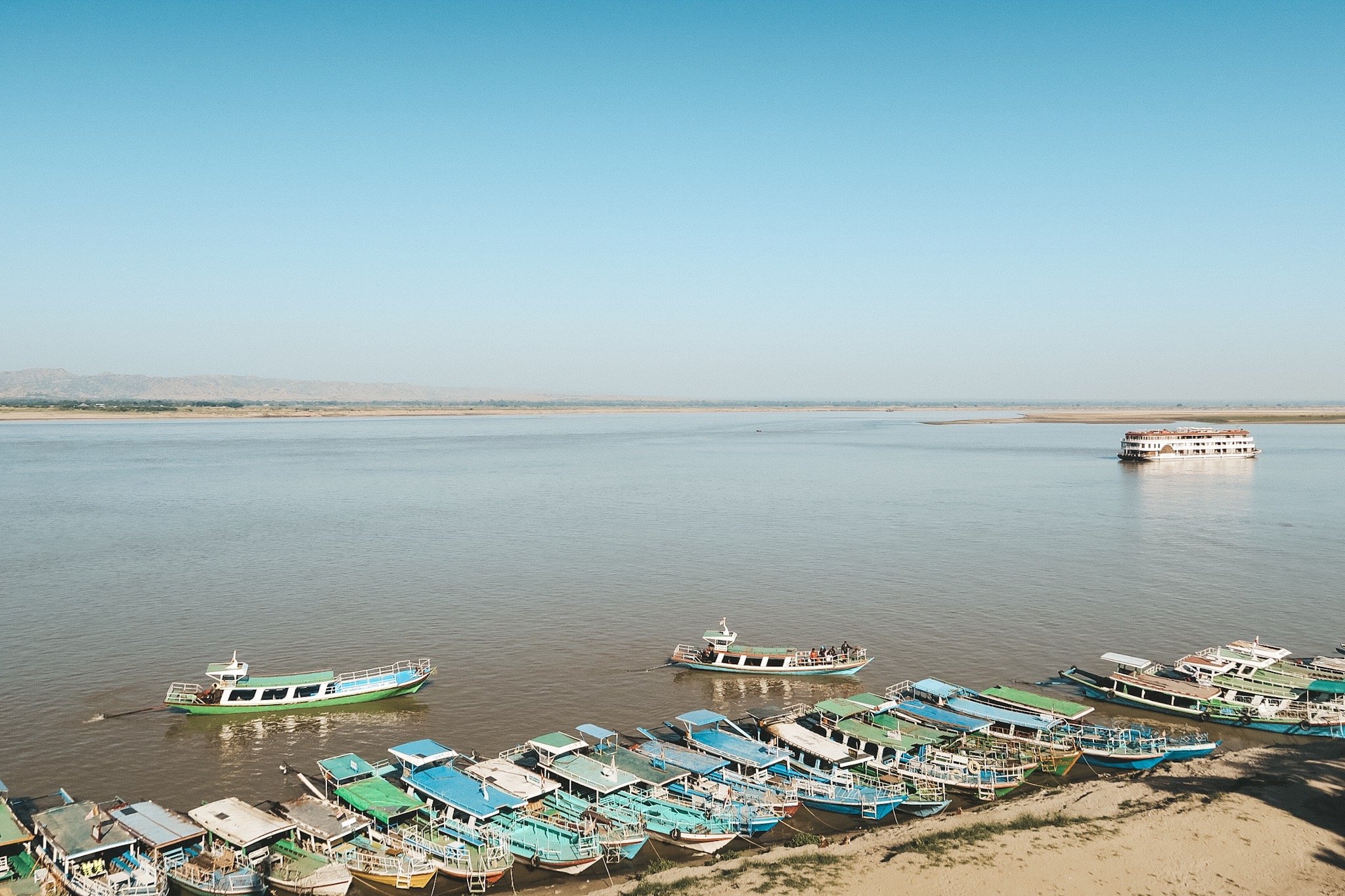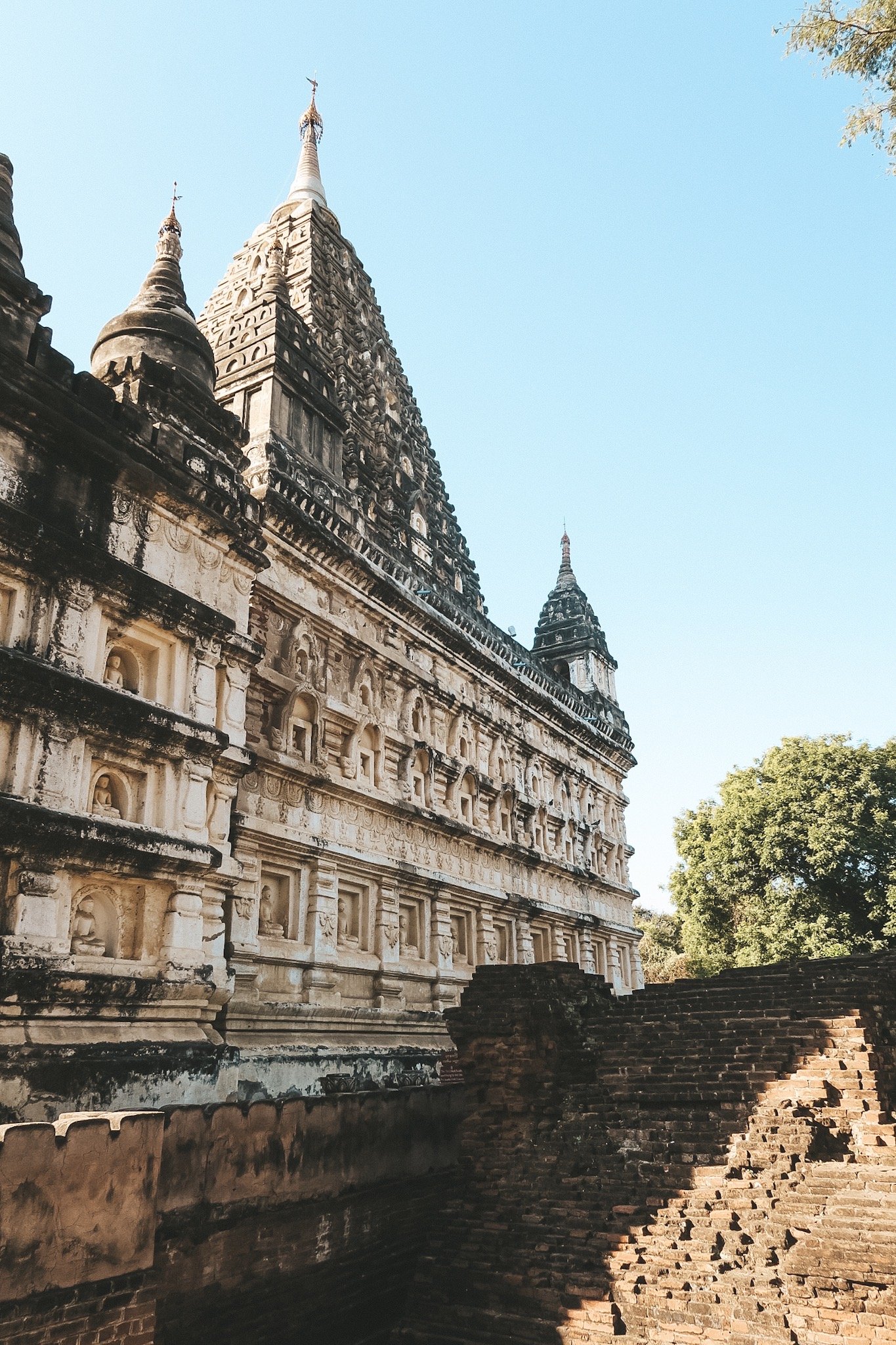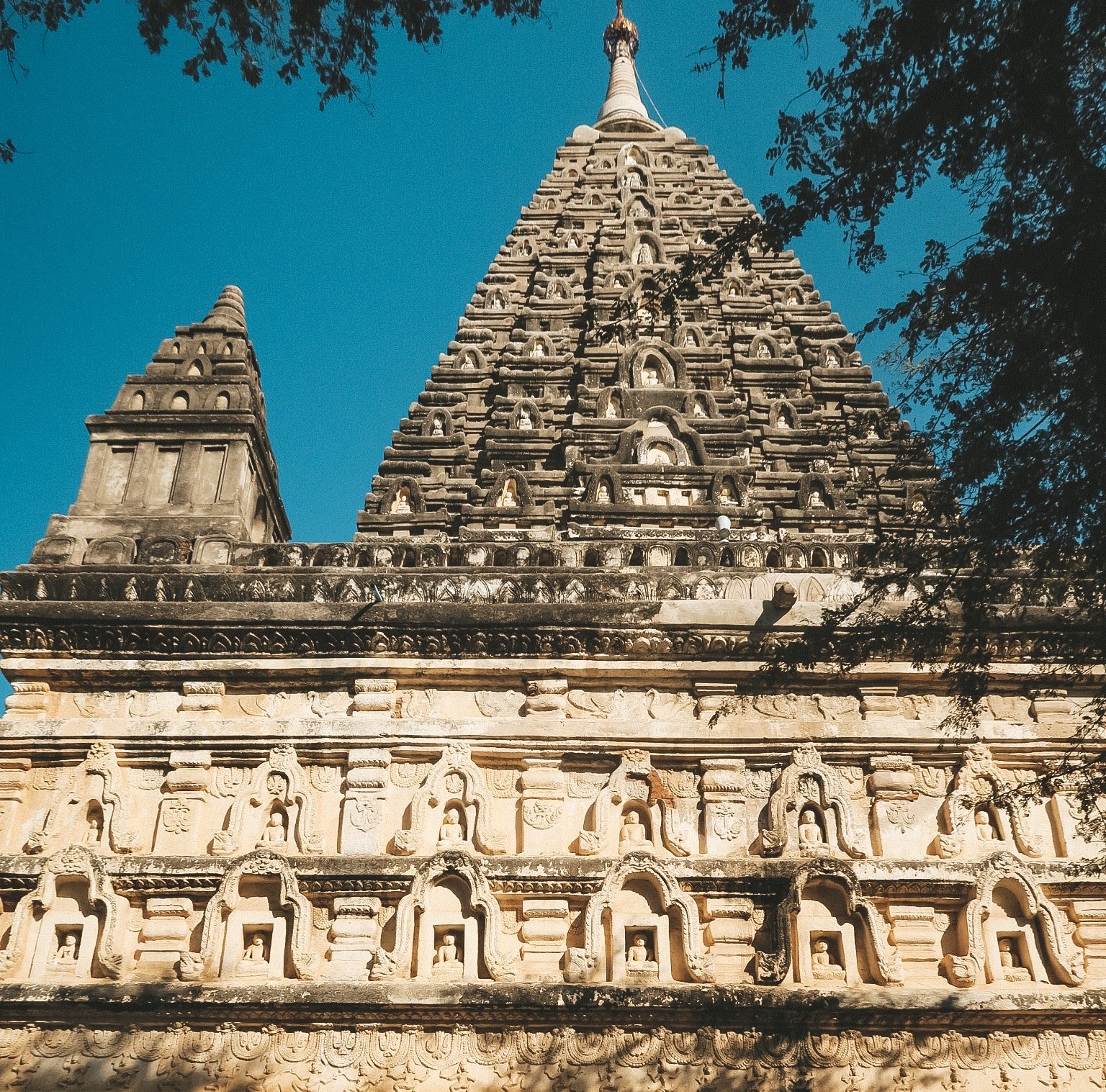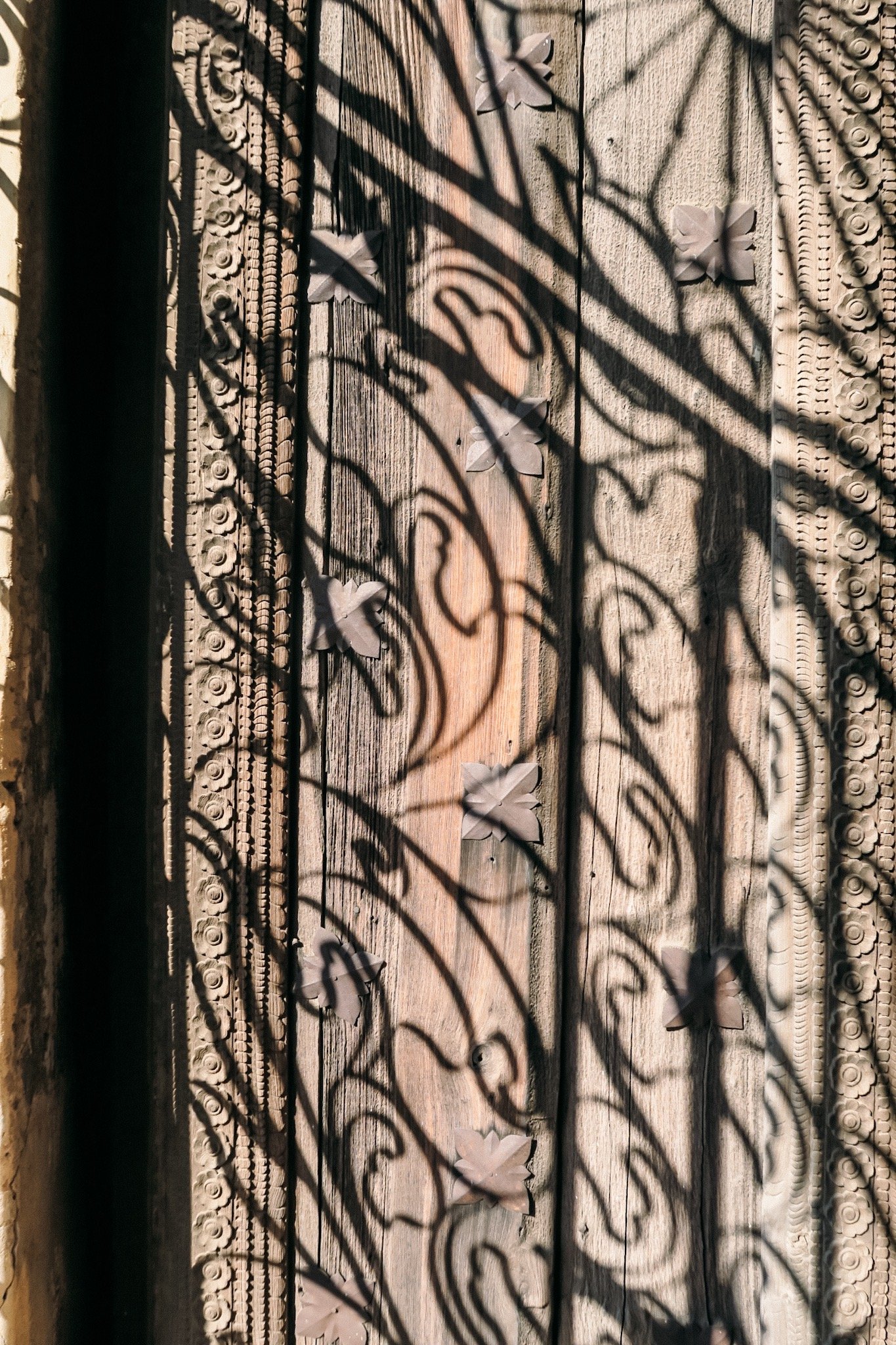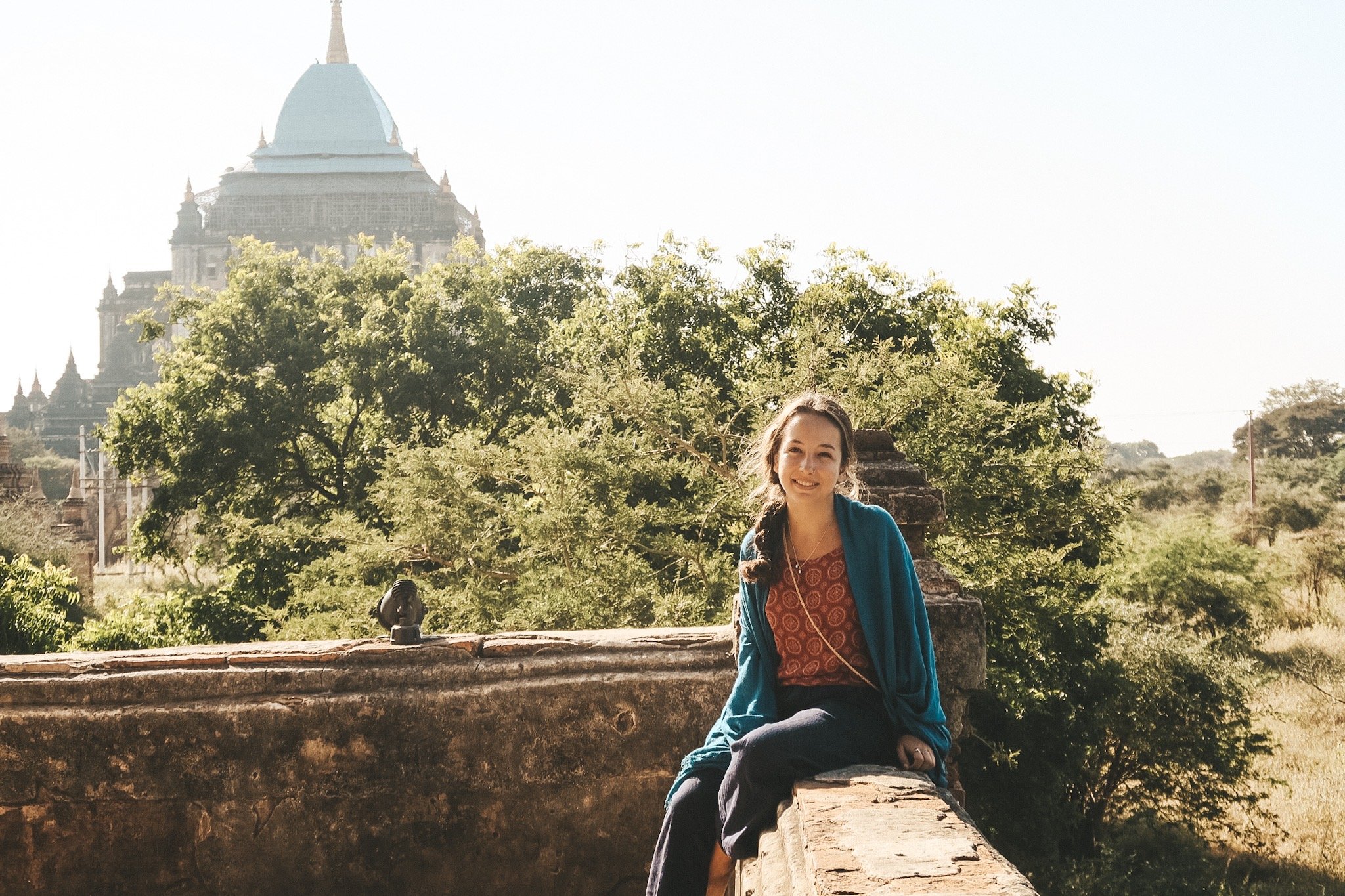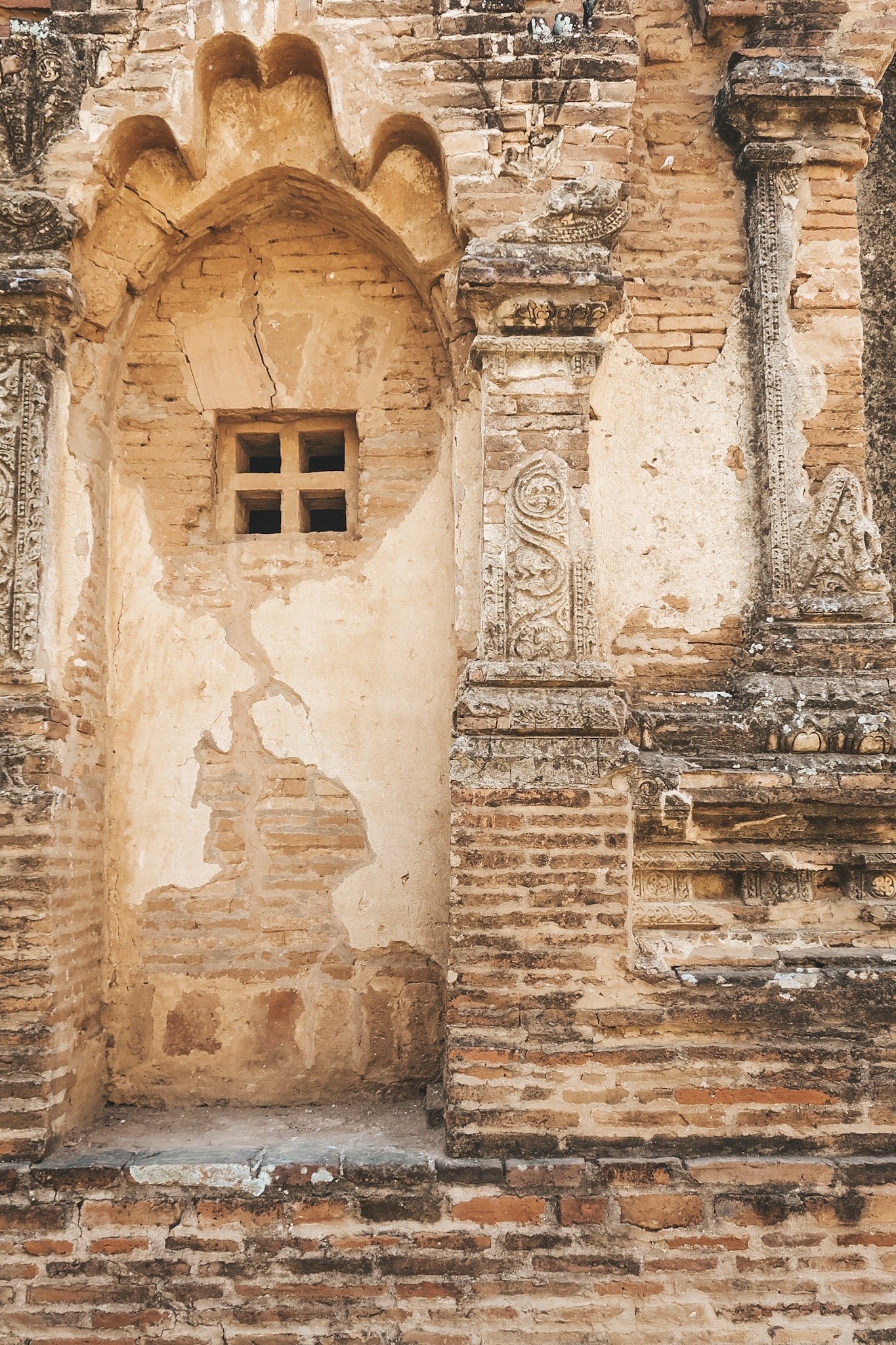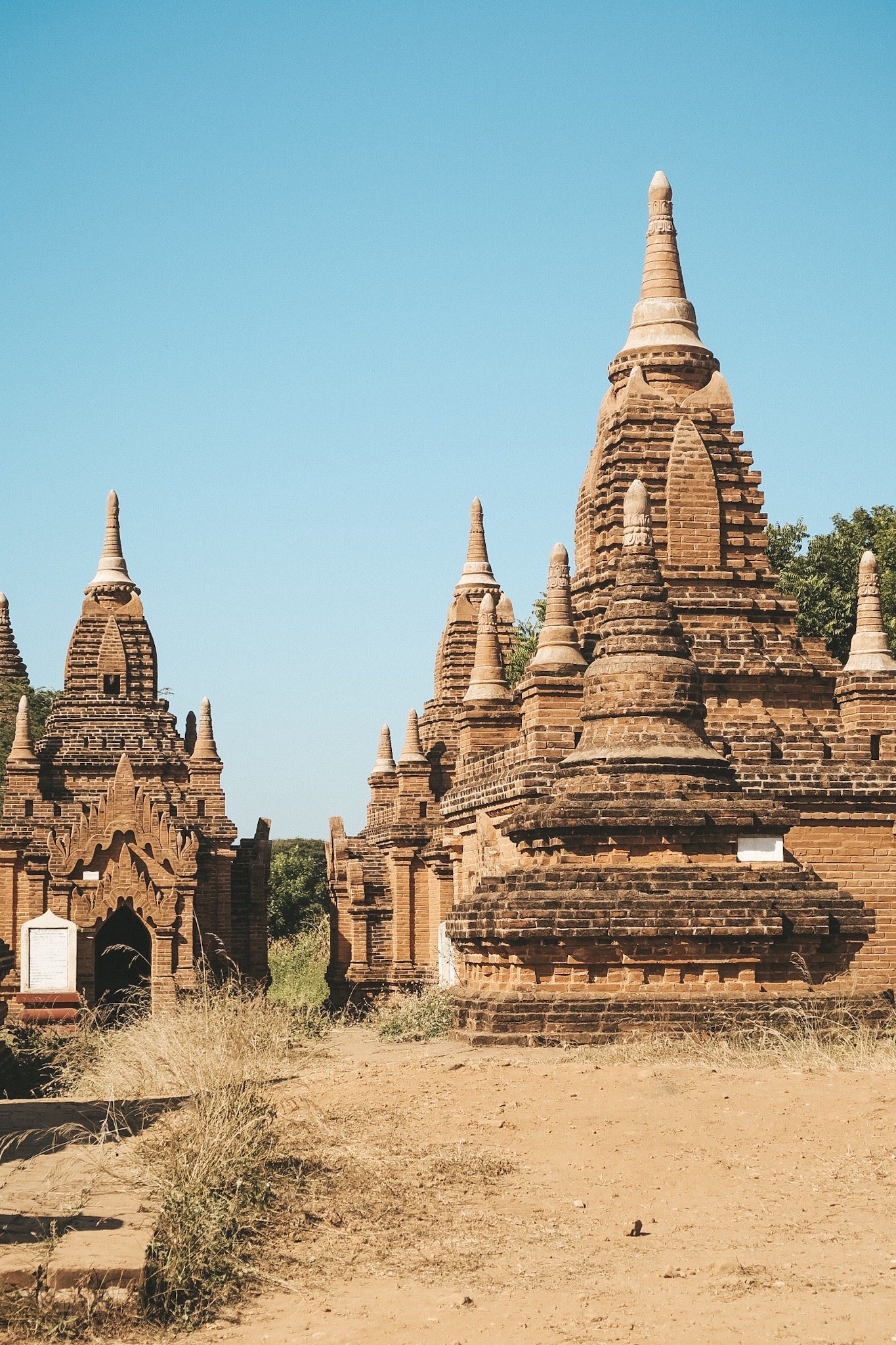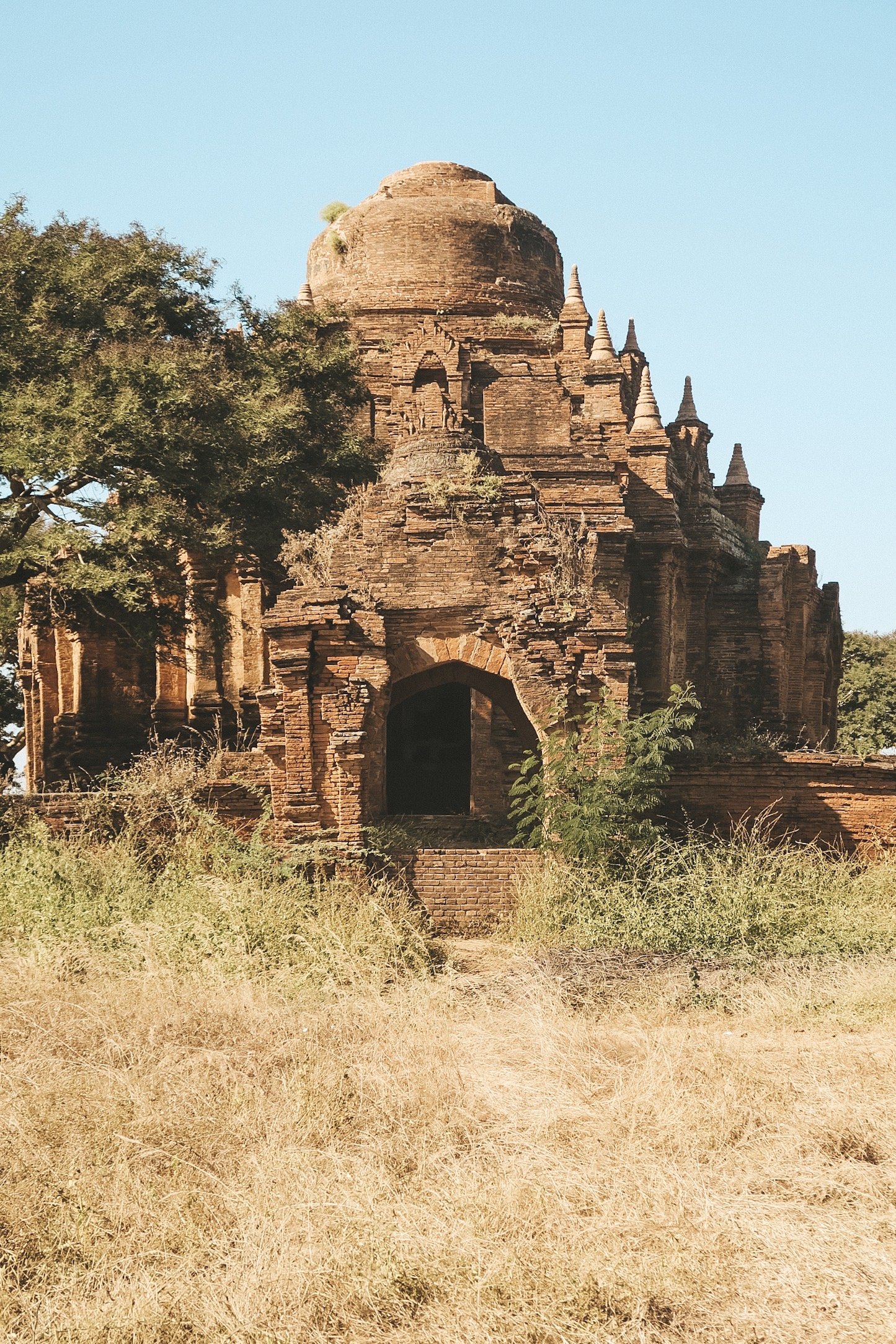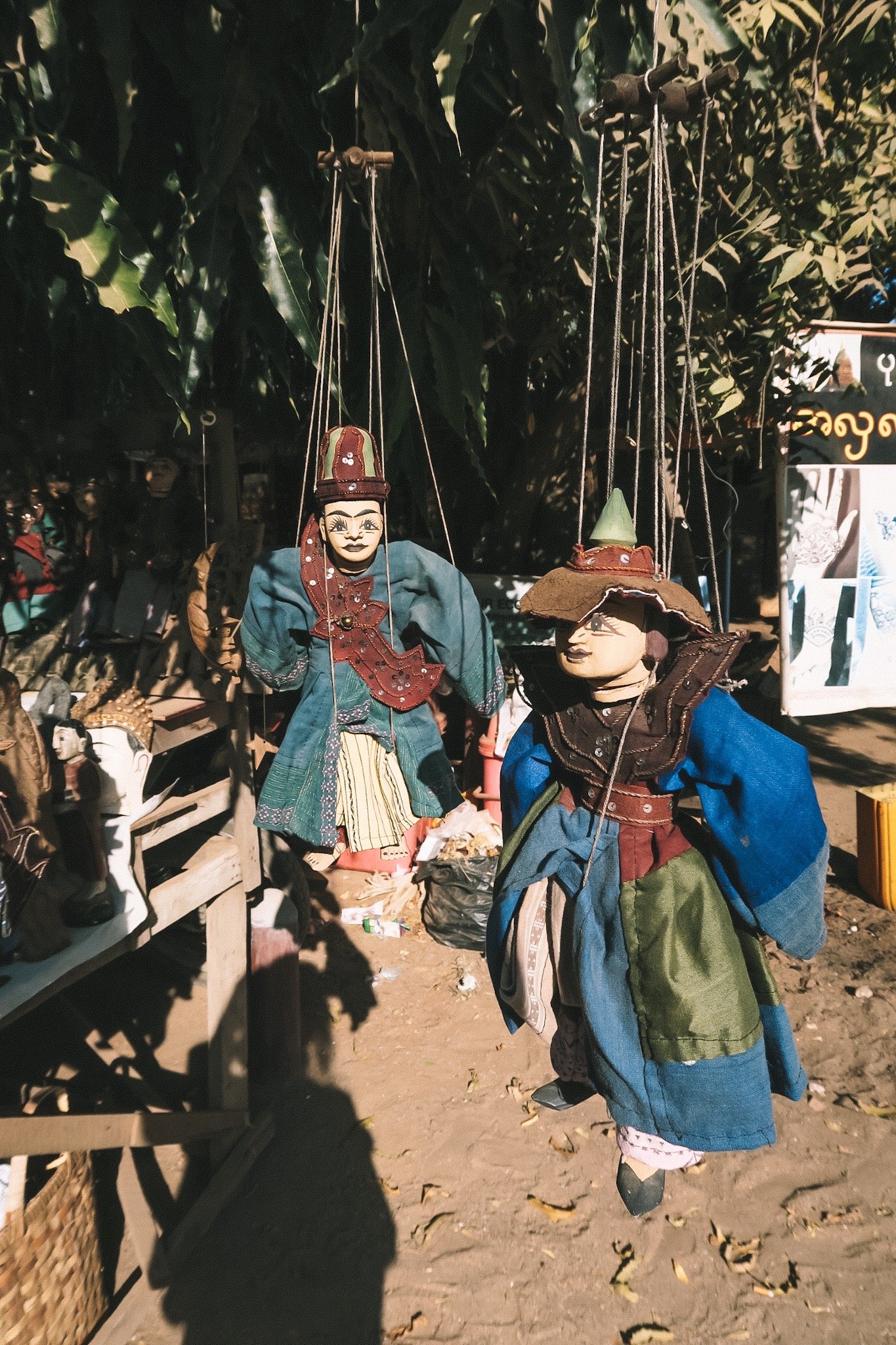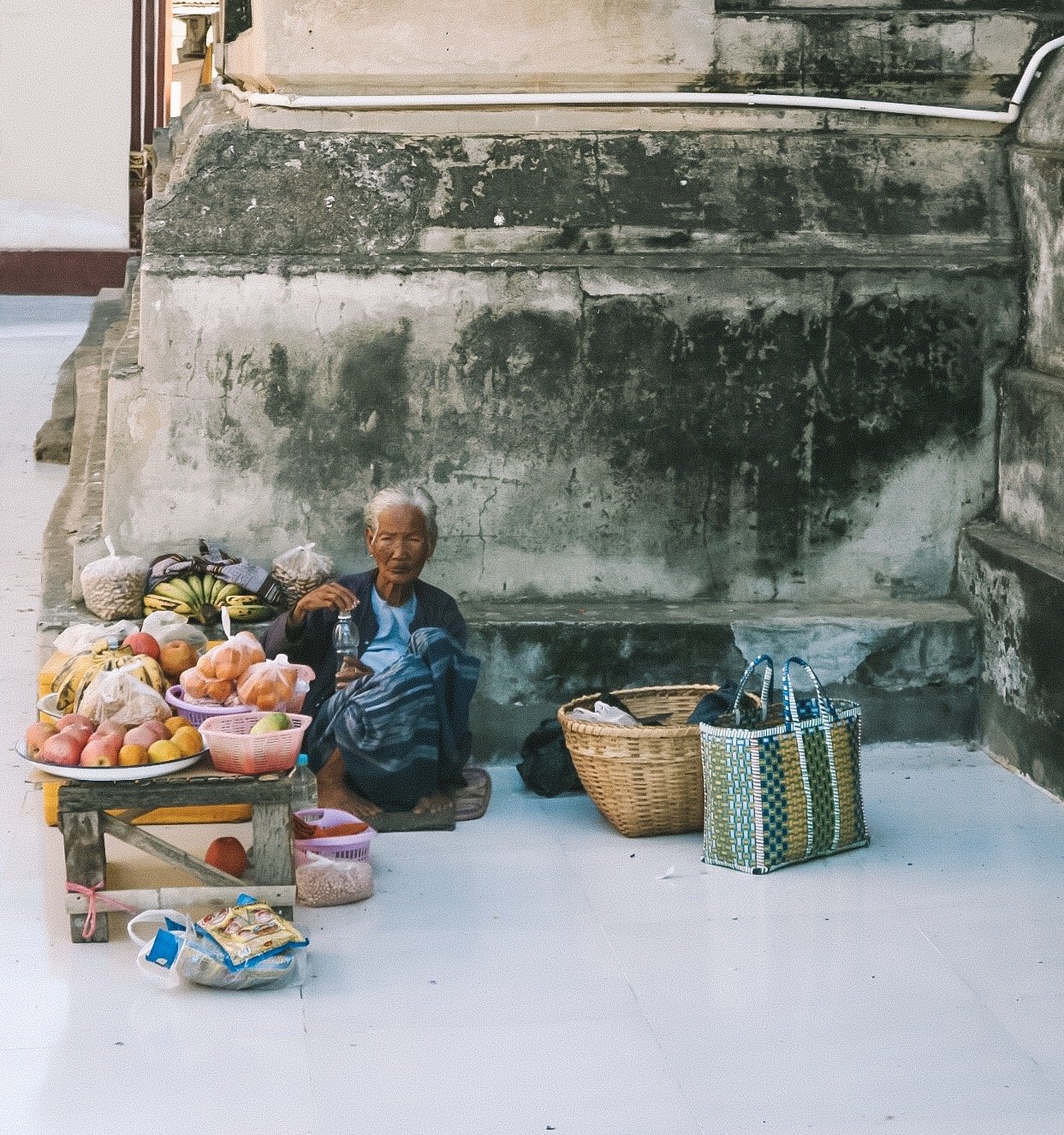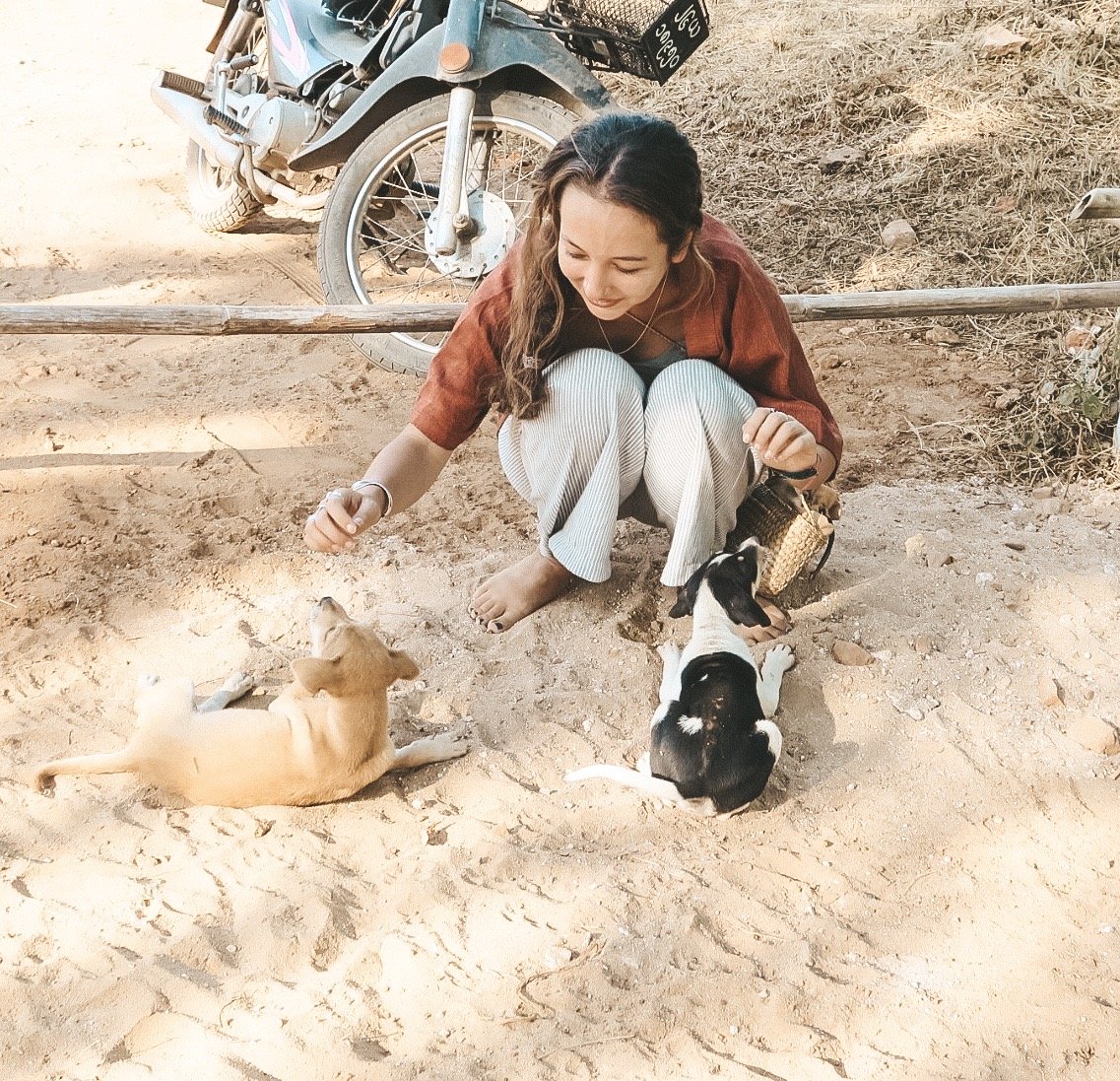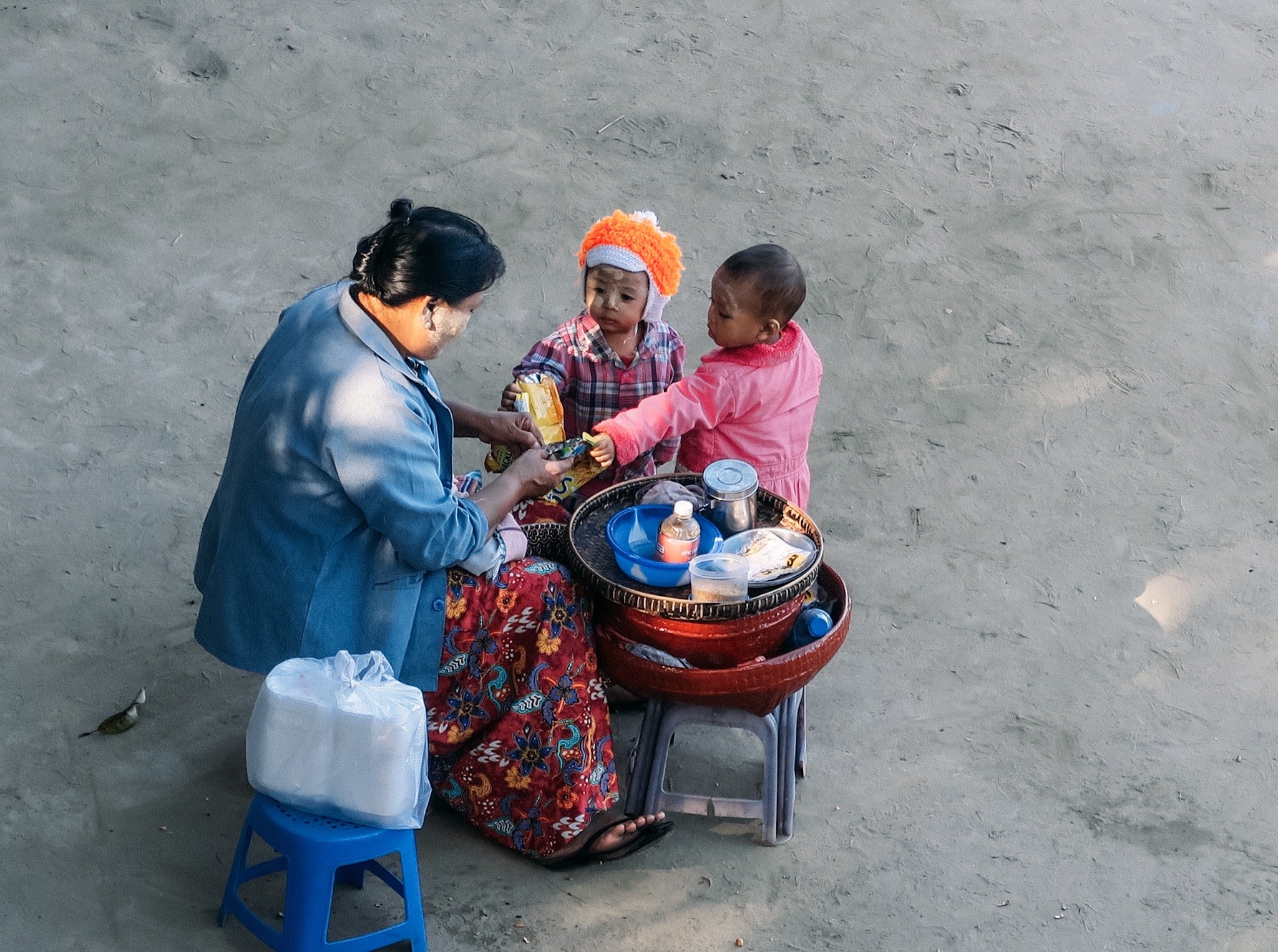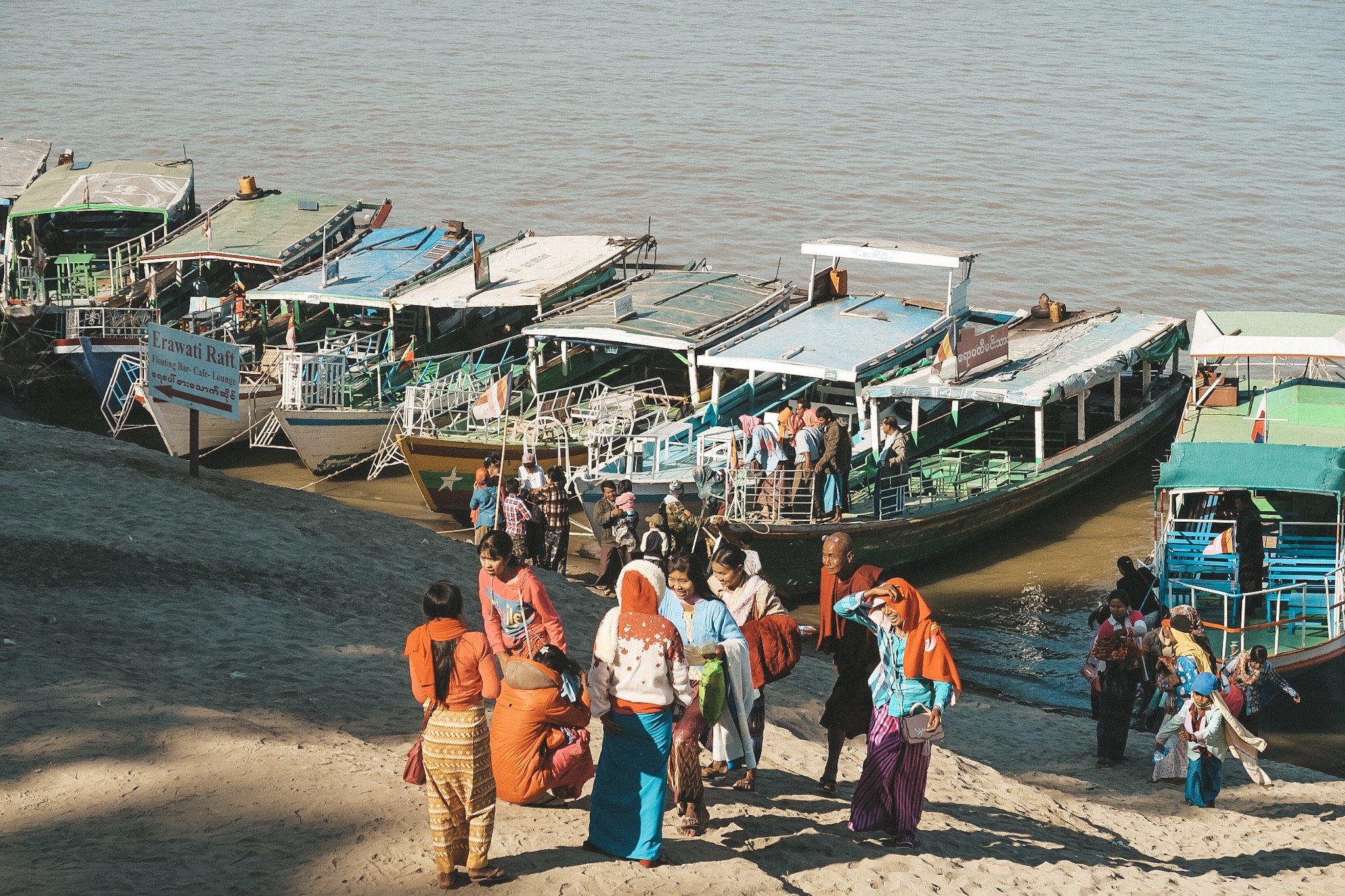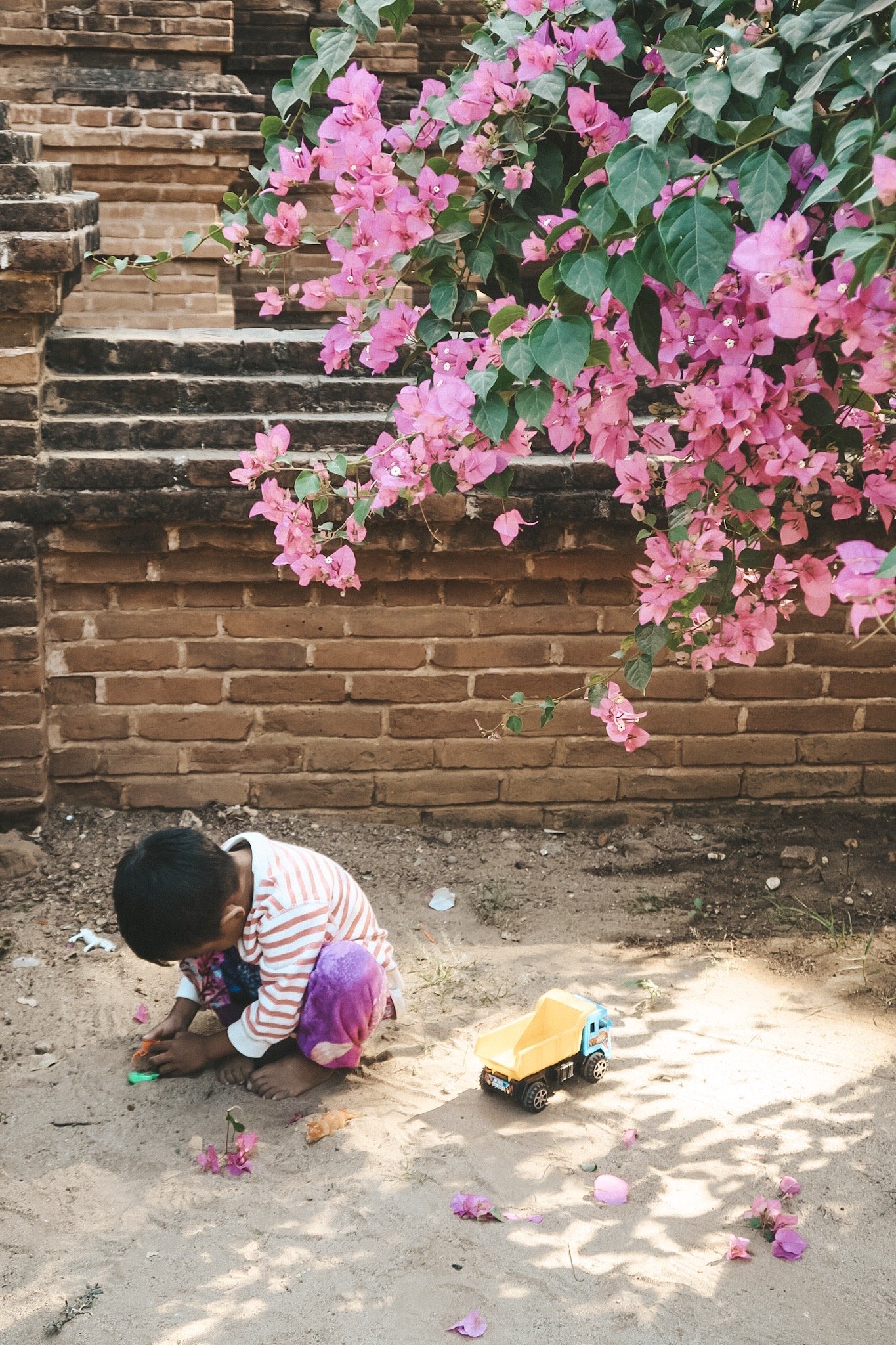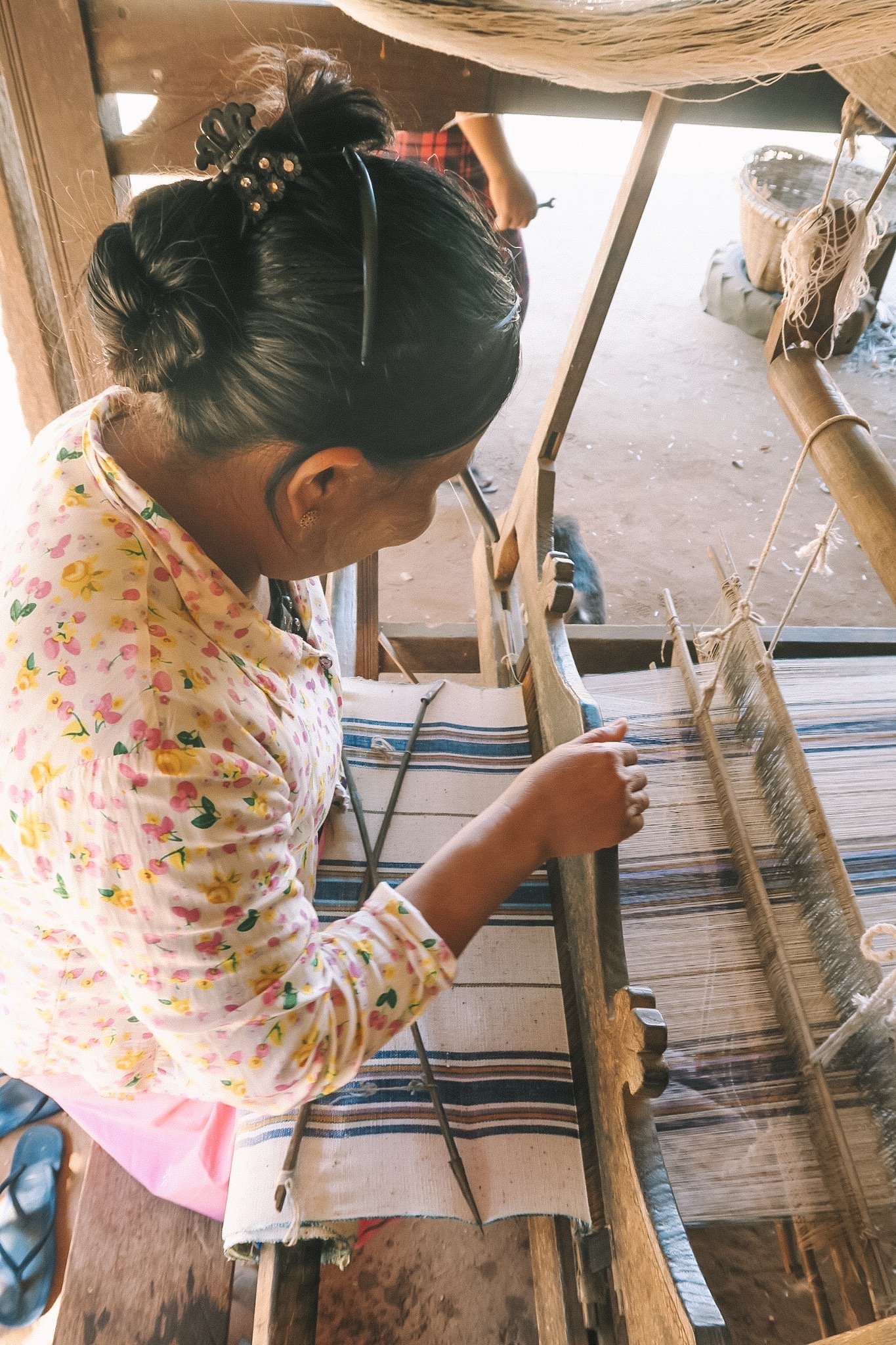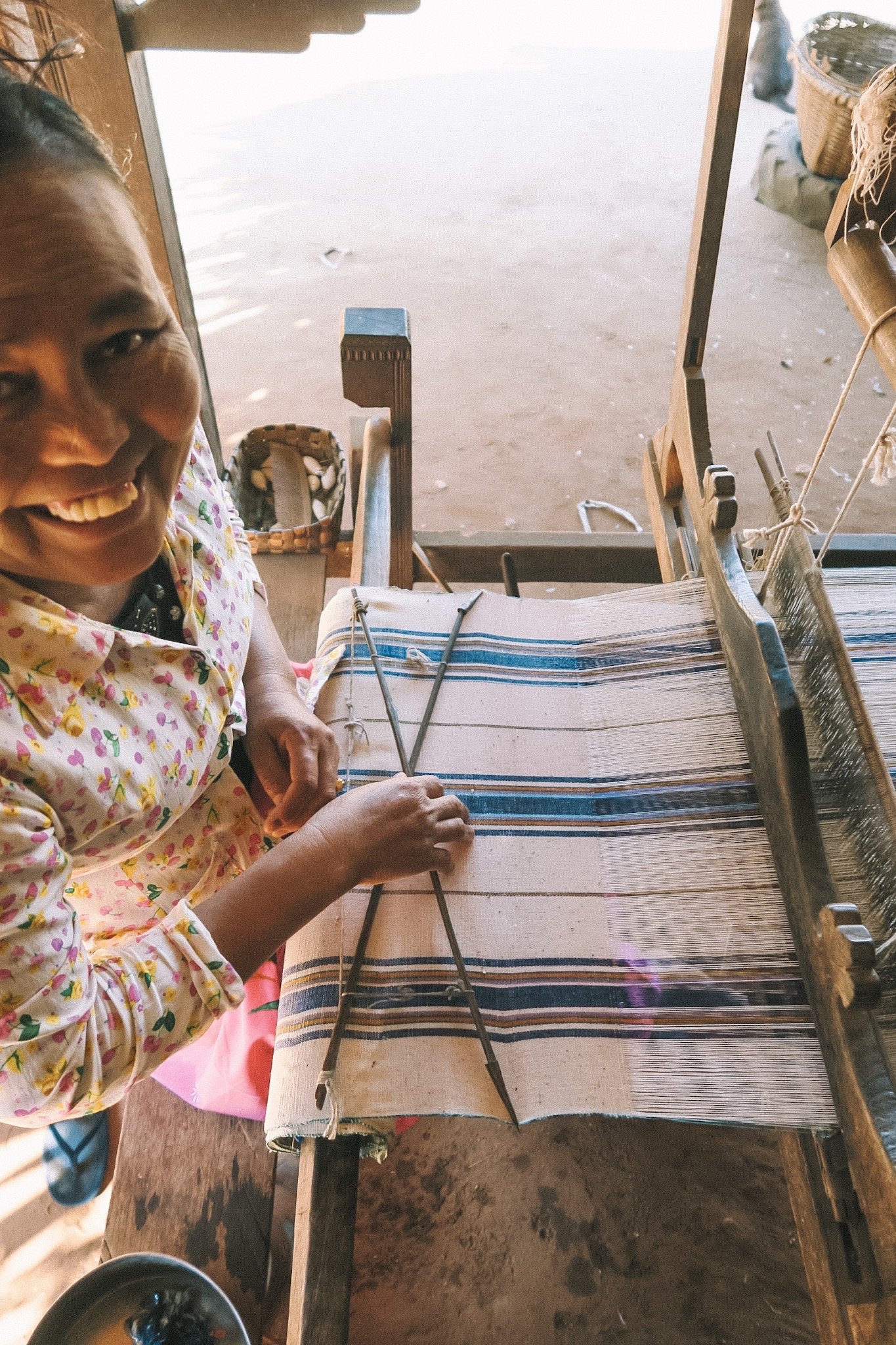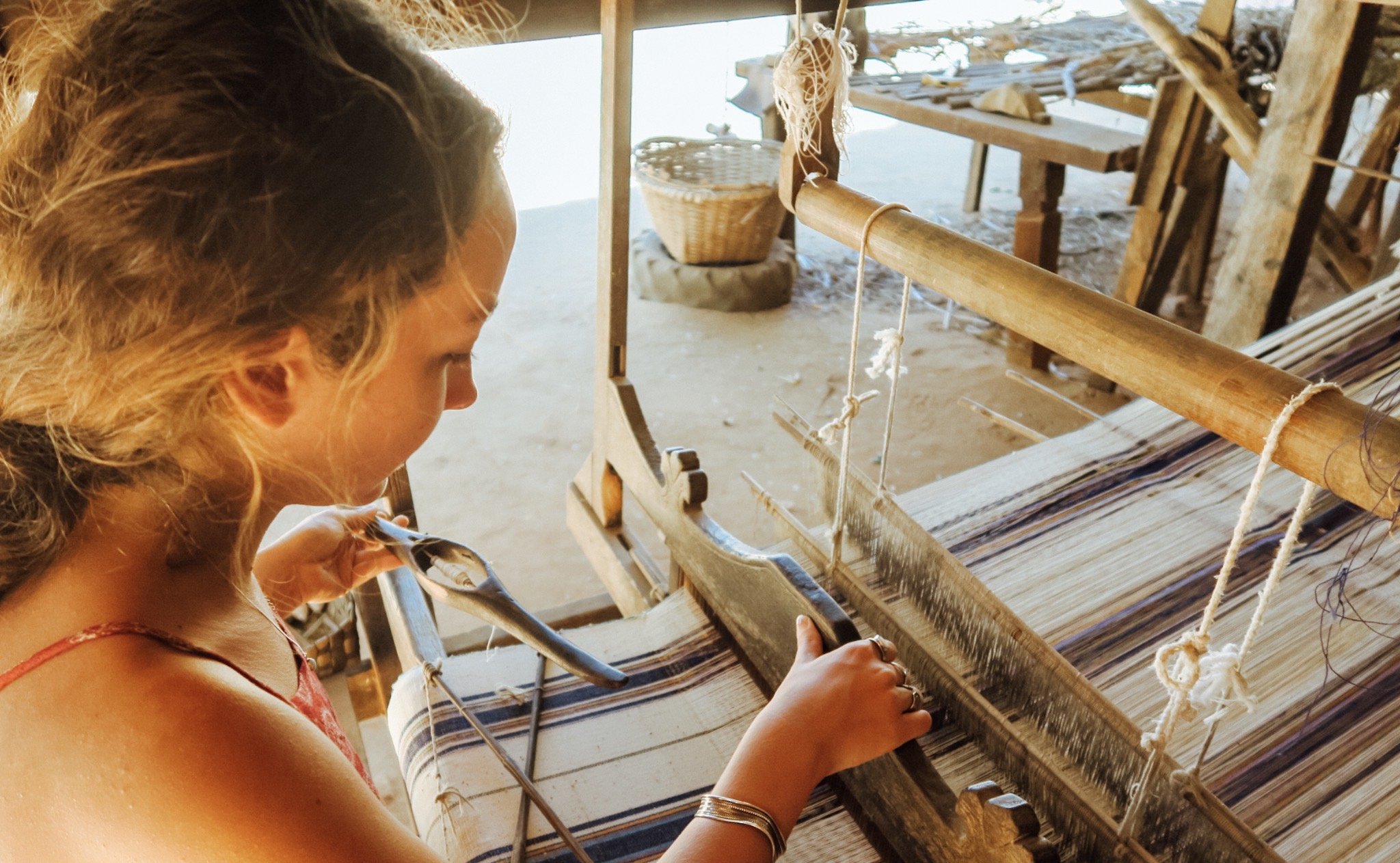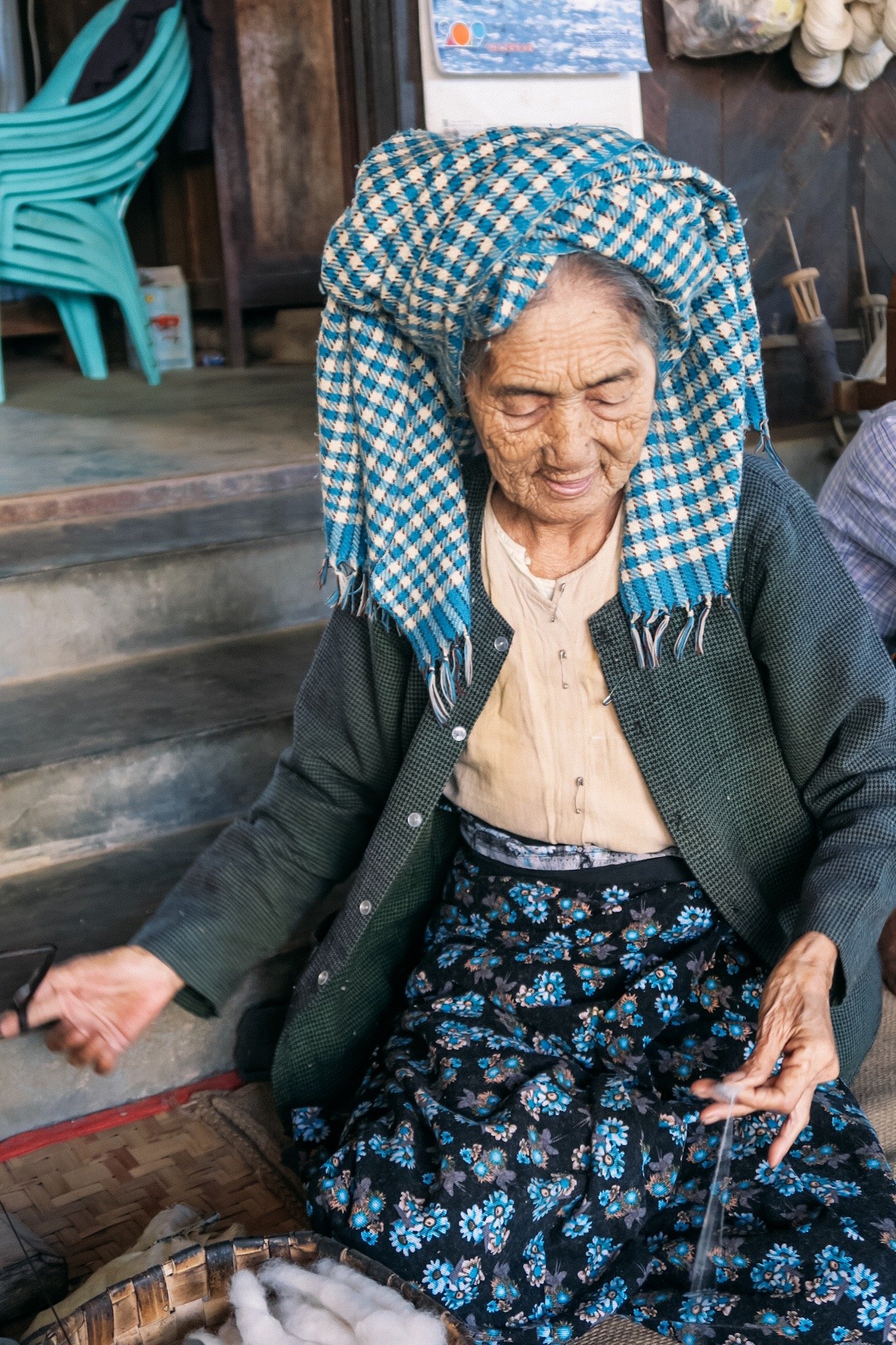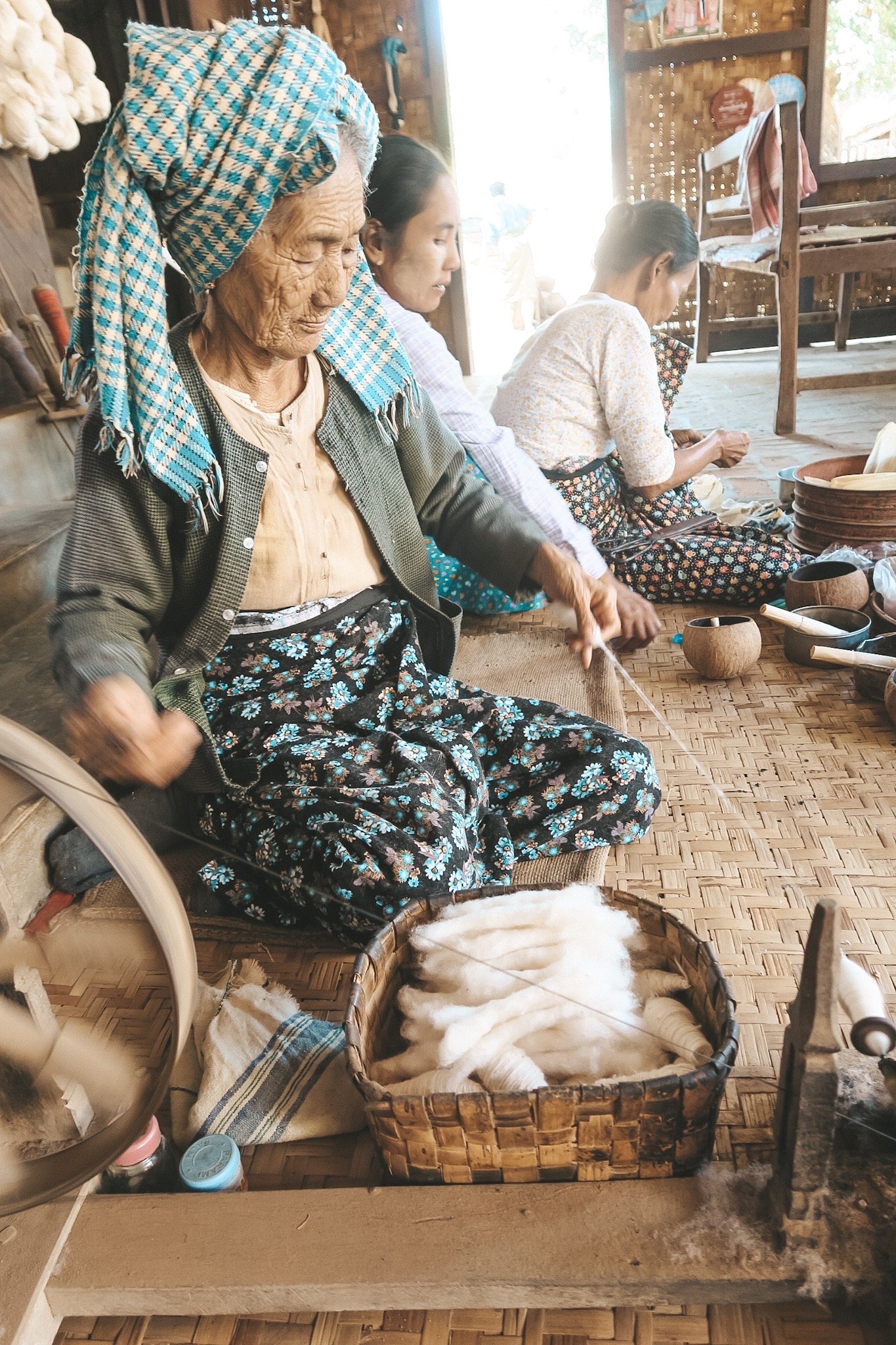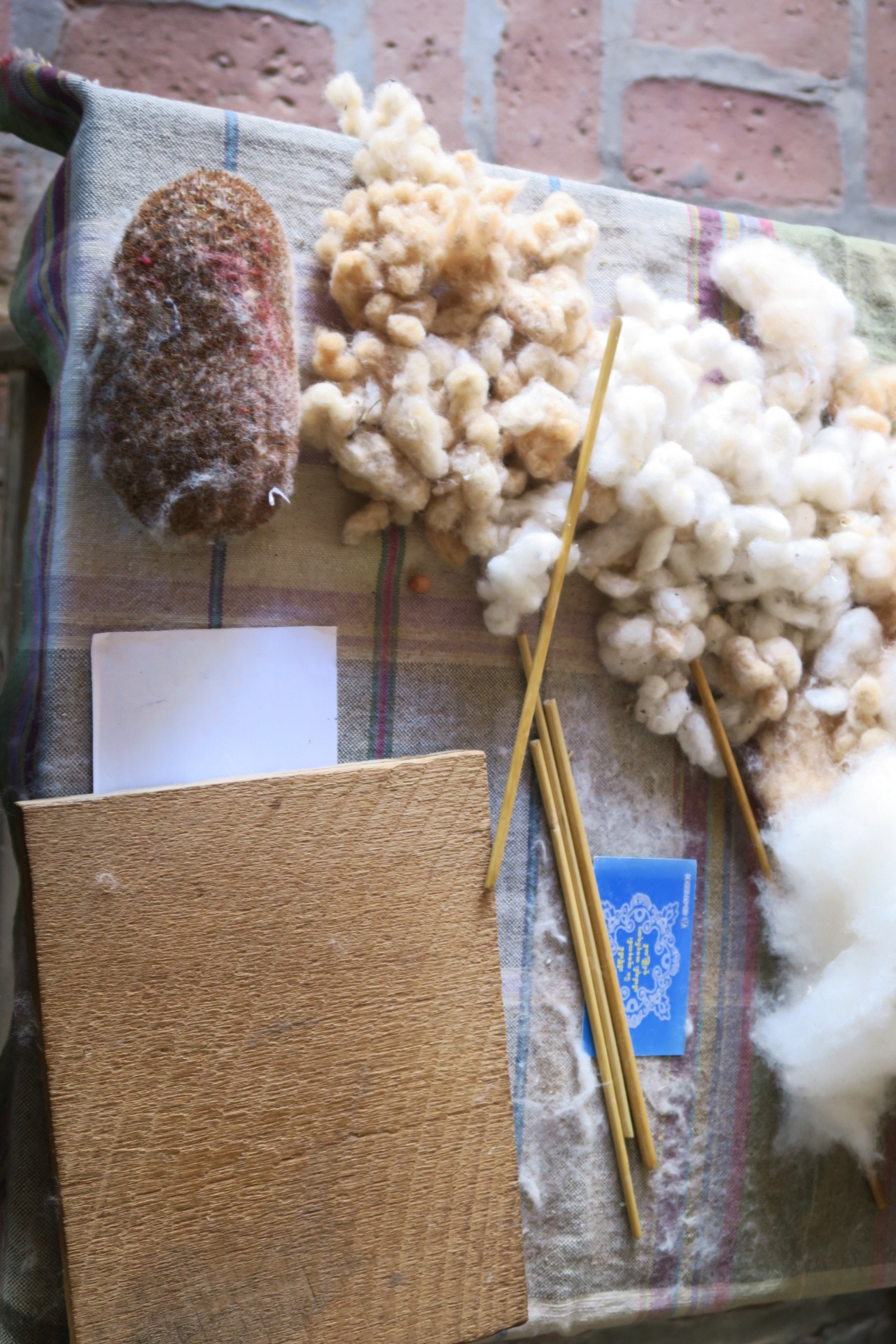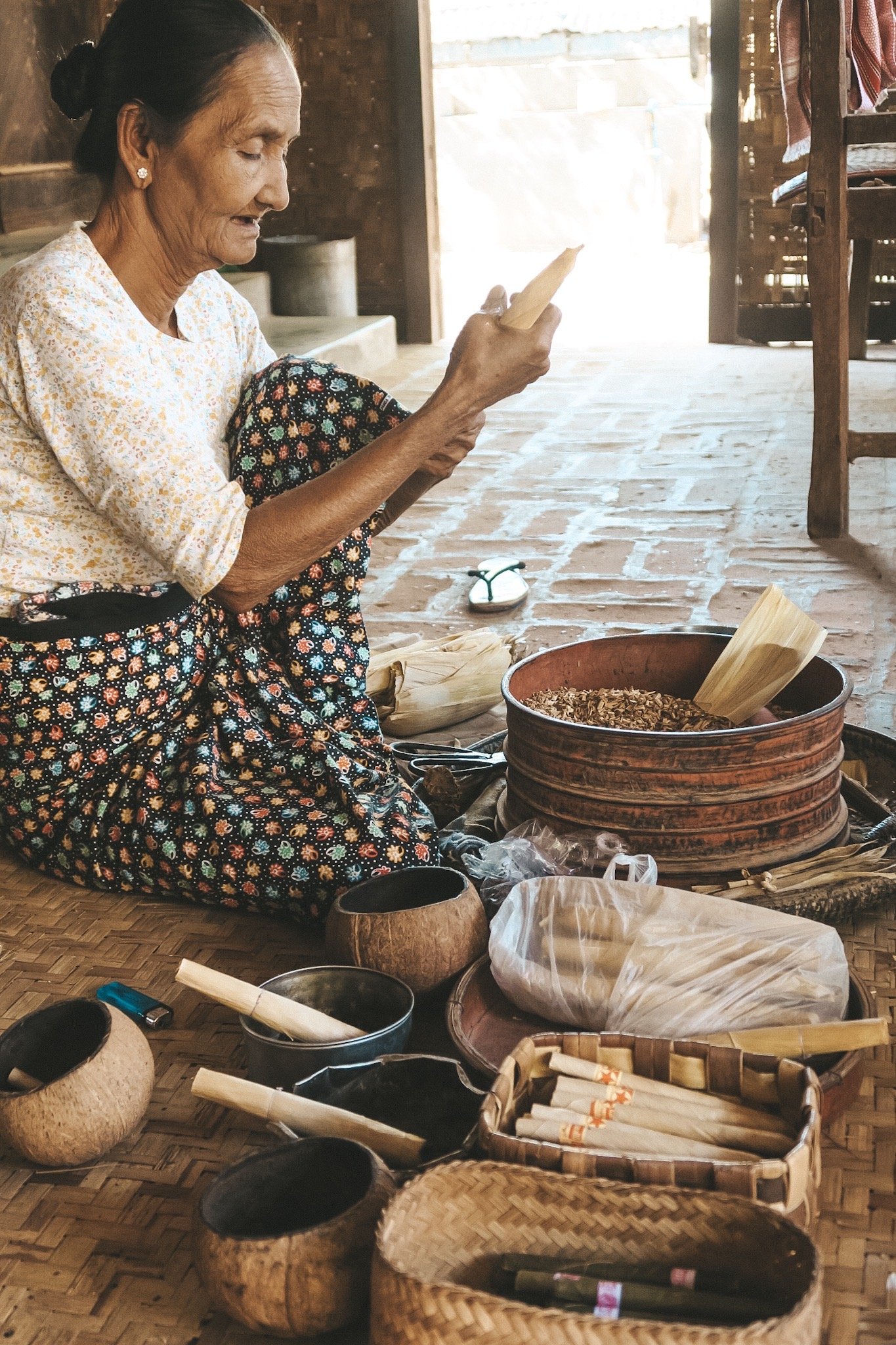Myanmar Week Fourteen: Yangon & Bagan
Myanmar definitely wasn’t in my travel plan. I started thinking about going while I was in Vietnam. I kept seeing photos on Instagram — ancient cities, amazing landscapes, lakes, beaches. Myanmar (formerly known as Burma) is one of the least visited countries in South East Asia, and that is why in my opinion, the lifestyle has remained relatively unchanged there.
Myanmar for me was probably one of my favourite parts of this textile research trip. The fact that I wasn’t supposed to go, the people, the food, the art, the temples, the landscapes — everything made the experience wonderful. However, I had a lot of people disagree with my decision to go there. Of course the ethnic and religious violence, the oppressive political policies and the human rights abuses can’t and shouldn’t be ignored while thinking about travelling to Myanmar and I understand why my decision to visit was a controversial one. A lot of travellers are boycotting Myanmar and I went against that. So even though the main aim of this blog is to share my textile research, I think it should go beyond that.
I had friends and family tell me they are worried about me when I told them I am going, that it’s “unsafe” and “dangerous”, trying to make me change my mind. I don’t think that individual people should be defined by their governments. The people I got to meet everywhere in South East Asia, were exceptionally kind and peaceful. This definitely includes Myanmar. People were always happy to help, to practice their English, to smile, to show you around, to explain things about their culture and involve you in their everyday lives.
I also had people tell me I am “ignorant” and “morally wrong” for choosing to go there. Instead of boycotting the whole country, I chose to make sure I am supporting locally-run and privately-owned restaurants and guest houses as well as transportation companies. I believe that withholding money from a country altogether will have little effect on the country’s government, whereas it will play a huge role on its local citizens. Most people in this country rely on the tourism industry in order to provide food, a home and safety to their families. There has been a really big reduction in tourism and everyone told me that from hotel staff, to local people I met in markets, temples or restaurants.
One of the things I learnt while in Myanmar was that there is a big line between a corrupt and violent government and it’s local people who want nothing more than peace, or that due to the lack of education, are not informed about political issues. Also, except from suspending a flow of income to the locals that need it, a boycott also cuts off the country’s access to more progressive social, political and environmental ideas and thoughts. Finally, the border violence and human rights abuses have been going on in Myanmar for the past fifty years. However, the violent attacks against the Rohingya have been put in a spotlight the past few years and I think that’s due to an increase in tourism. With an increase in international tourism, comes an increased demand for information and therefore an increased awareness about the issues within this country.
While flying from Mandalay to Yangon I met a lovely person on the plane. She was Australian but had been living in Myanmar at the Shan state for the past 6 (if I remember correctly) years. She works for an NGO and she told me so many horrible stories and stuff that she has seen concerning the Rohingya people. Talking to her about it opened my eyes, because it’s obviously much worse than reading the news when you have a person in front of you giving you details and names of the people that have been affected by what is happening. I admire her for her courage and for leaving Australia to move in the Shan region and live in very different conditions, spending all her time and energy helping out these people.
I am so happy I got to see Myanmar, to meet Burmese people, to meet people like Natasha who give so much and help so much, to see amazing architecture, to see free elephants while on a bus, to eat delicious food, to feel at home, outside of home. It also helped me understand what is happening, to do research and to realise how to help in some way. Now that I am back home I talk about what I saw and experienced in Myanmar, I celebrate the people I met and the organisations that meant something to me. Myanmar is a beautiful country and I really hope you all get a chance to visit it.
YANGON
Yangon is the biggest city in Myanmar and it’s where I flew into from Chiang Mai. It’s chaotic, lots of cars everywhere and it’s quite dirty. Yangon is the perfect beginning in order for you to meet the kind, calm and welcoming people of Burma while also getting introduced to the religious culture, the amazing cuisine and also the village life (some areas even though in the centre of the city feel like villages). It was different to other more developed cities in South East Asia like KL or Bangkok, and it had a kind of uniqueness that I loved. I stayed there for two days.
I stayed at the Merchant Hotel in Yangon. I recommend it, the staff is really friendly, it’s right next to the Shwedagon Pagoda and it also has an amazing view from its terrace. For transportation, I used the Grab app to go everywhere, I got a sim card for my phone from the airport and I recommend doing that, it’s very cheap and that way you have data everywhere you are. Yangon actually doesn’t have any scooters, which I found very weird since they are everywhere in South East Asia. I really liked not having to worry about scooters running me over (which I did in Vietnam).
My first stop was the National Museum of Yangon. It’s a really big museum with five floors. You aren’t allowed to take your camera or any bags inside. There are lockers, however I recommend not taking anything valuable with you since they won’t let you take it inside with you.
On the ground floor what stands out is the Lion Throne Showroom which is over 150 years old, it is the only throne left intact as the other 8 were destroyed during World War II. The first floor contains royal regalia (however not only are they in glass cabinets, inside the glass cabinet the object is also in a cage — making it very difficult to actually see the objects…) as well as objects from the prehistoric period. The third floor consisted of Myanmar art as well as more jewellery pieces.
My favourites were the second floor which consisted of the Arts and Crafts Gallery and Myanmar Performance Arts Showroom and the fourth floor which displayed costumes from all the different hill-tribes found in Myanmar. Some of these hill-tribes are only found in Myanmar and not in other South East Asian countries. Here are some photos:
The next morning I visited the most famous landmark in Yangon, the Shwedagon Pagoda. It’s almost a hundred metres tall decorated with thousands of diamonds and rubies. It is the most sacred Buddhist Pagoda in Myanmar and it is believed that it is the oldest Buddhist stupa in the world. I went there during sunrise, mostly to avoid the heat. I was lucky enough to see a wedding while I was there! Yes, a wedding at six in the morning. The pagoda has four entrances, and I entered from the one closest to my hotel (less than a ten minute walk). I stayed for a good hour and a half in there, it was great seeing the pagoda but also to people watch. Here are some photos:
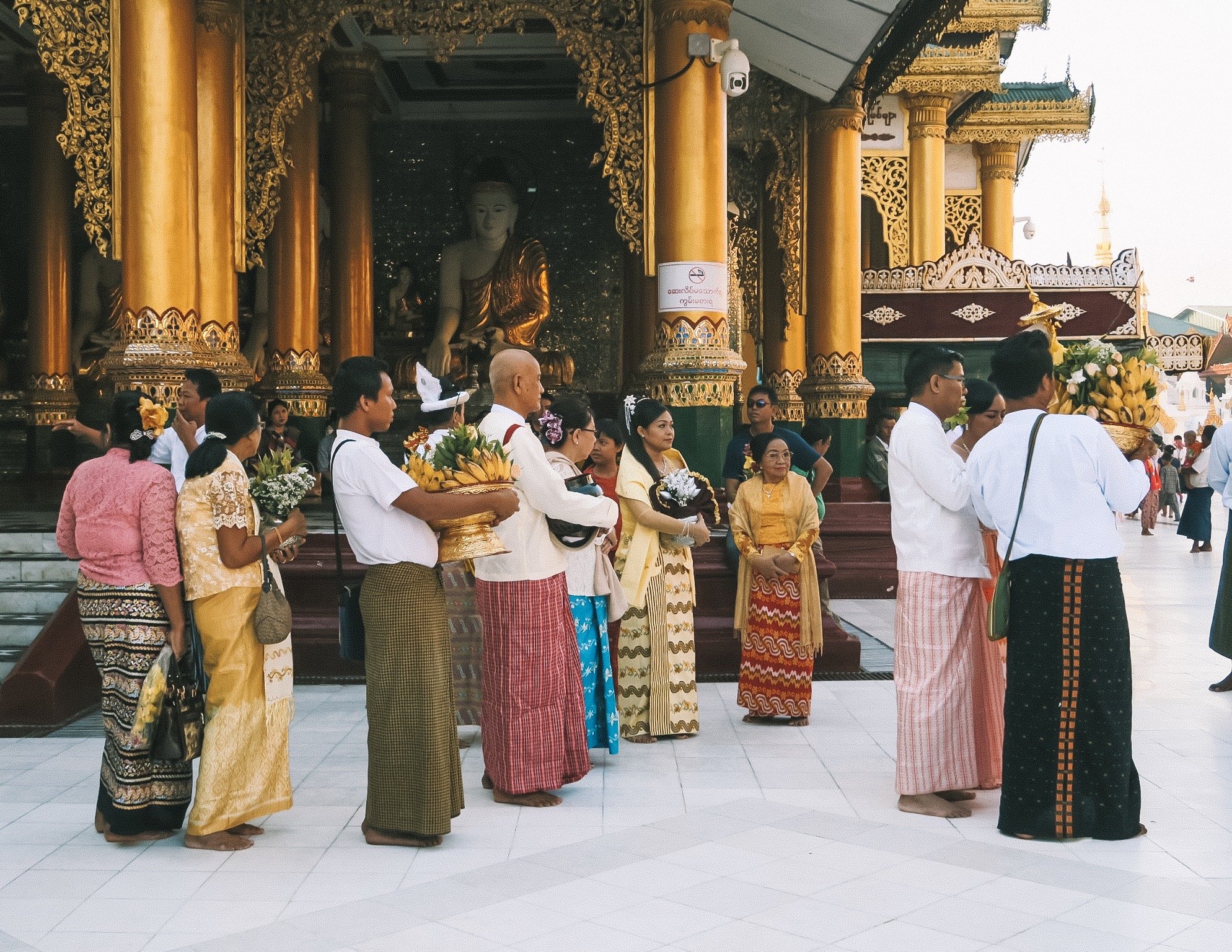
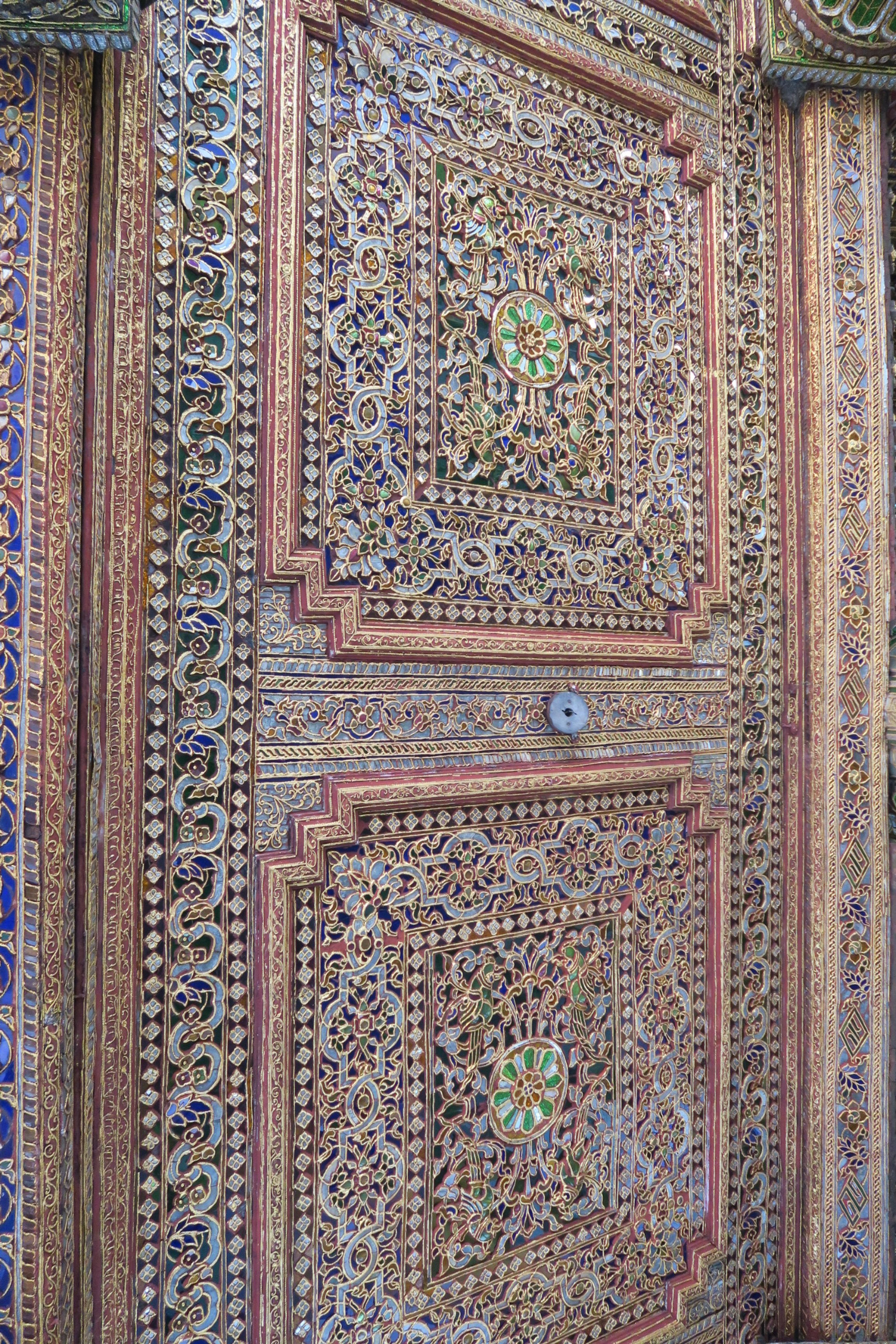

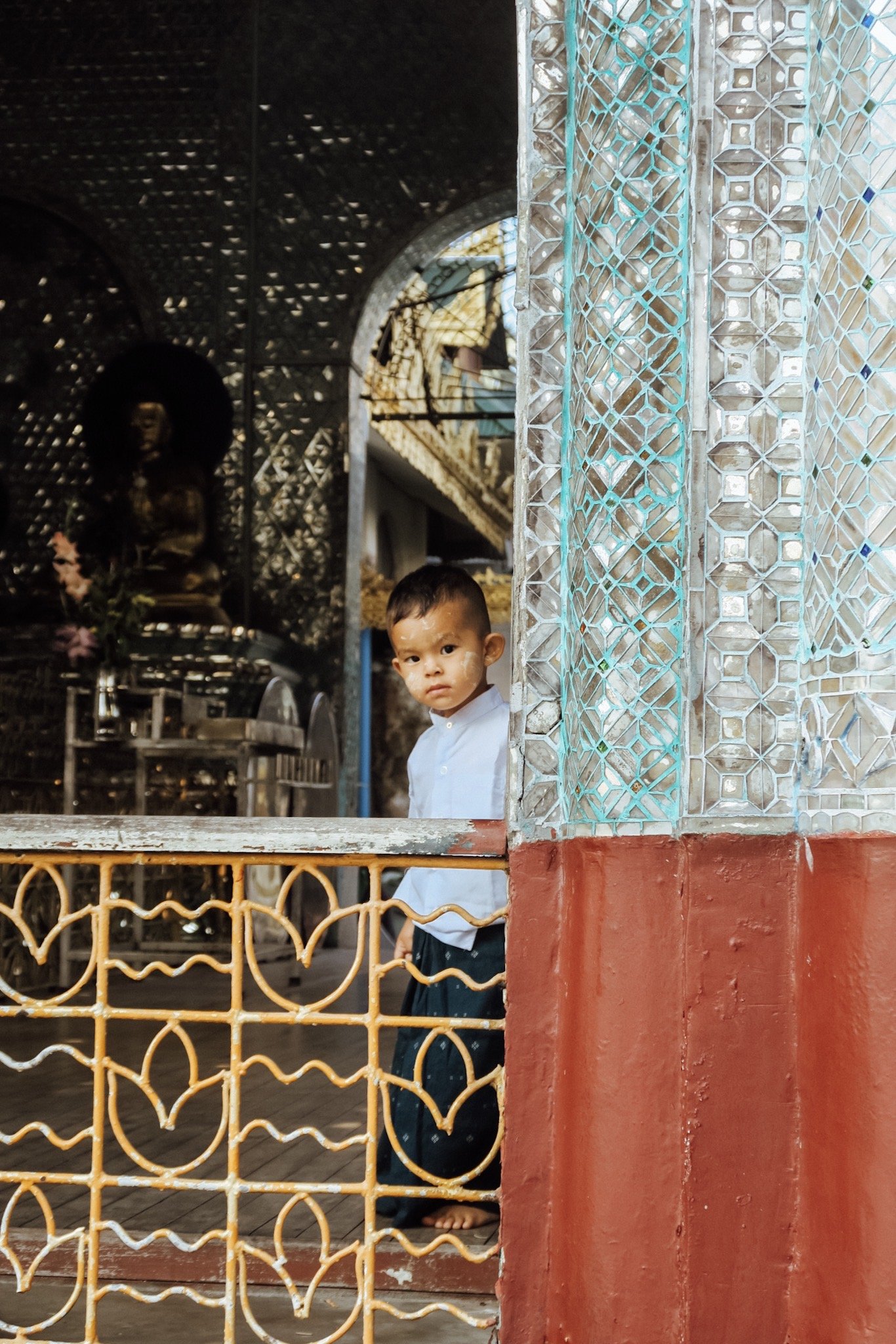
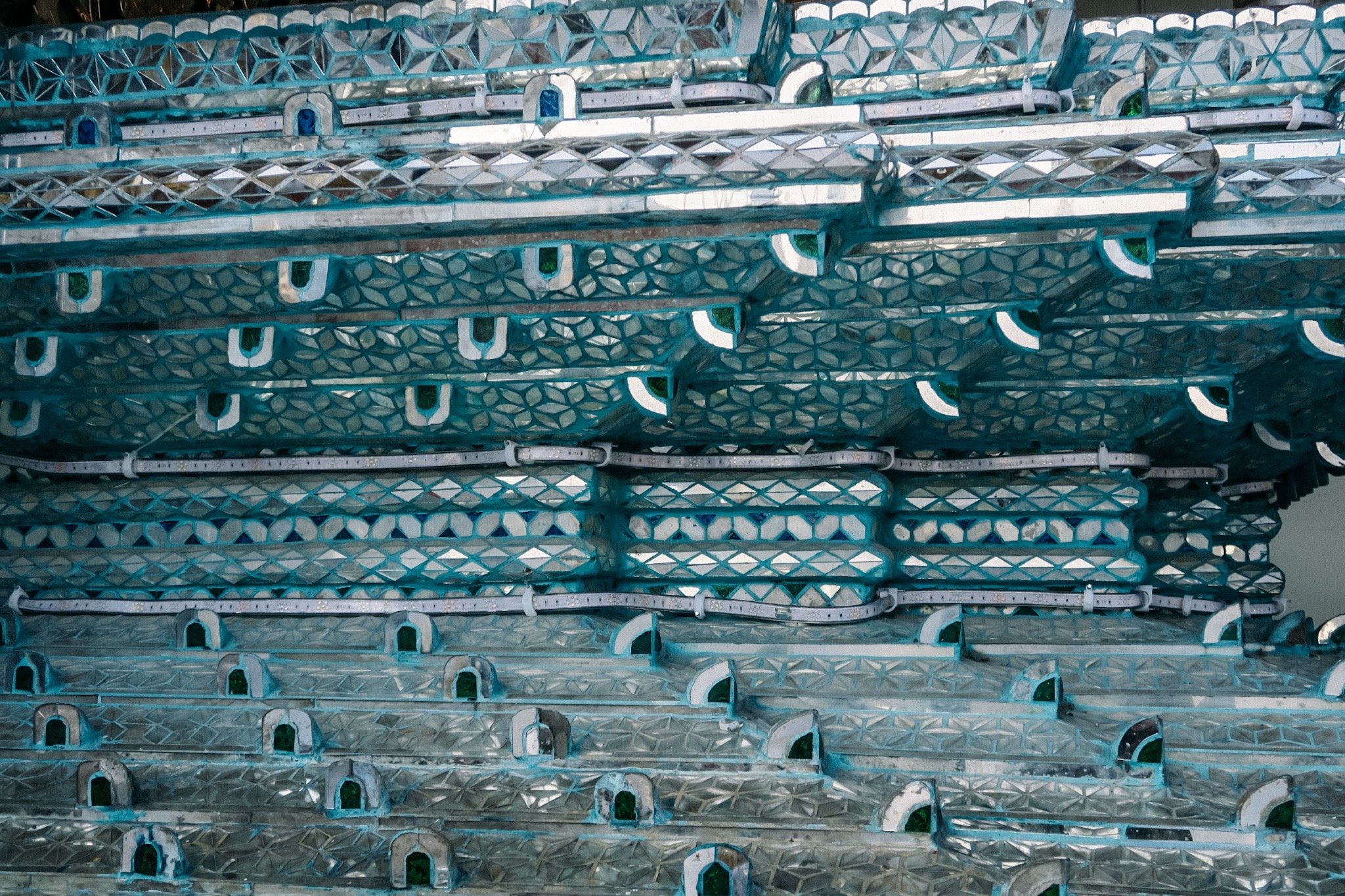
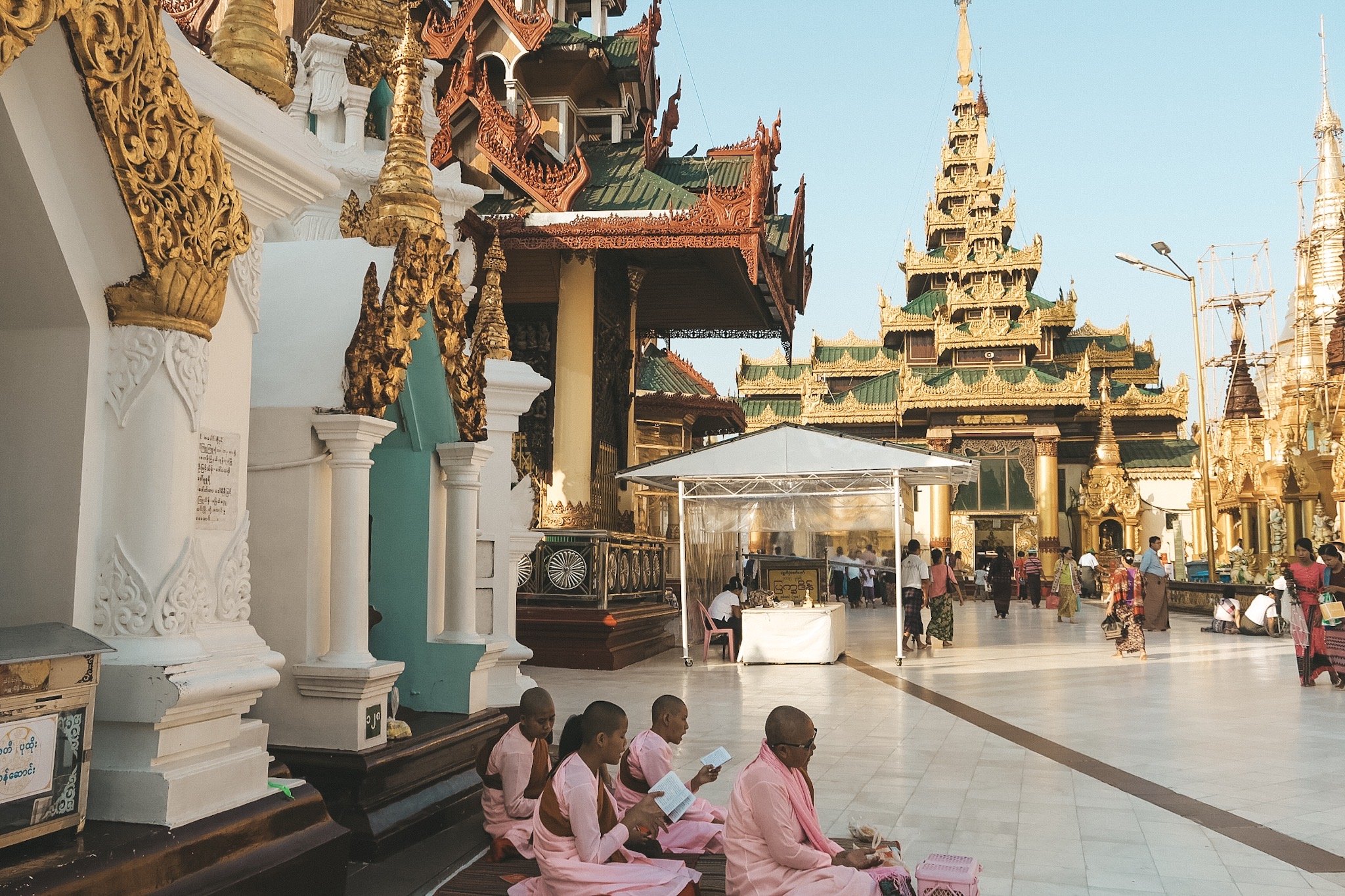
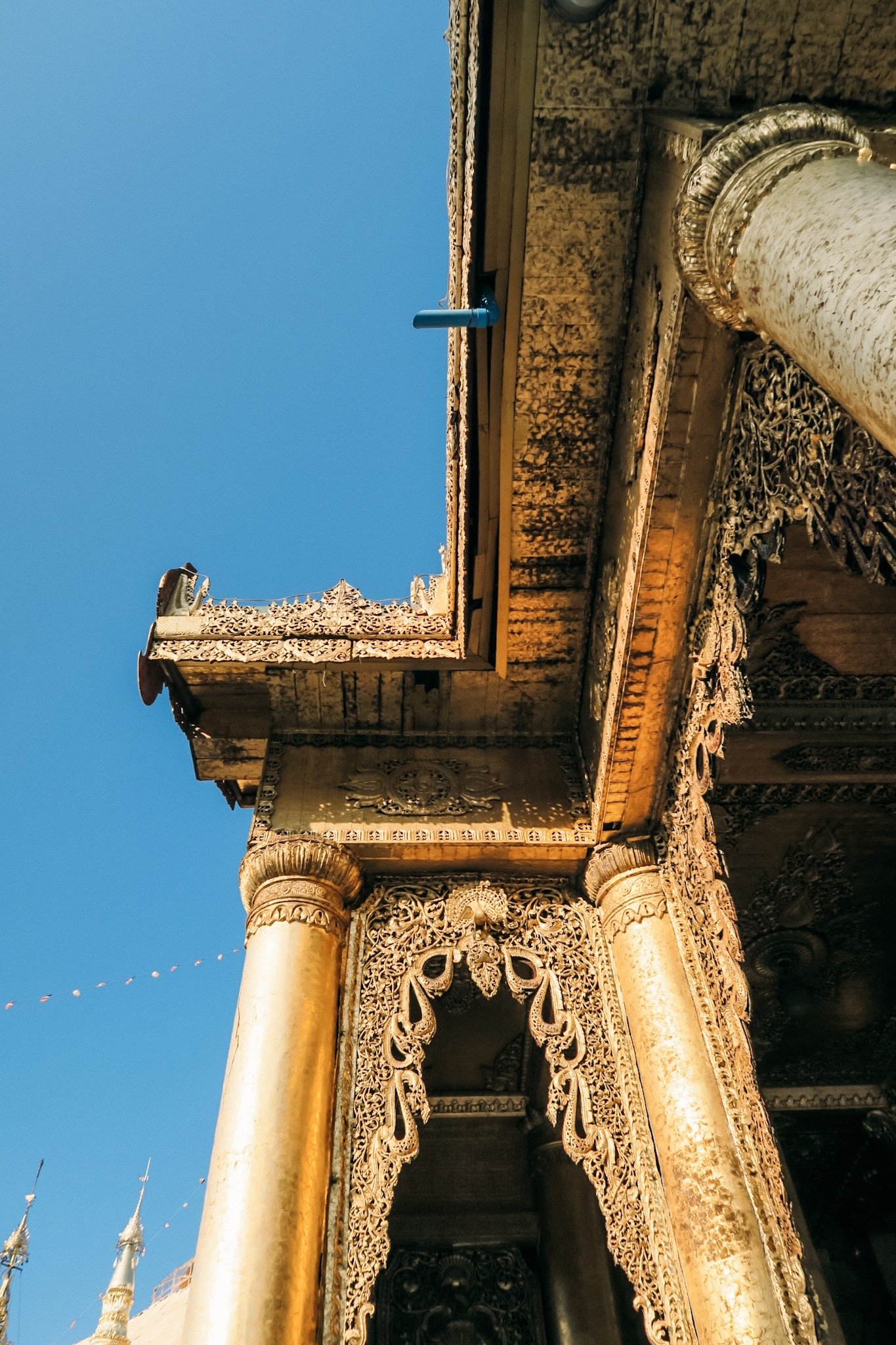
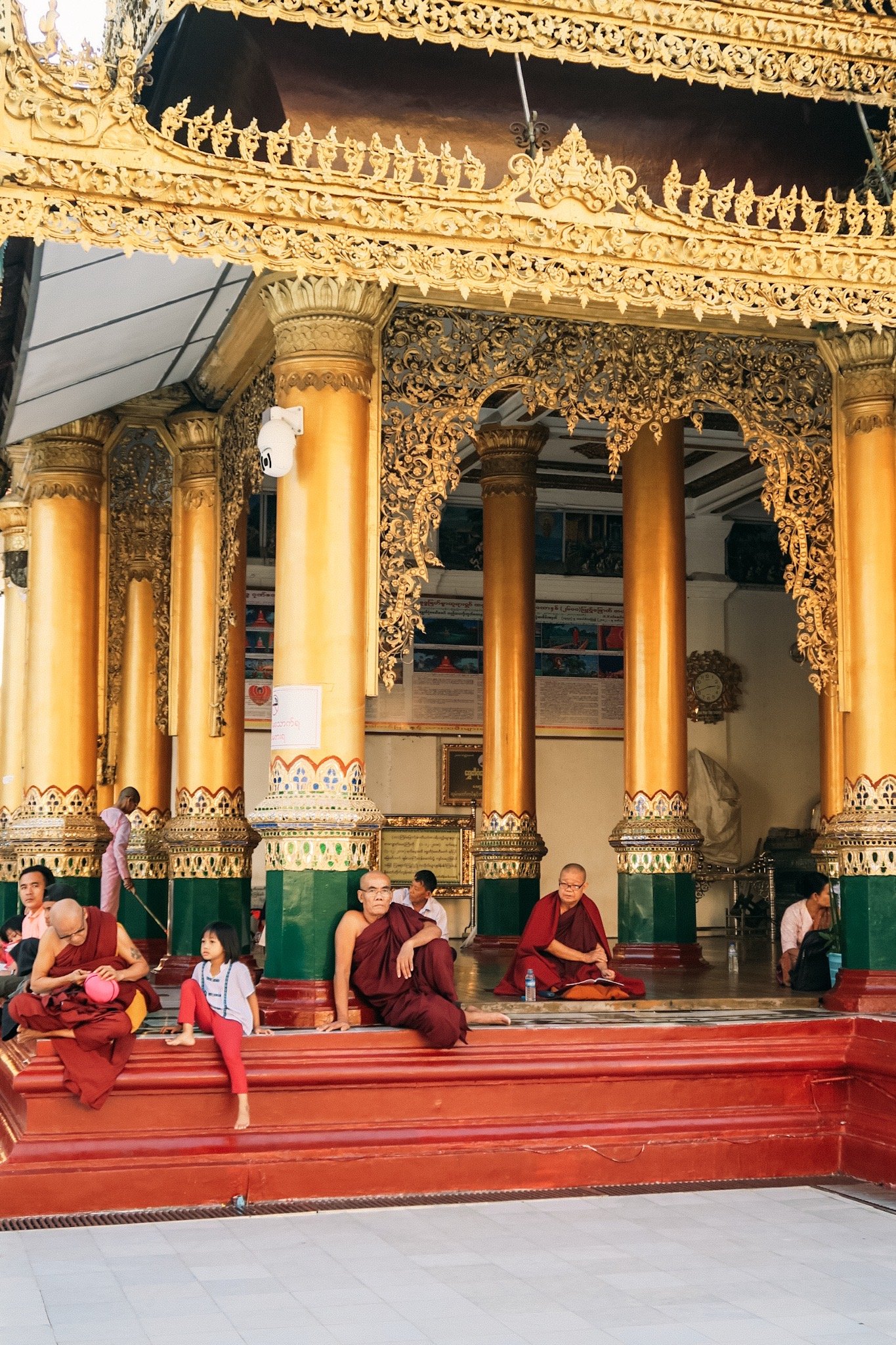
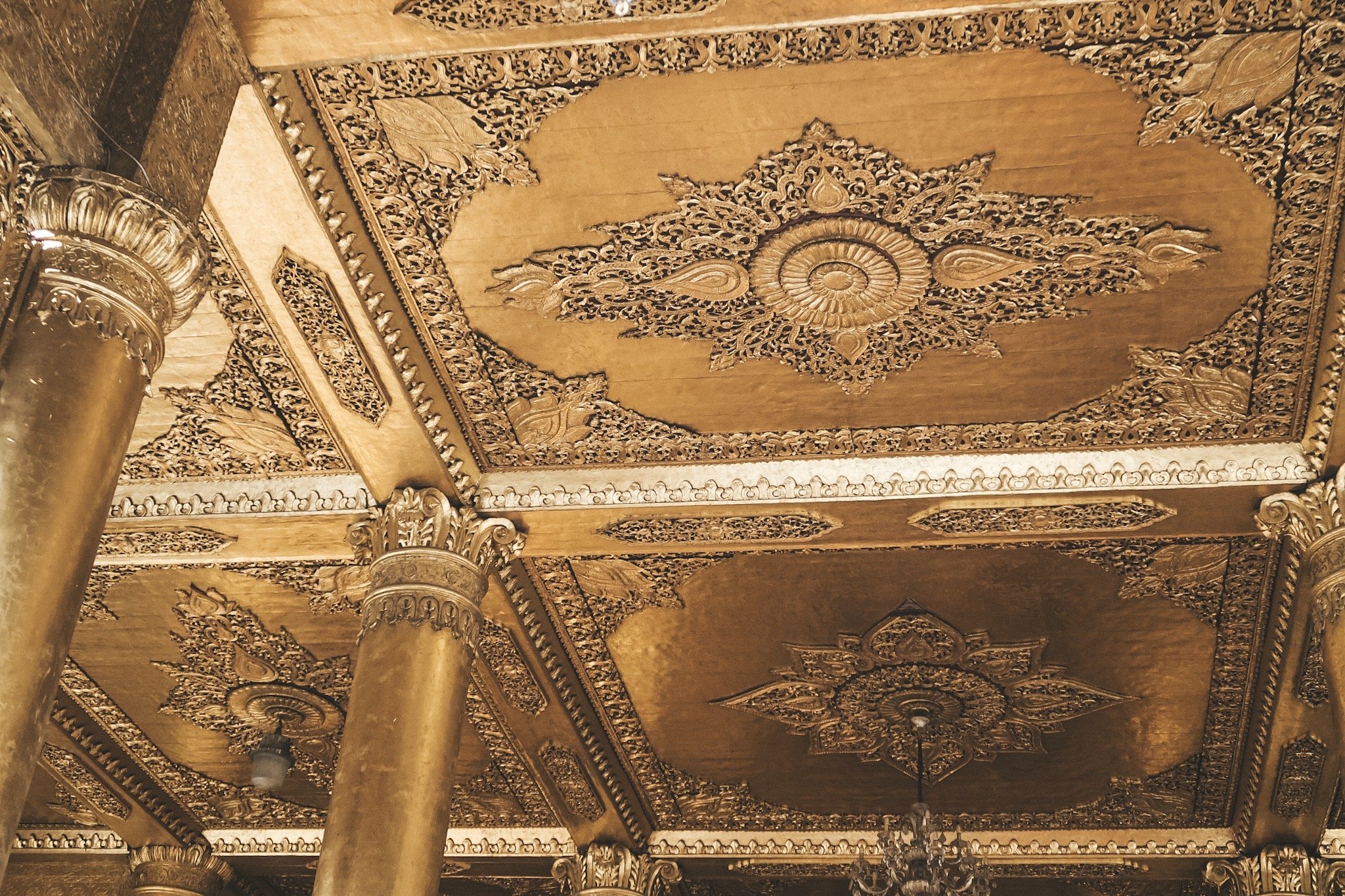
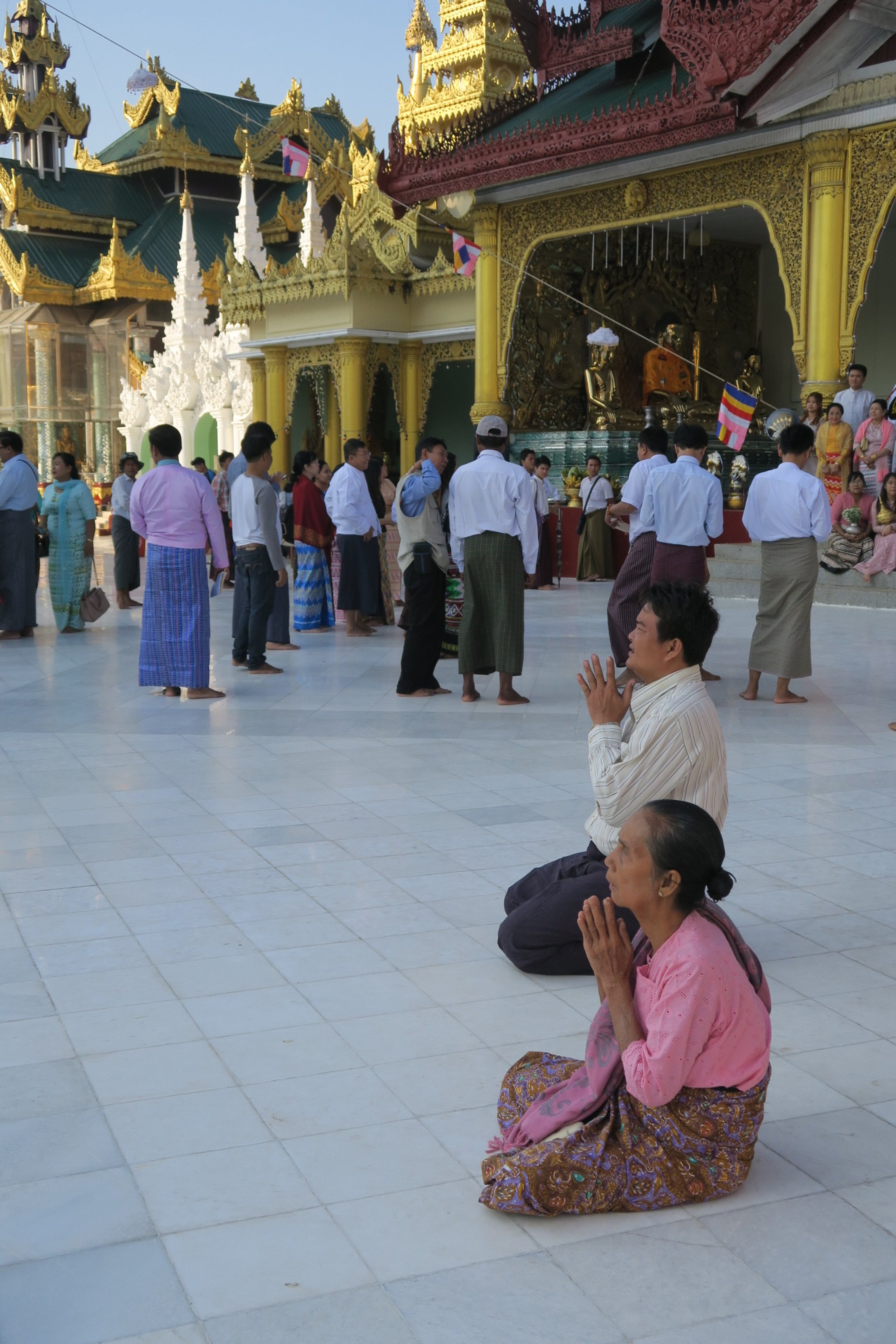
Myanmar was colonised by the British from 1824 to 1948 and Yangon has the highest concentration of colonial buildings in the world. Most of the buildings are still there even though not in the best condition. I definitely recommend exploring some of these colonial buildings such as the Bogyoke Aung San Market, the Secretariat and the Strand Hotel.
I really wanted to join a street food tour while I was in Yangon but unfortunately I didn’t have time. Some friends recommended the Sa Ba Street Food Tour, they do two food tours per day. My friends had taken the morning tour which included tea, pastries, salads, coffee, noodles and many other traditional Yangon dishes. The tour guide spoke great english and explained how everything is prepared as well as the dishes cultural and historic significance. I wish I had managed to book this tour and I definitely will next time I am in Yangon.
My last day in Yangon I went on the circular train. This train ride isn’t that popular among tourists, and I only met a couple of people that weren’t locals while I was there. It is a commuter route that services all the little villages around Yangon. It stops regularly going through many towns, chaotic markets (there are markets on the tracks), jungles, and unfortunately parts where all you can see is trash. Still it’s probably my favourite and definitely most authentic experience in Yangon. The entire loop takes about three hours to complete, and you can also hop off if you see a place you would like to explore. I was catching a bus afterwards so I didn’t have time to hop off but still it was a wonderful experience to have. Here are some photos:
To get a ticket (less than 1 euro) you have to go to the platform, and there you will find a small kiosk, that’s where they are sold, not at the entrance of the station! I loved being on the train, seeing families hop on and off even when the train was moving, seeing people put bags of potatoes, fruits and all sorts of food on the train to take to some other village to sell, even seeing a lady with a massive disk on her head full of all the ingredients she needed to make noodles, which she prepared right in front of you on a moving train. I managed to sit by a door, in order to not miss anything that was happening outside. I met two lovely German girls and we sat together admiring the locals and their everyday lives.
The food in Myanmar was a very pleasant surprise. It was very different to other South East Asian countries food and I loved everything about it. Here is a list of my favourite restaurants in Yangon:
Burma Bistro: Great traditional food with a modern twist. The restaurant is located in an old colonial building and the decoration is amazing - old antique furniture, brick walls and beautiful tiled floors. I loved the food here.
Gekko Restaurant: Japanese restaurant, very cheap, very big choice and really tasty! Very nice atmosphere and friendly staff.
Rangoon Tea House: This is one of Yangon’s most famous restaurants. There is a mix of locals, tourists and people from Europe or Australia that live and work in Yangon. I loved the decoration here as well, and the food was amazing. Similarly to Burma Bistro, traditional with a modern twist. I especially loved the salads. You can also have coffee, tea and great cocktails!
Before coming to Yangon, I did some research trying to find some textile workshops. Unfortunately, educational tourism doesn’t really exist in Myanmar. However, I found some amazing shops for handmade items and textiles.
Here is my list:
Pomelo for Myanmar: This shop is a fair trade marketplace supporting social businesses throughout Myanmar. Every purchase made contributes to social and economic change in some of Myanmar's most marginalised communities and helps to support unique skills and craftsmanship. All items have a story and I loved this shop and the staff. I got a lot of presents for loved ones from here and I definitely recommend you visit.
Scott Market (Bogyoke Aung San Market): A colonial building that houses a market selling antiques, paintings, handicrafts, textiles, herbs, jewellery and all kinds of souvenirs. There is also a food market in here.
Sunflowers Organic Dye Textiles & Crafts Shop: Probably my favourite shop. The people that worked there didn’t speak english and there was a power outage so there was no light! But they were so friendly turning on their phones to shine light on all the fabrics for me to choose. It’s a bit hard to find this shop and I actually went there twice before realising where it is and that it’s open. There is a sign but the shop is actually upstairs which isn’t clear by the sign. I got lots of naturally dyed and un-dyed fabrics from here.
Yangoods: There are a few Yangoods shops in Myanmar. They sell lots of different items, taking inspiration from traditional Burmese art and translating them into bags and homeware. I wasn’t a big fan of their textiles, but I loved the jewellery — simple, yet elegant. I got a lot of souvenirs from this shop.
BAGAN
Next stop was Bagan. I travelled around Myanmar mostly by bus. The company I used was JJ Express, I highly recommend them, they offered water and some snacks, there were two bathroom stops, the seats were very comfortable and you also have your own personal tv with movies and series — and all this for 20 US dollars.
Bagan is probably the most famous tourist destination in Myanmar, probably because of the hot air ballon and sunrise photos. There are over 2000 pagodas in Bagan. I loved Bagan and it is as magical as it appears to be in the photos. I stayed there for two nights and I wish I stayed for more. I stayed at the Areindmar hotel in New Bagan. The room was really spacious and I loved the decor. They also have a pool and really nice breakfast as well as lunch and dinner. The staff were super nice and helpful. I arrived at three in the morning and even though I was supposed to check in at 10 in the morning, they gave me my room at three with no extra charge.
The main thing to do in Bagan (except from riding a hot air balloon which I couldn’t do — it costs around 300 US dollars) is temple hopping. There are almost no cars in Bagan, and the way to go temple hopping is to rent an electric bike. Even though everyone there kept telling me to try and that it’s not hard I chose to not rent one since I’ve never driven anything before. After talking to the receptionist she arranged for a tuk tuk driver to take me around. It was really nice because he also told me historical and cultural facts about the temples and Myanmar in general.
Between the 9th and 13th century over 10,000 temples were built in Bagan. However, a series of earthquakes destroyed most of these temples. Today, around 2,200 are standing. Bagan is actually not a UNESCO World Heritage Site yet, which I found very surprising. A few years ago you were allowed to climb up most of these pagodas but due to earthquakes and lots of accidents you aren’t allowed to climb to most of them anymore. However, I actually climbed on two thanks to my driver! I told him I really wanted to do this and he showed me two temples where it’s still allowed. So firstly here are some photos from one of the two climbing pagodas, the sunrise and the hot air balloons:
A magical and unforgettable experience. Next I am going to make a list of some of the pagodas I visited however I recommend just stopping wherever you can! Each pagoda is unique and beautiful. Here is the list of most of the ones I visited, however there are lots of small ones that don’t have names:
Ananda Temple: Probably one of my favourite temples. I almost lost my sandals here, so make sure you remember where you entered from! The Buddhist temple consists of four standing Buddhas.
Bu Paya: This temple is right next to the Ayeyarwady River. The original pagoda was completely destroyed in the 1975. As result of this earthquake, the pagoda broke into pieces and fell into the river. It was, however, fully reconstructed using modern materials. The view is really nice and there are lots of locals here coming by boat to pray.
Gawdawpalin: The Gawdawpalin Temple is the second tallest temple in Bagan. The temple was heavily damaged during the 1975 earthquake but was reconstructed in following years.
Htilominlo
Khaymingha Pagoda
Lawka Nanda
Maha Bodhi Phaya
Pyathetgyi Pagoda
Shwegu Gyi Phaya
Shwesandaw Pagoda
Sulamani Temple
Tha Beik Hmauk Gu Hpaya
Thatbyinnyu
Here are some photos:
Bagan has lots of restaurants. I really recommend trying different curries while you are there. There lots of family run restaurants in old Bagan and food is really cheap. One of my favourite restaurants was Royal Restaurant which had amazing Indian food.
The people of Bagan are so friendly and Myanmar was actually the only place where no one followed me around trying to convince me to buy stuff. Artisans are happy to explain how they make things and they are usually making things like puppets, jewellery and lacquerware while at their stands.
In the following photos you can see that a lot of people have a yellow paste on their cheeks. This is called Thanaka and it is a yellowish-white paste made from ground bark. It is a distinctive feature of the culture of Myanmar, usually women and girls (sometimes boys too) apply it to their face and sometimes the arms. Thanaka cream has been used by Burmese for more than 2000 years. Thanaka gives a cooling sensation and provides protection from sunburn and it is also believed to help remove acne and promote smooth skin.
I am so happy I got to visit Myanmar, it’s a wonderful place. After Bagan I went to Inle Lake and Mandalay. More about my trip there next week.
Have a nice week,
xx
Christiana
